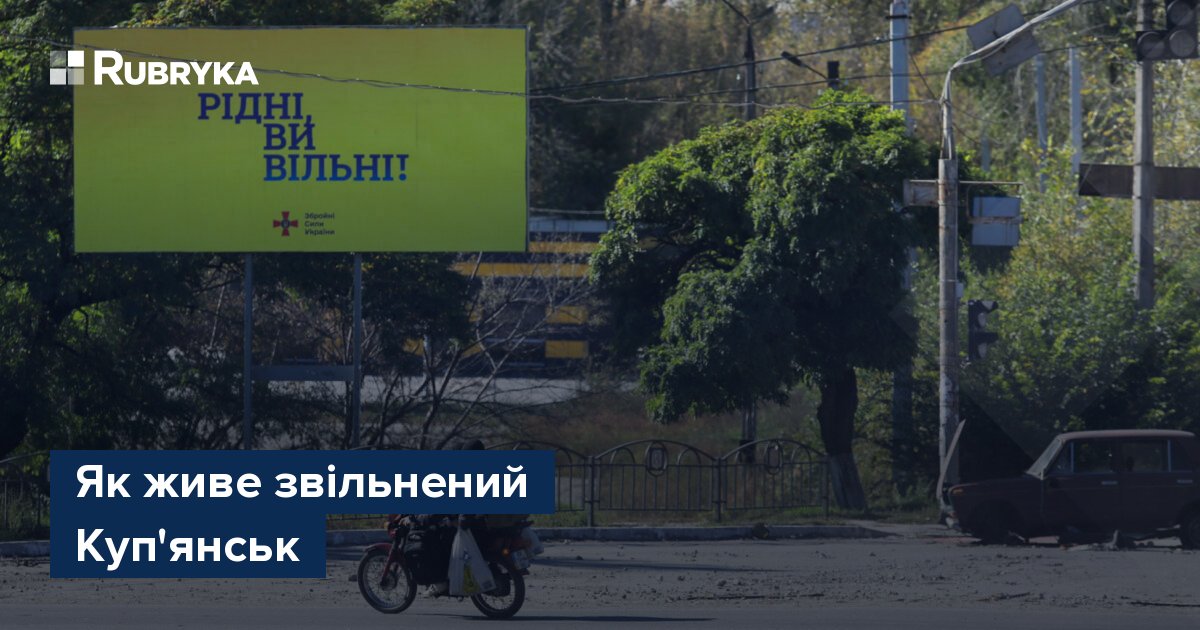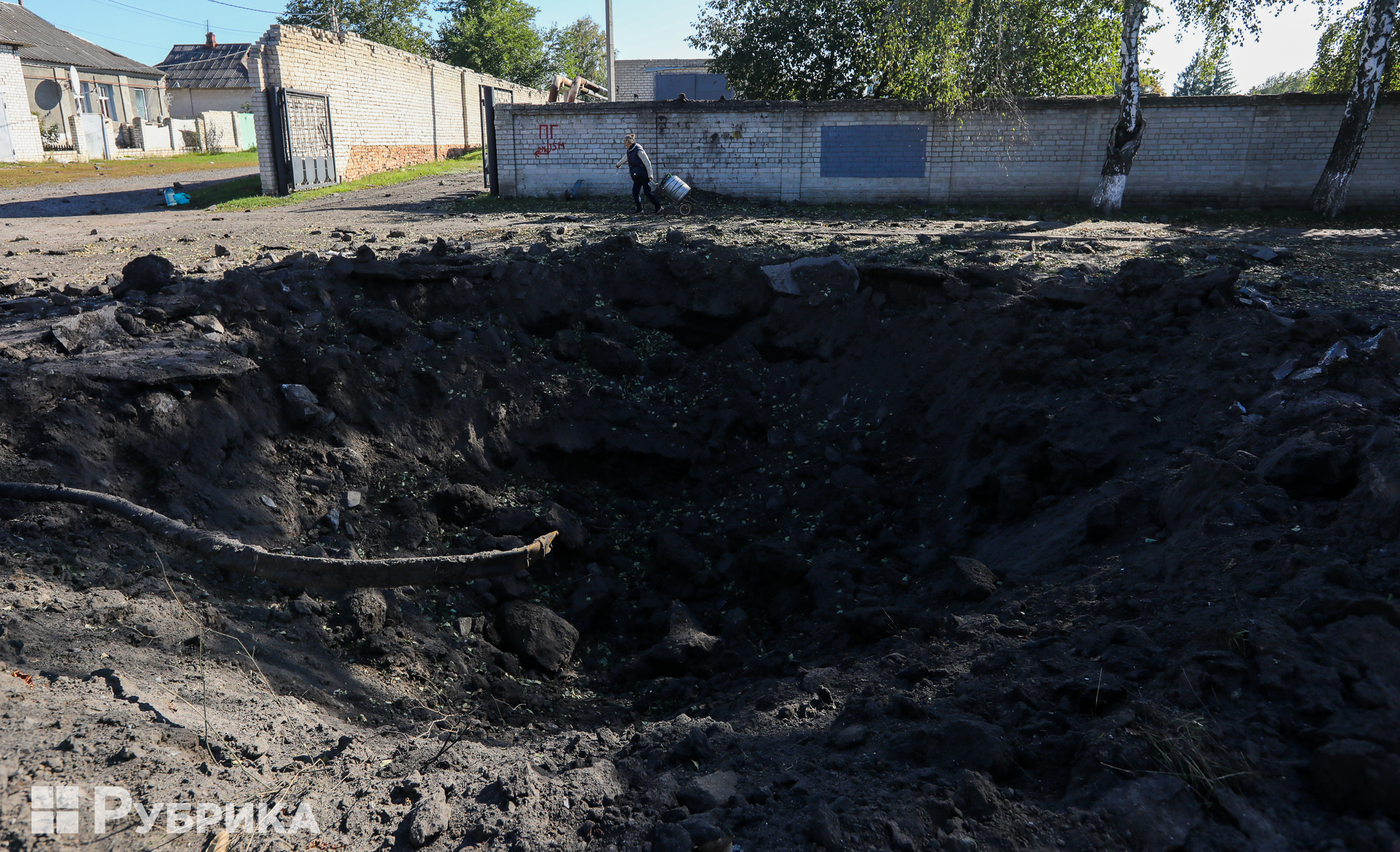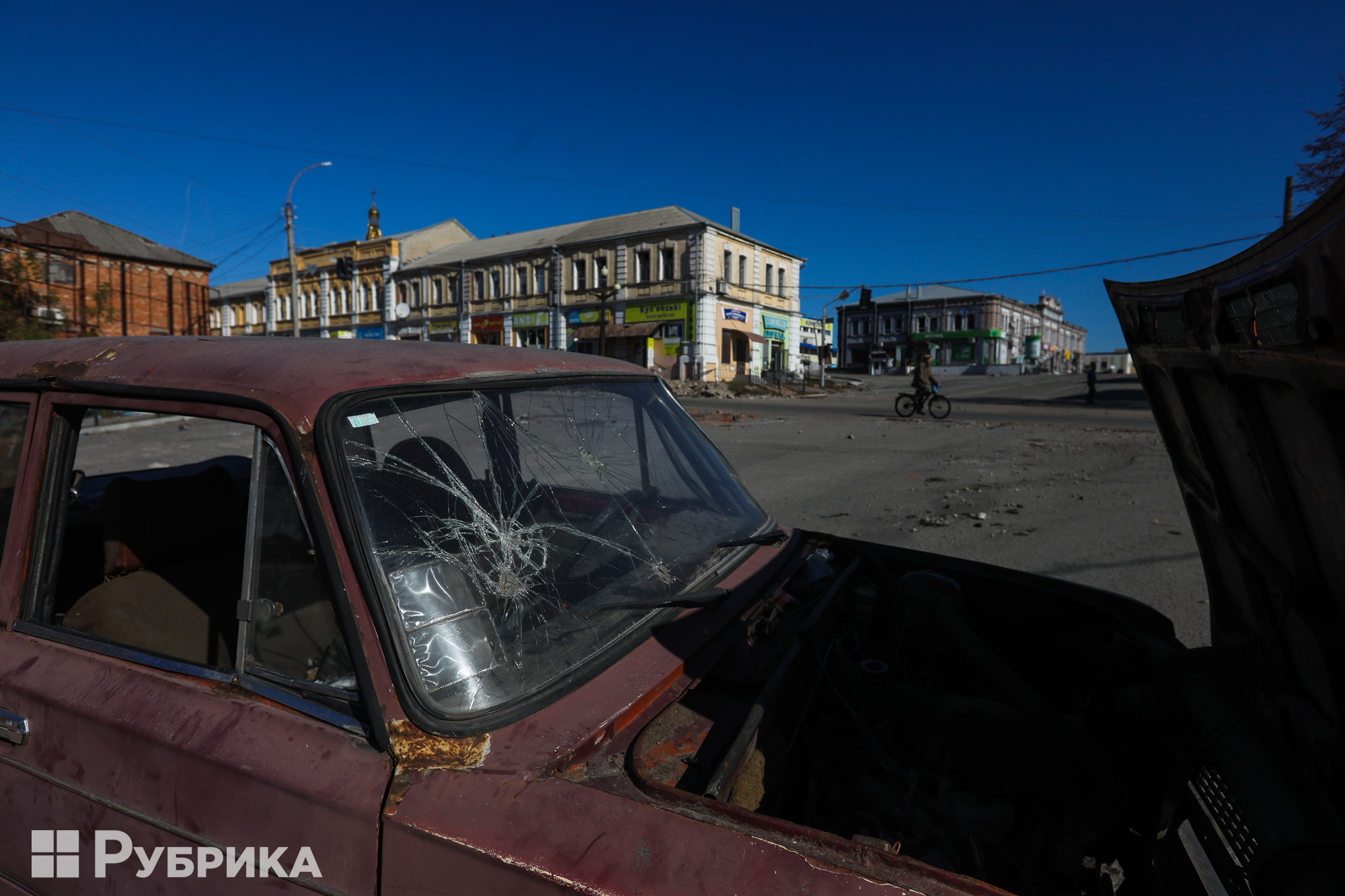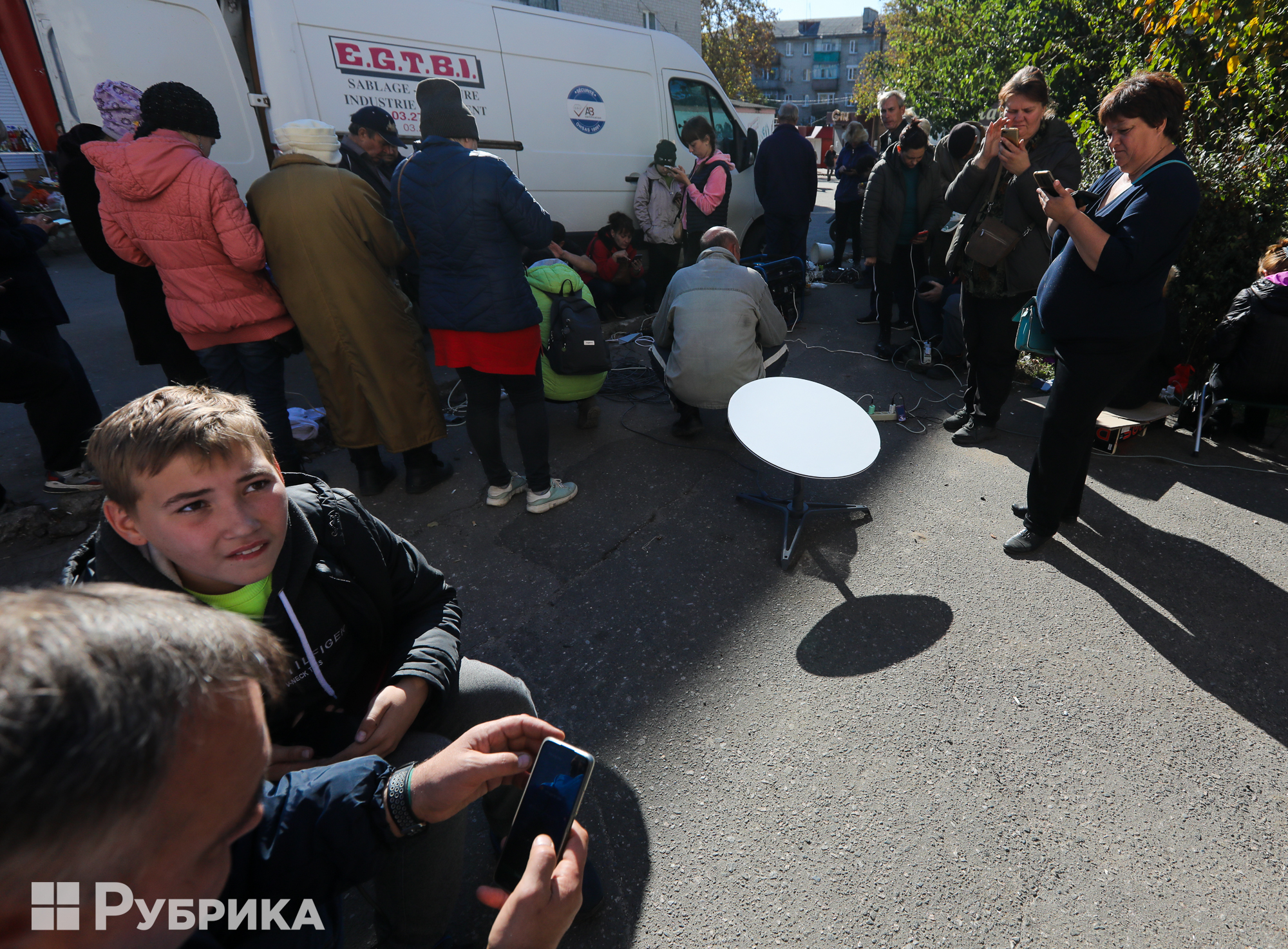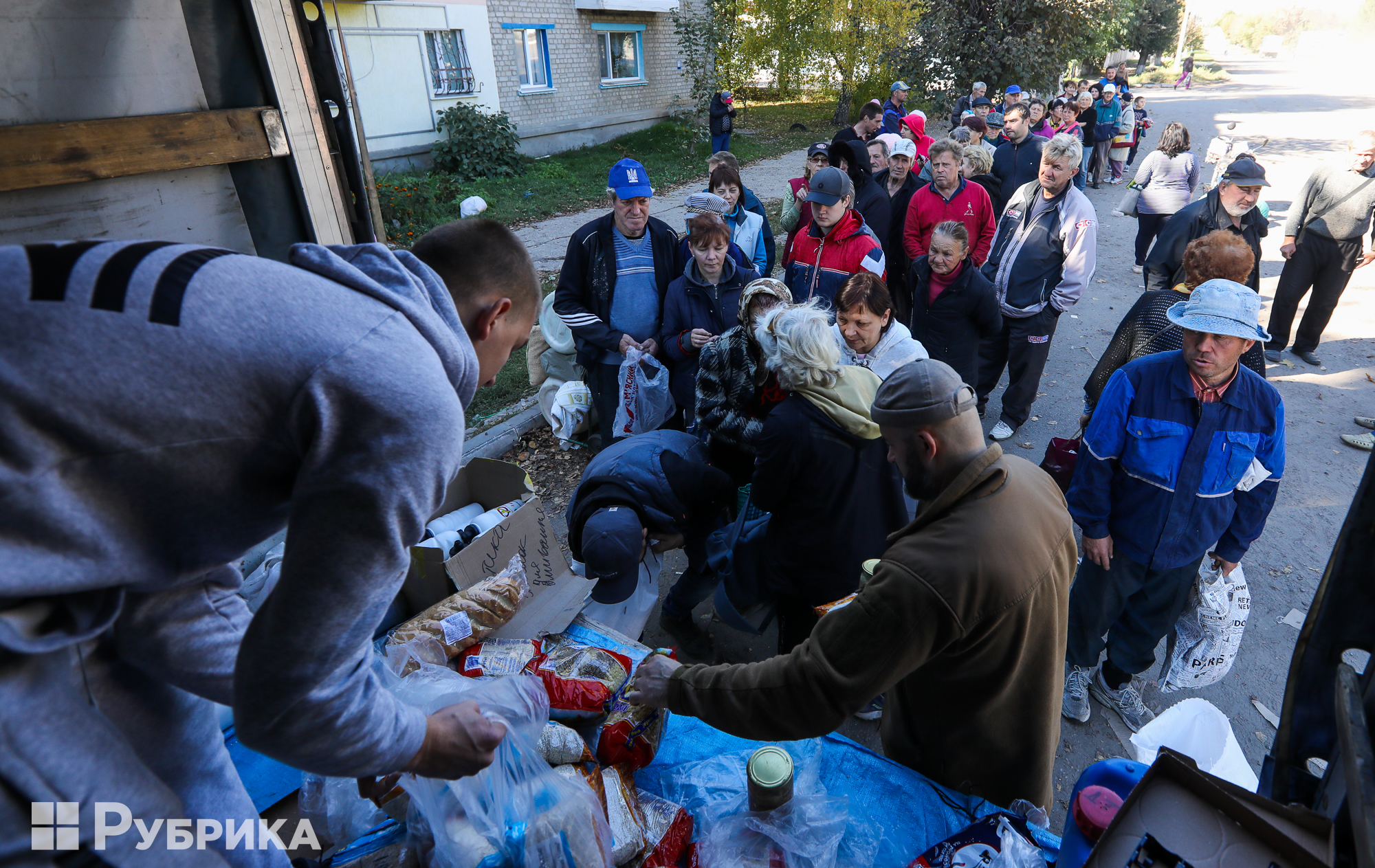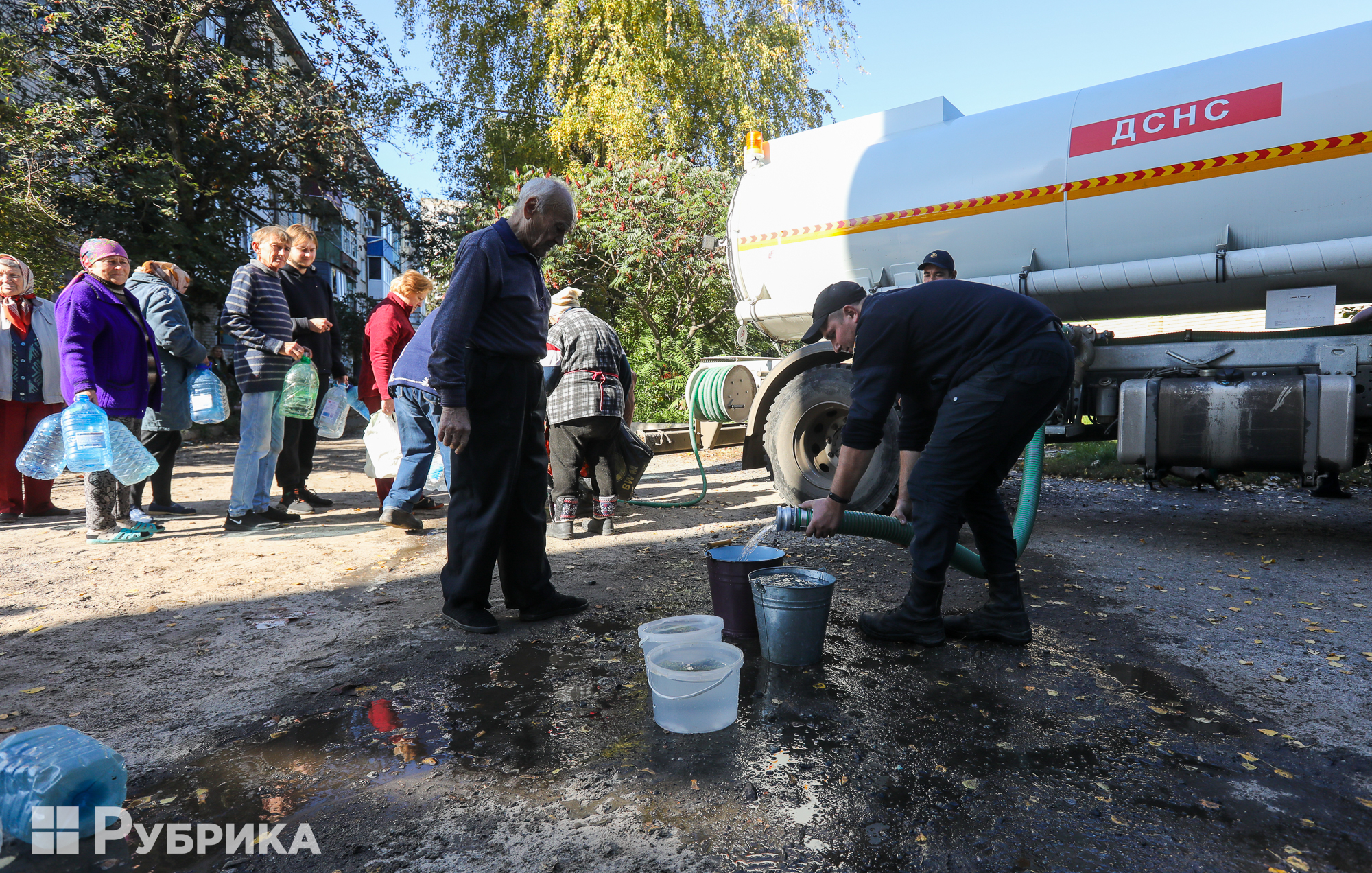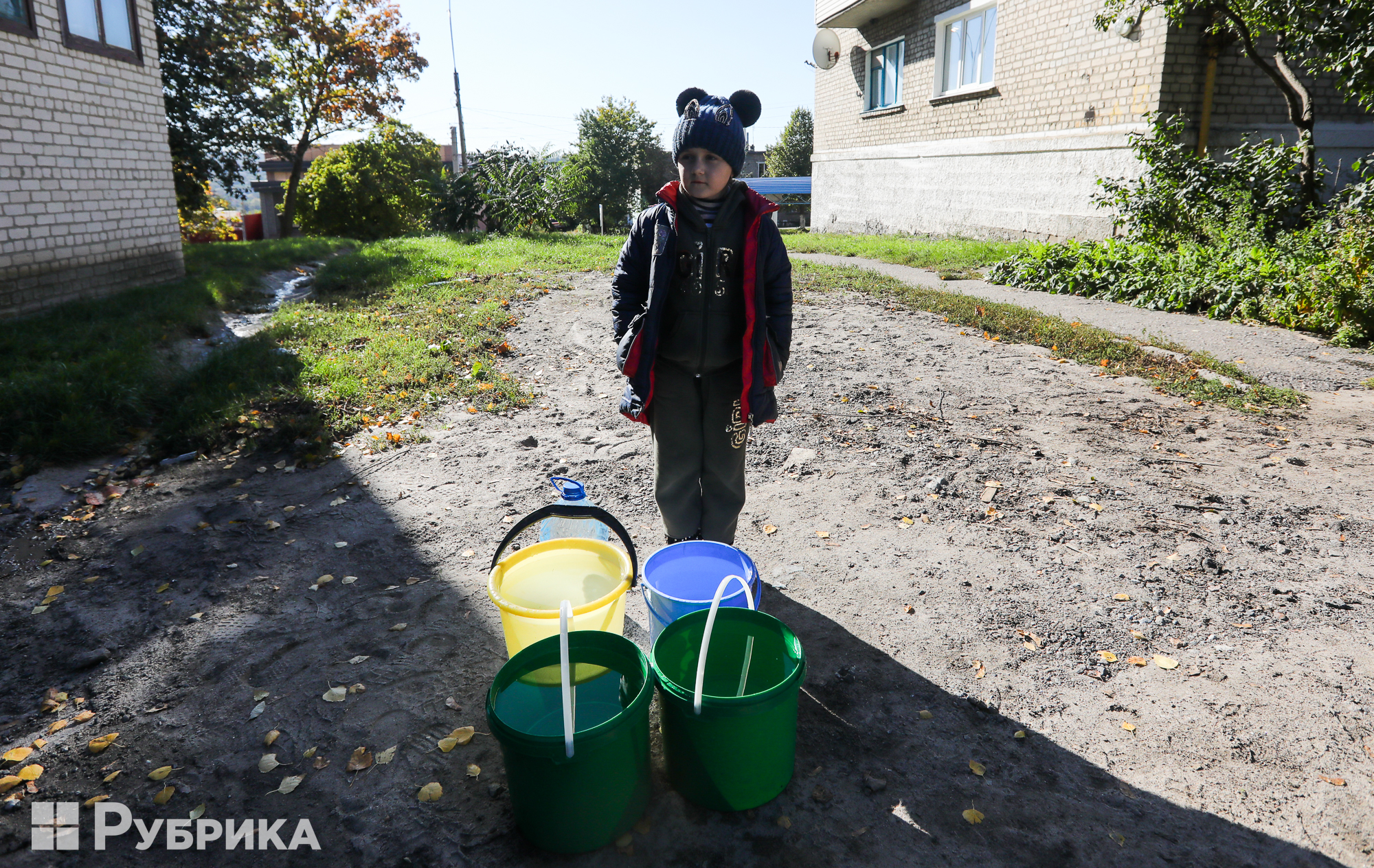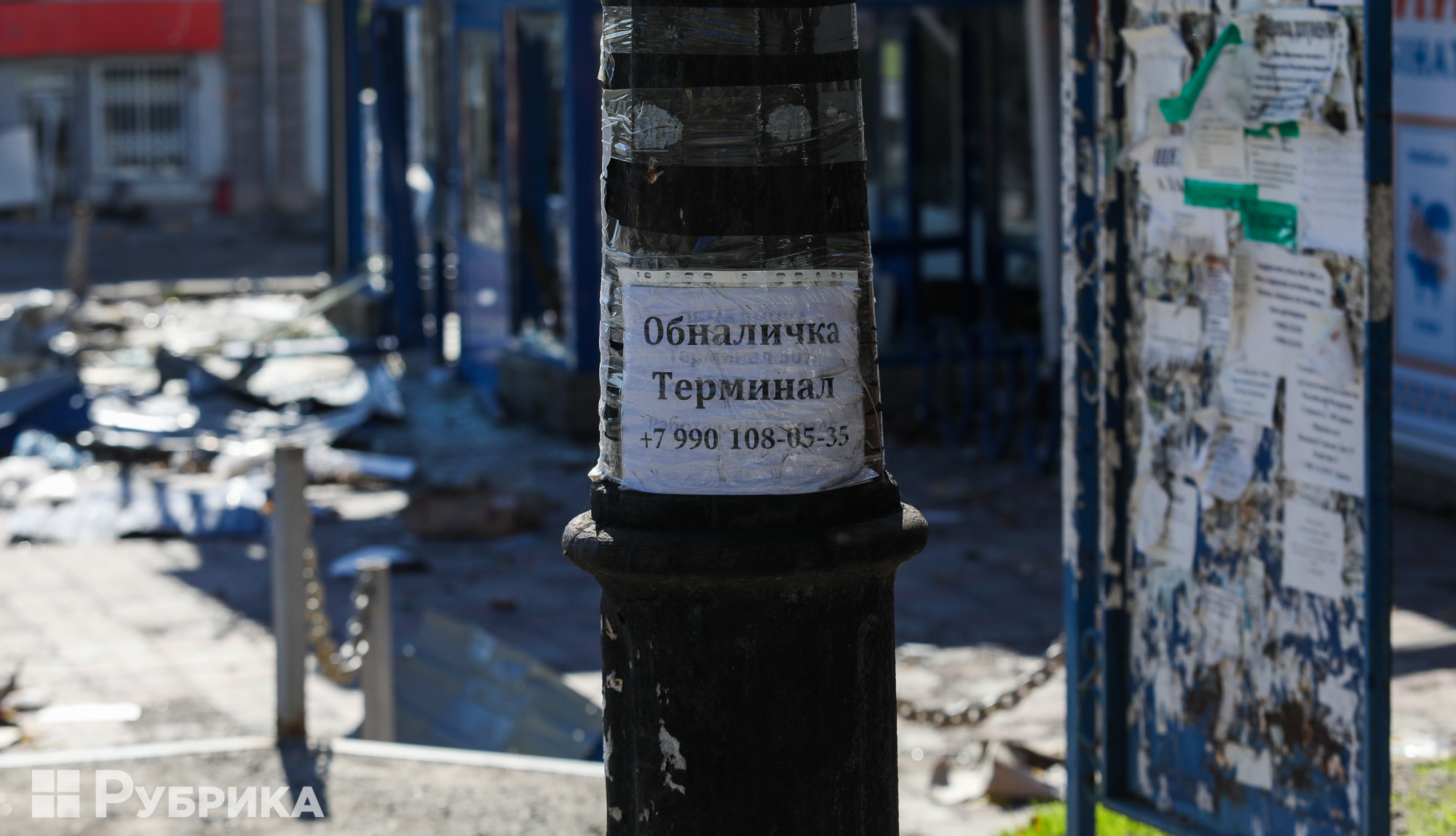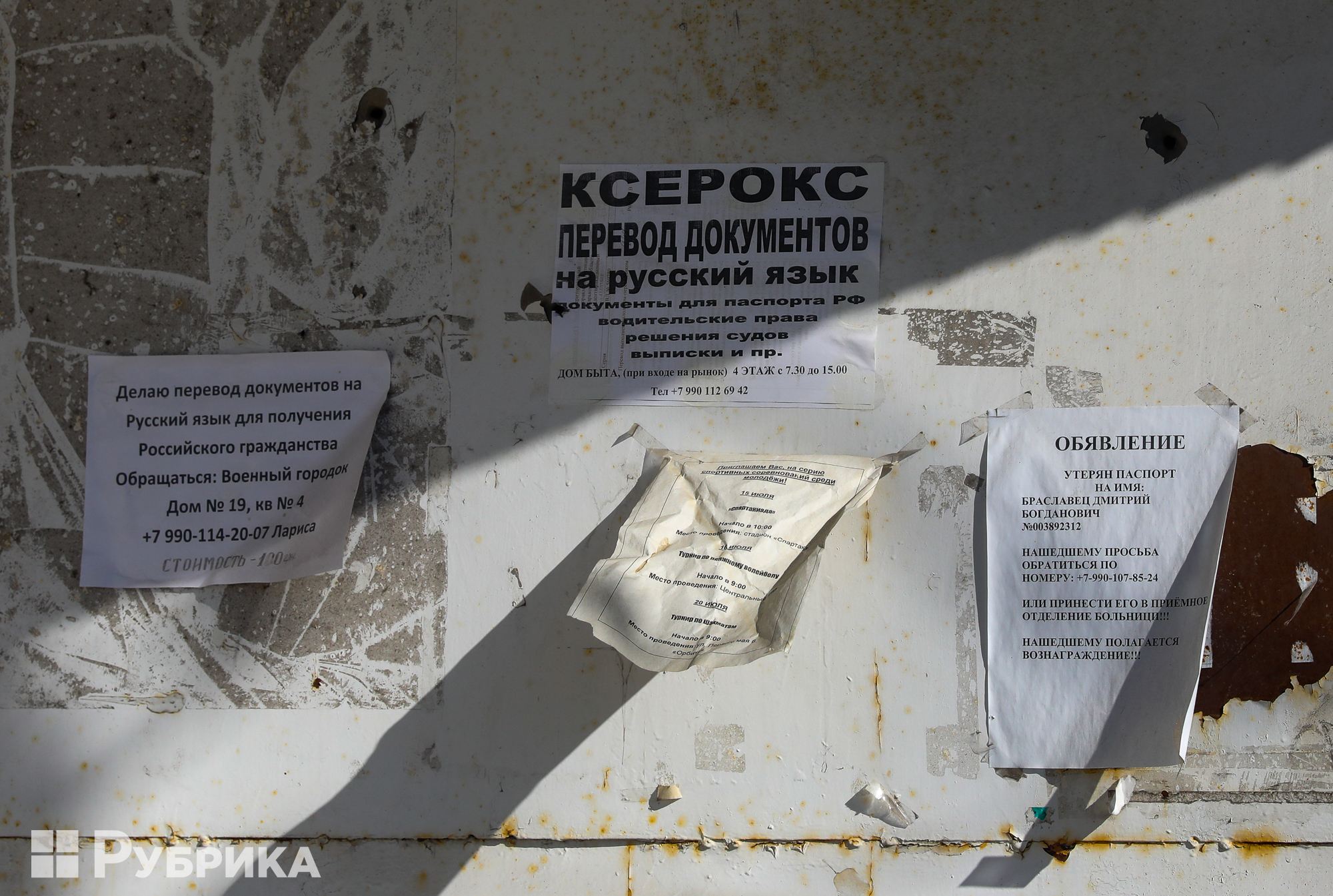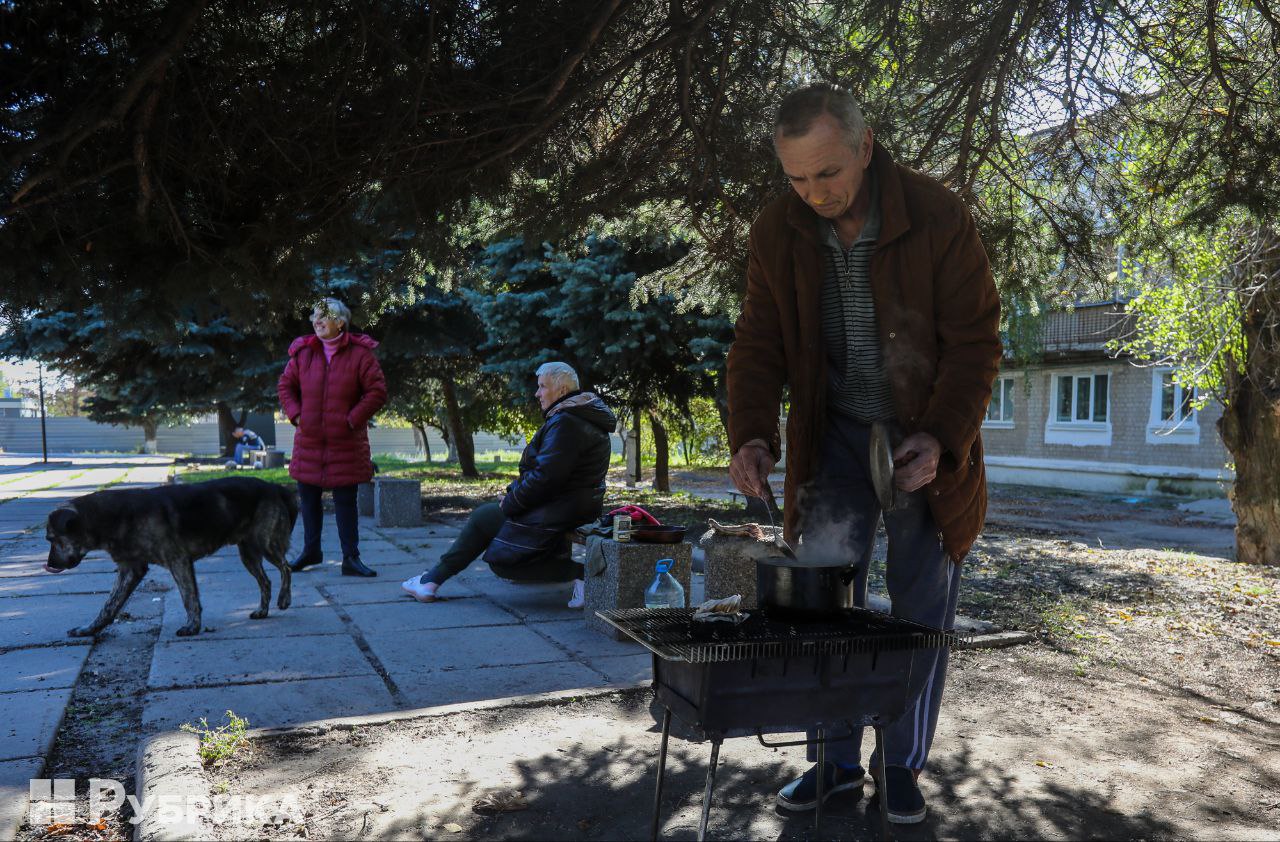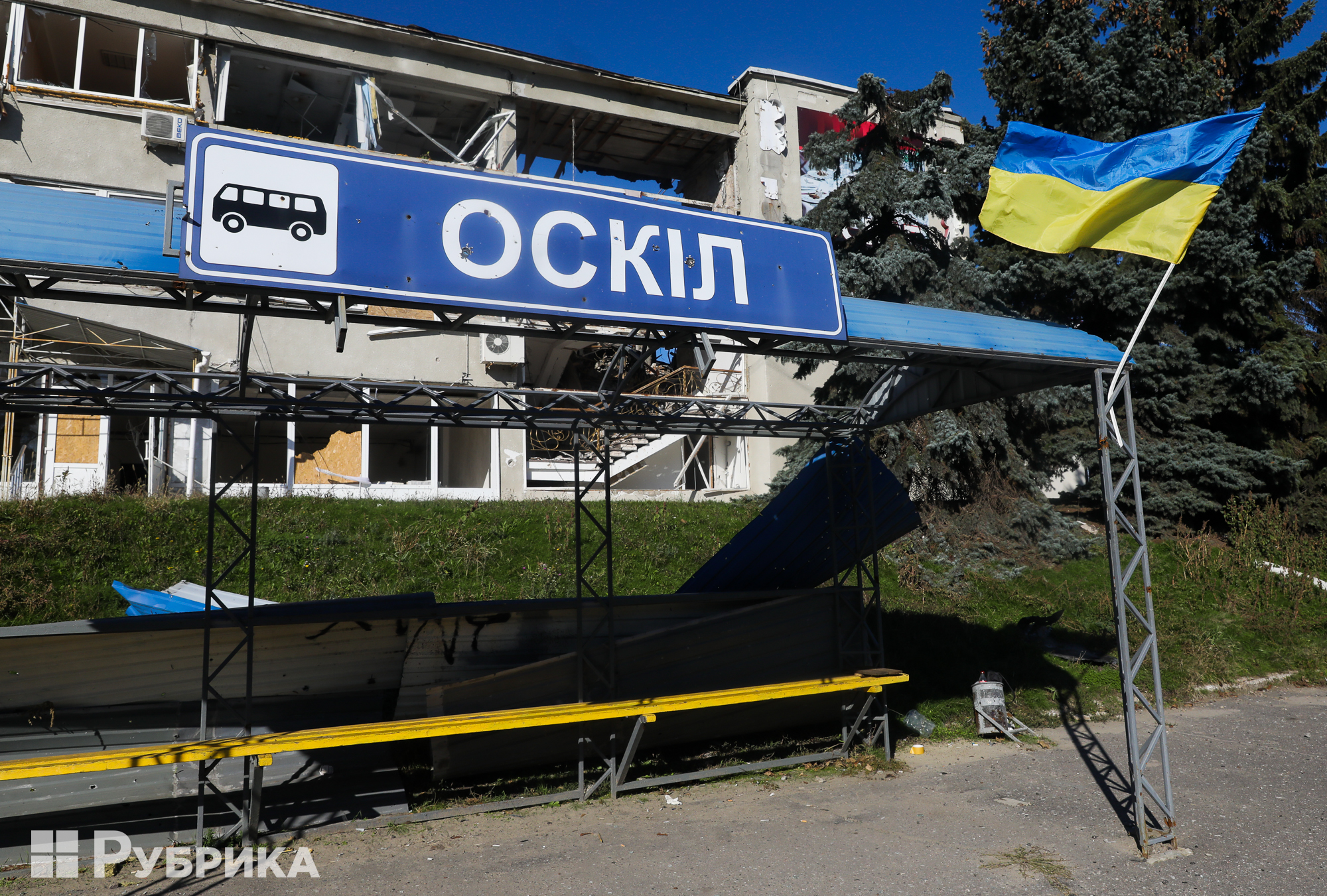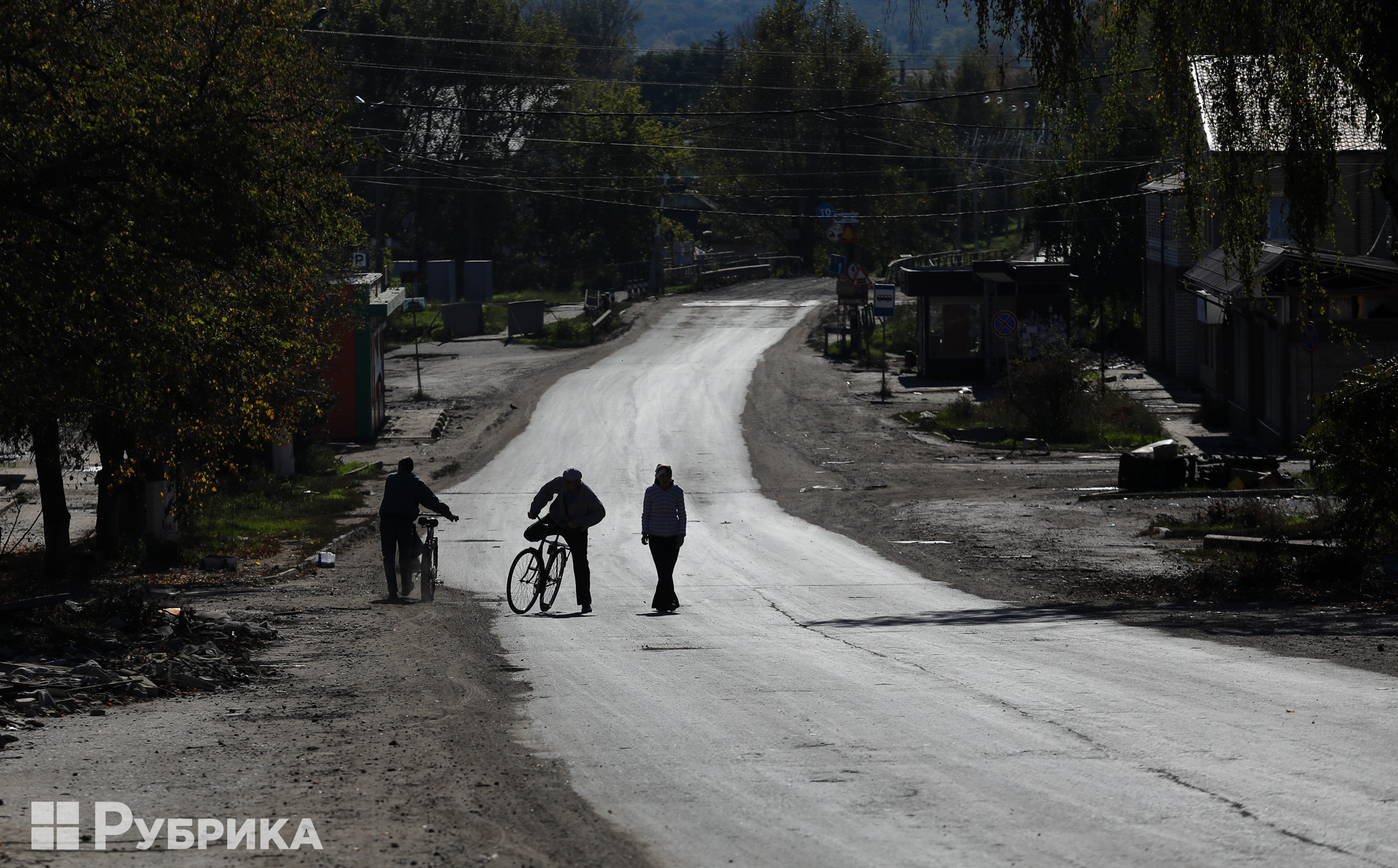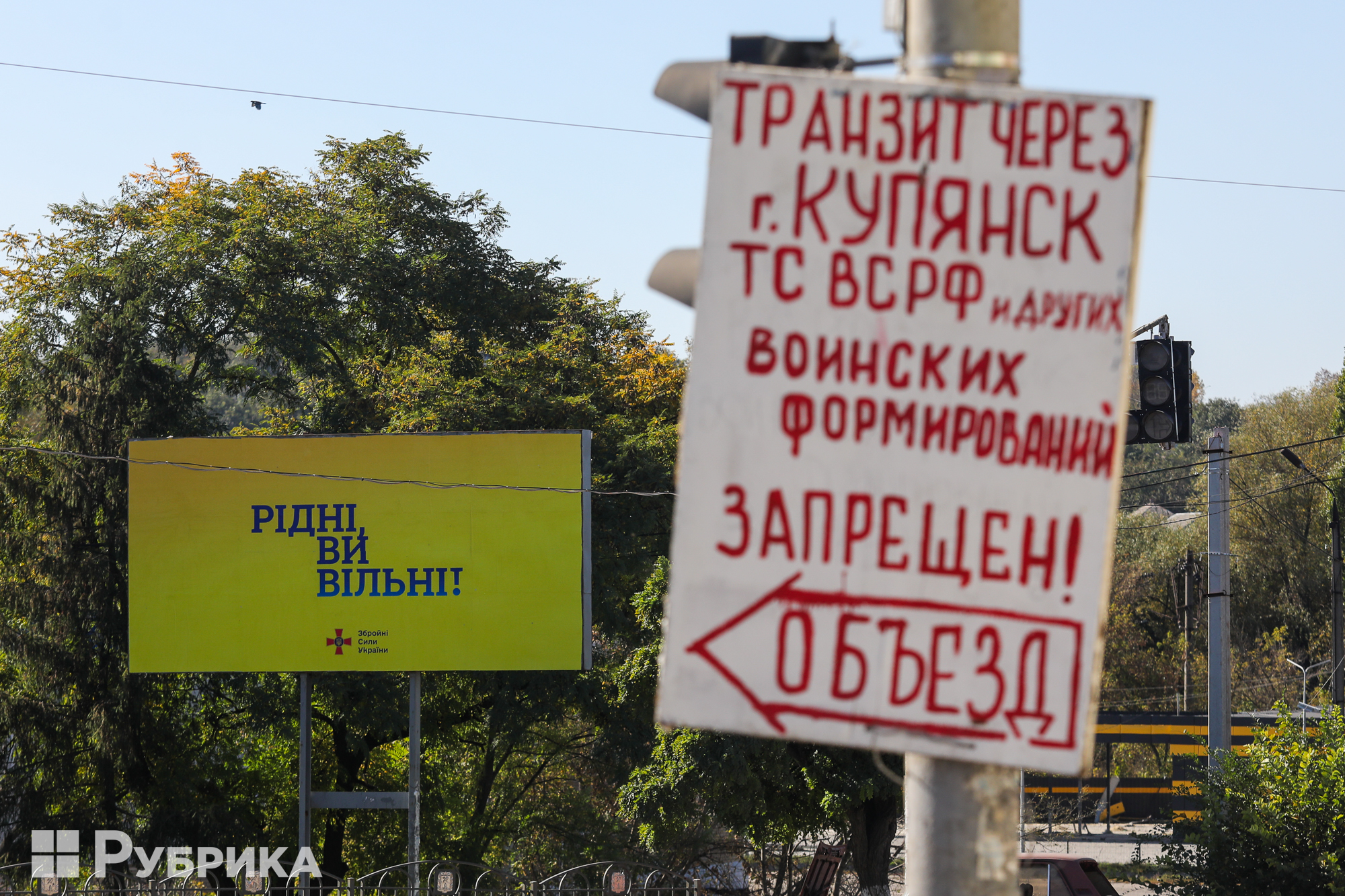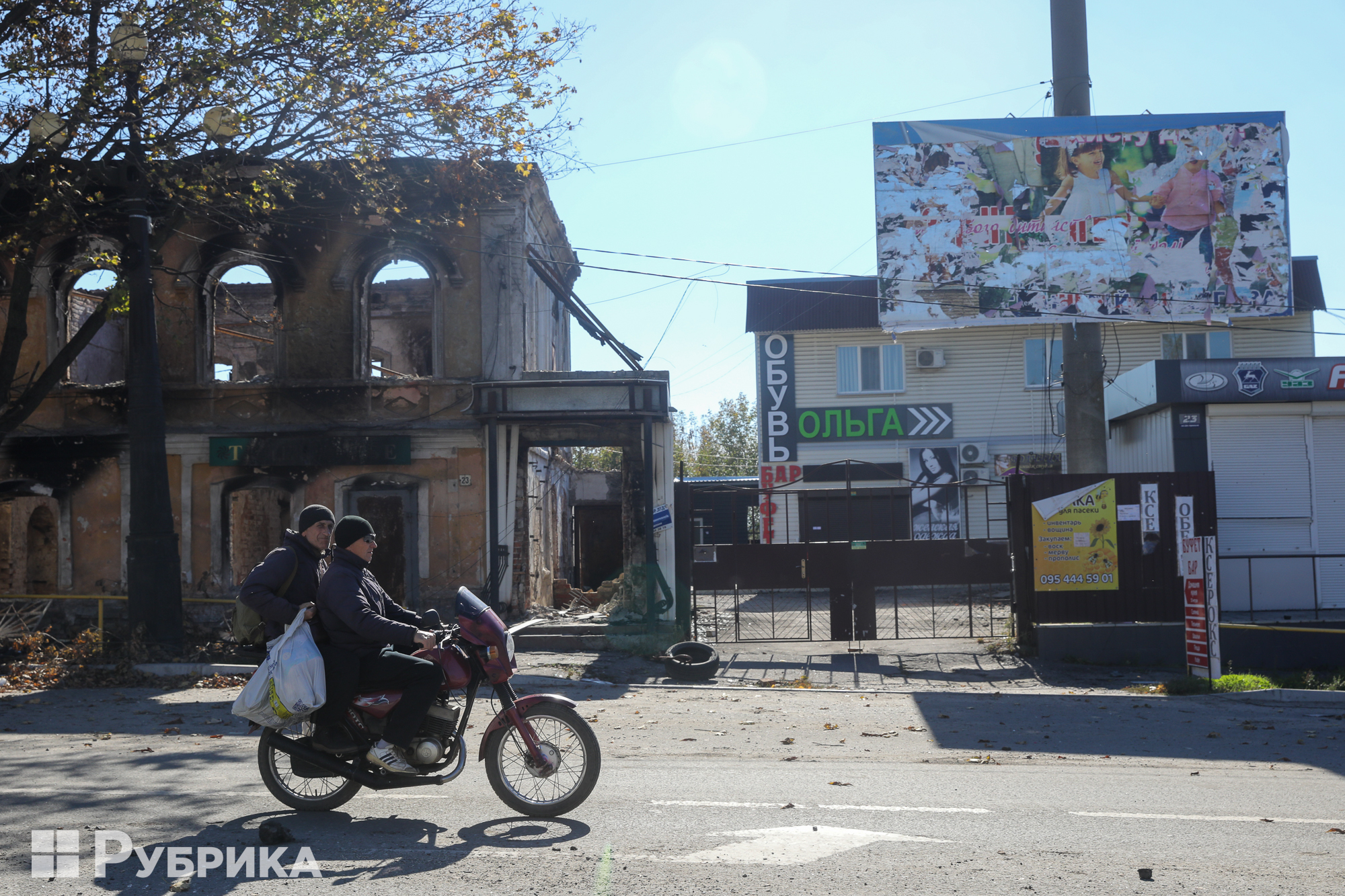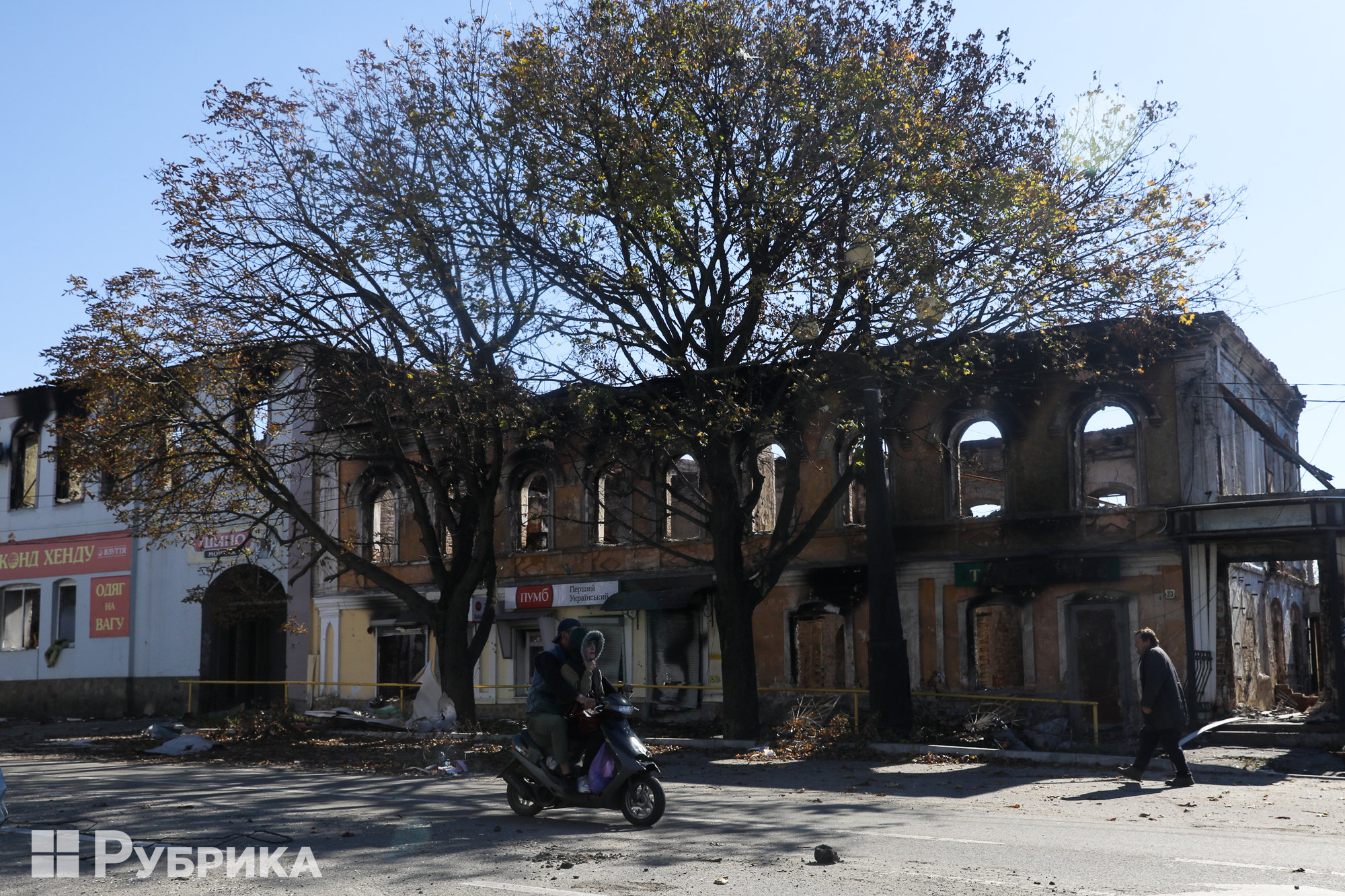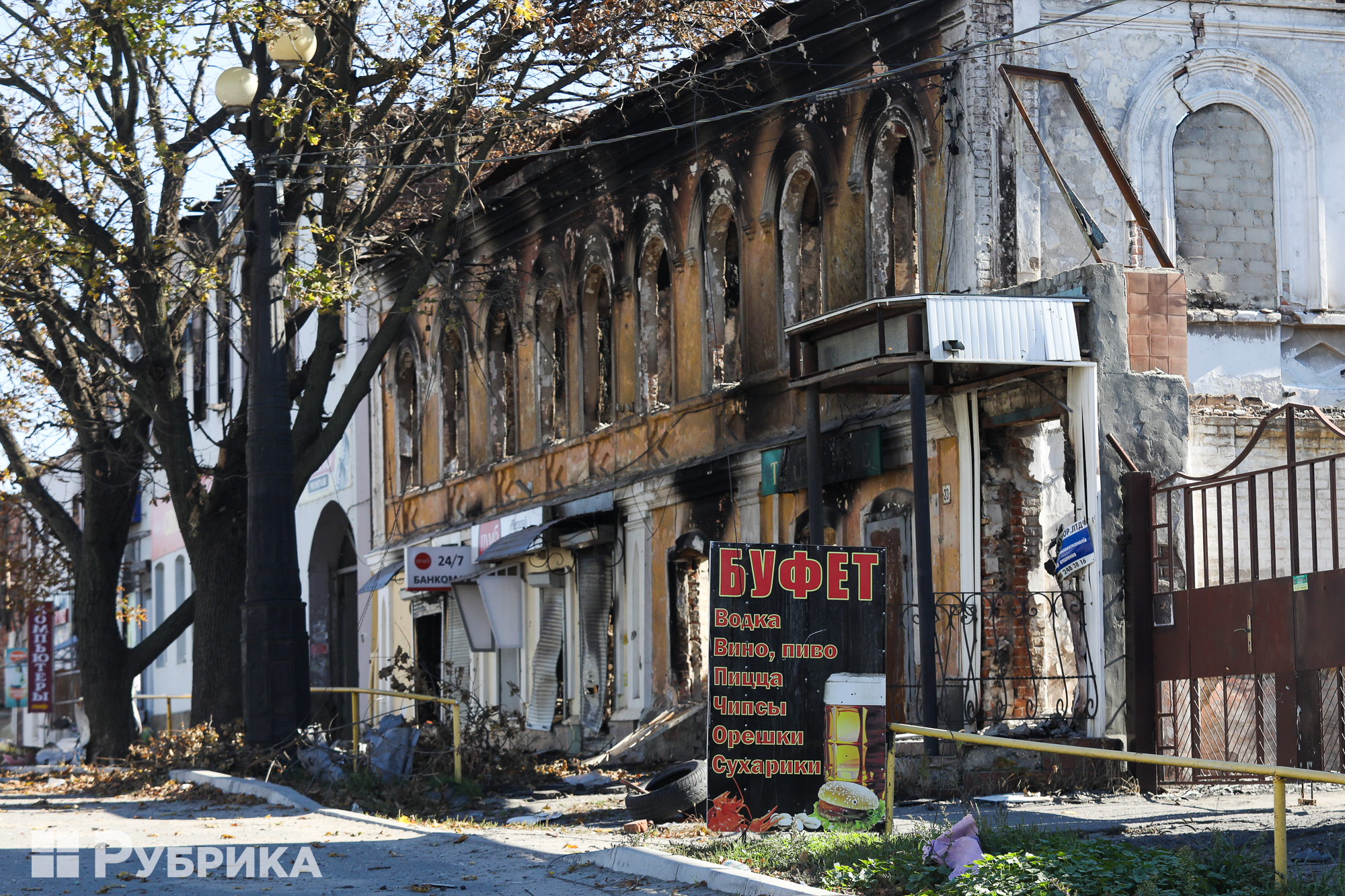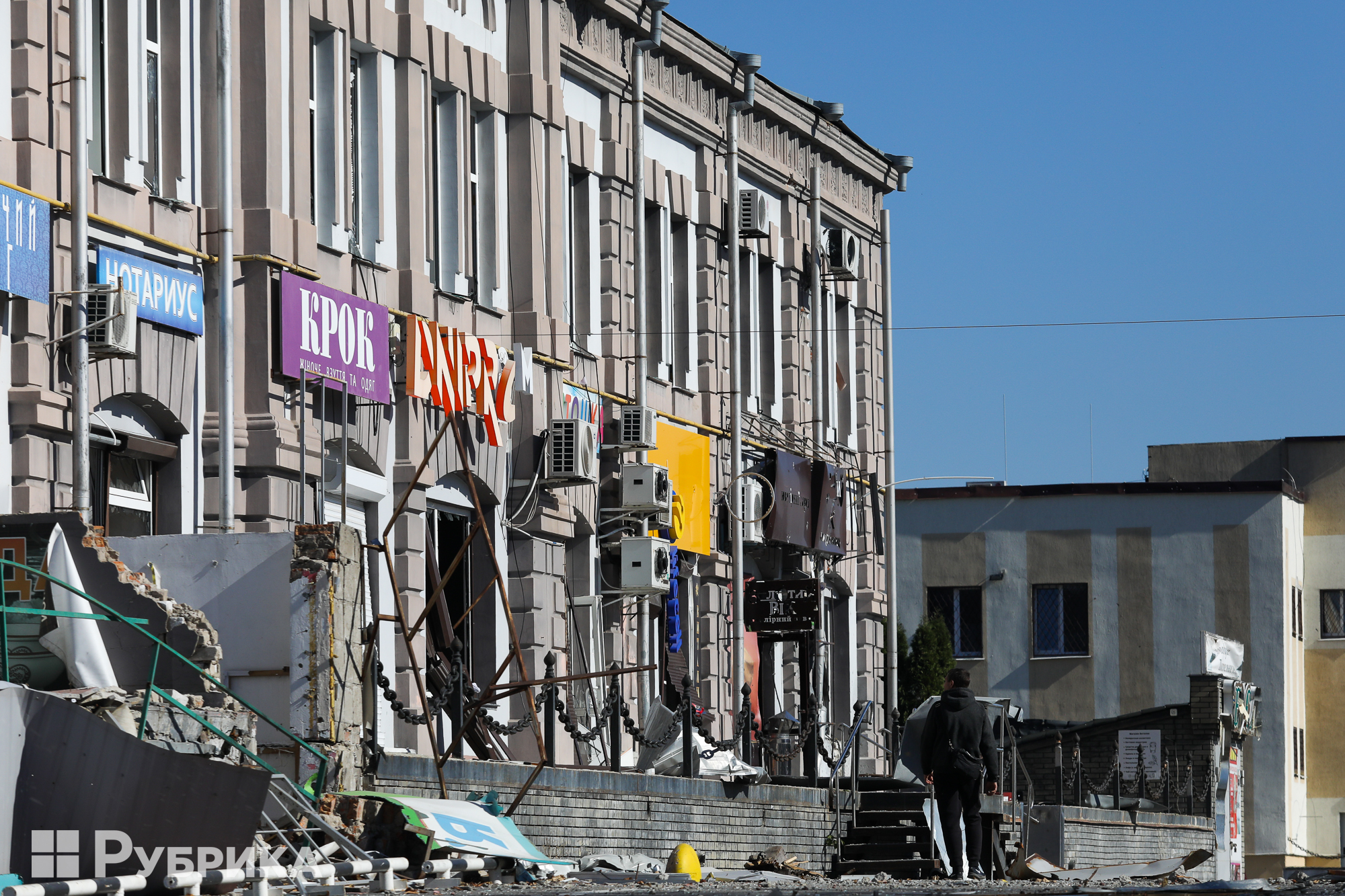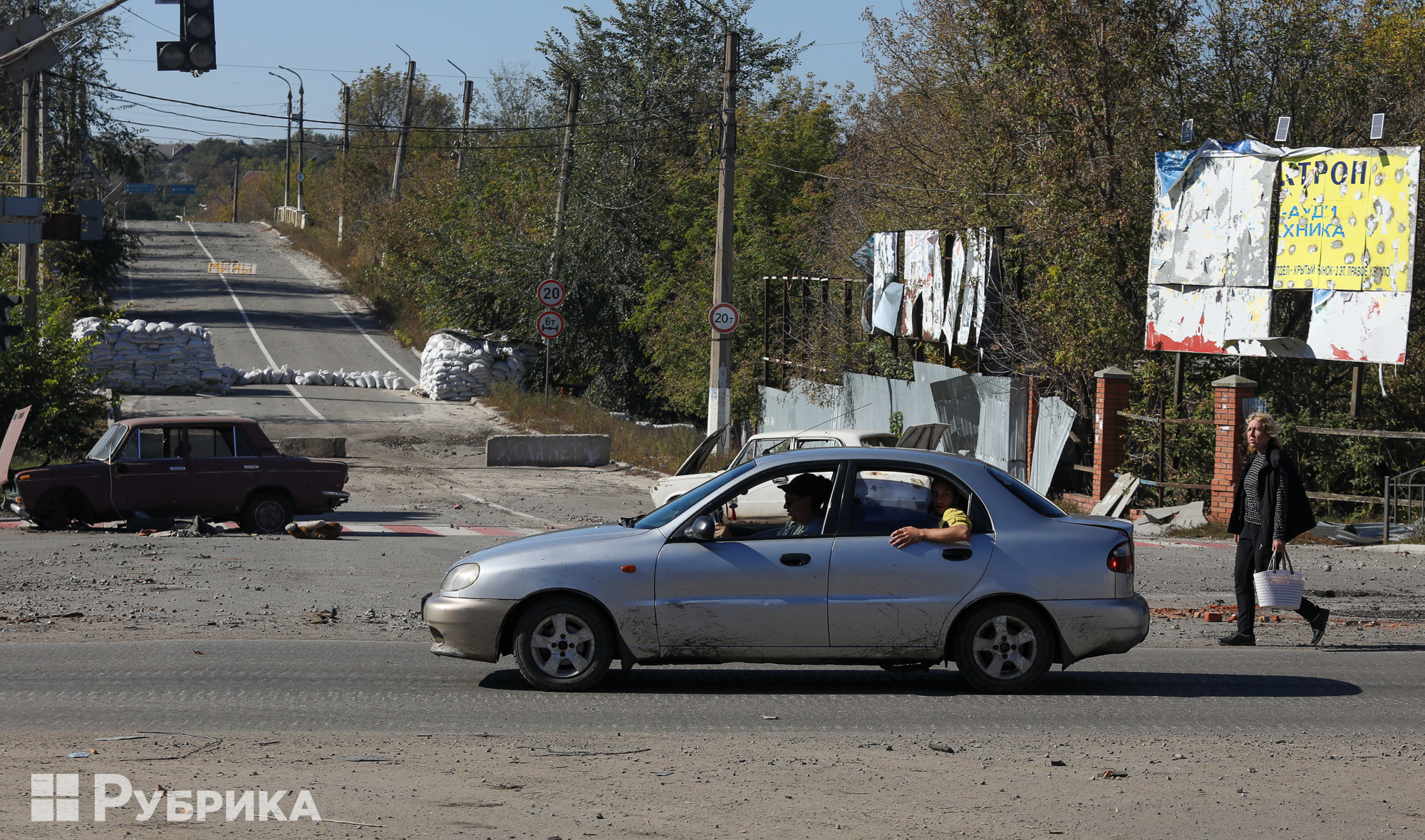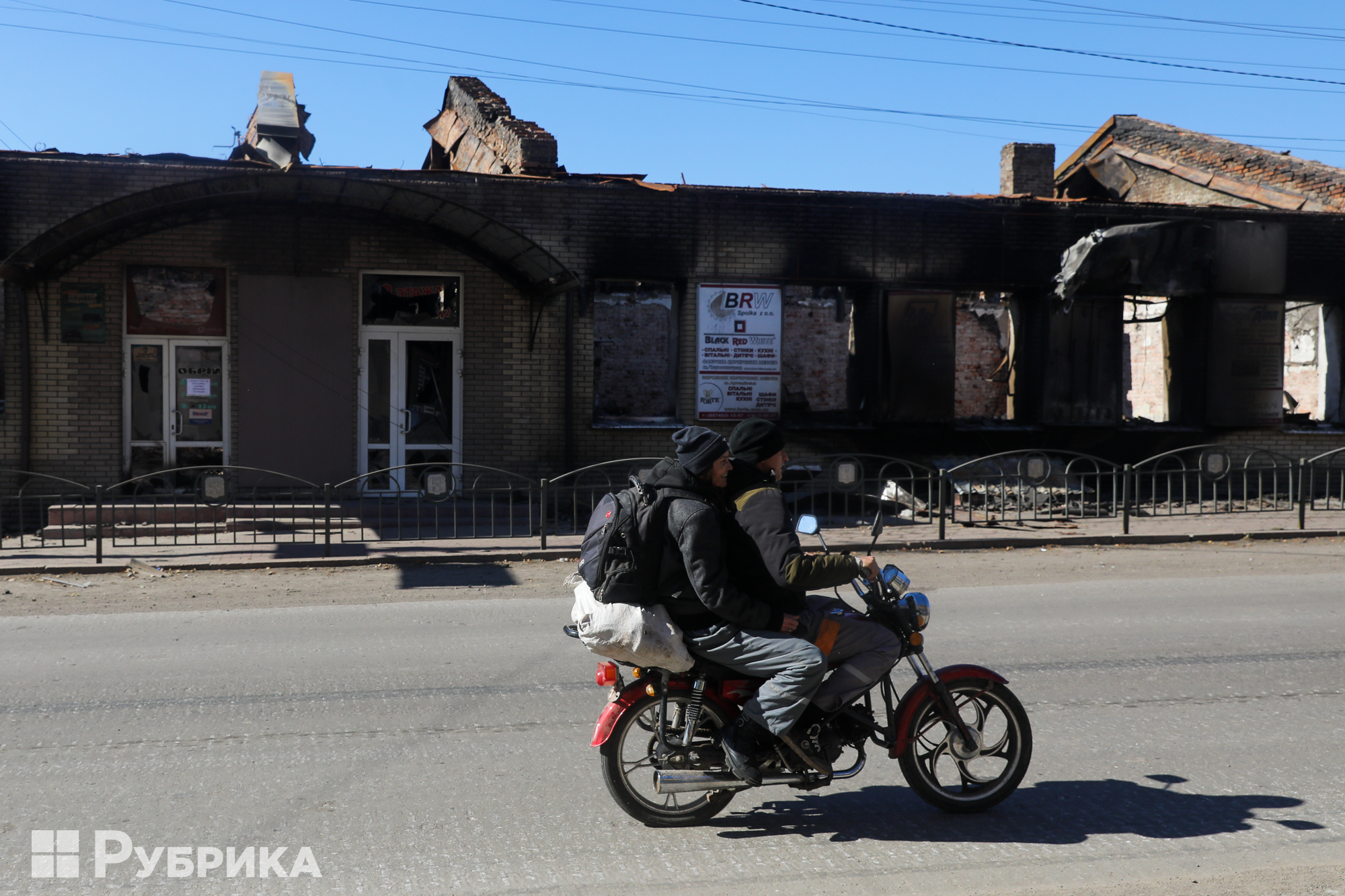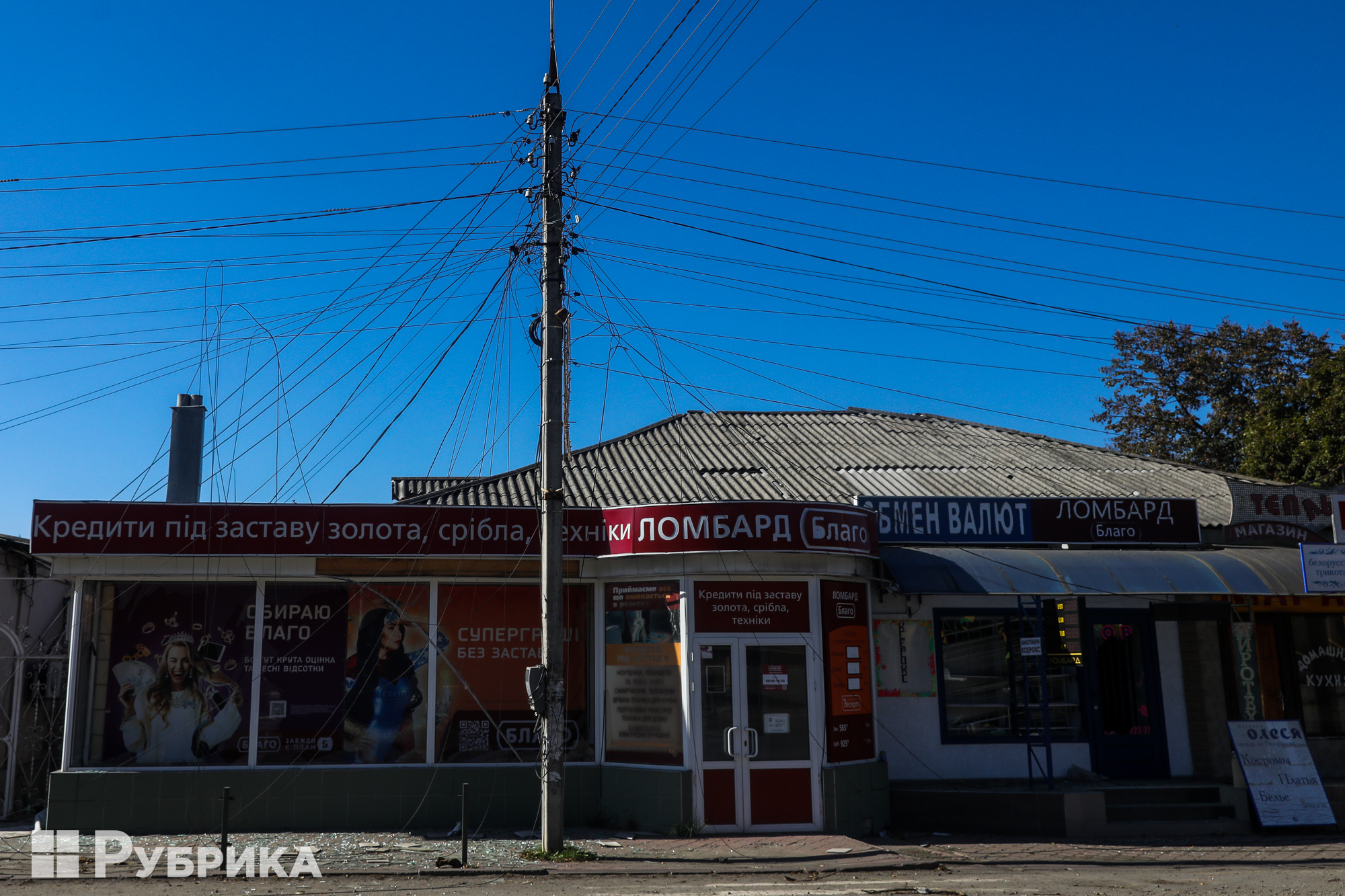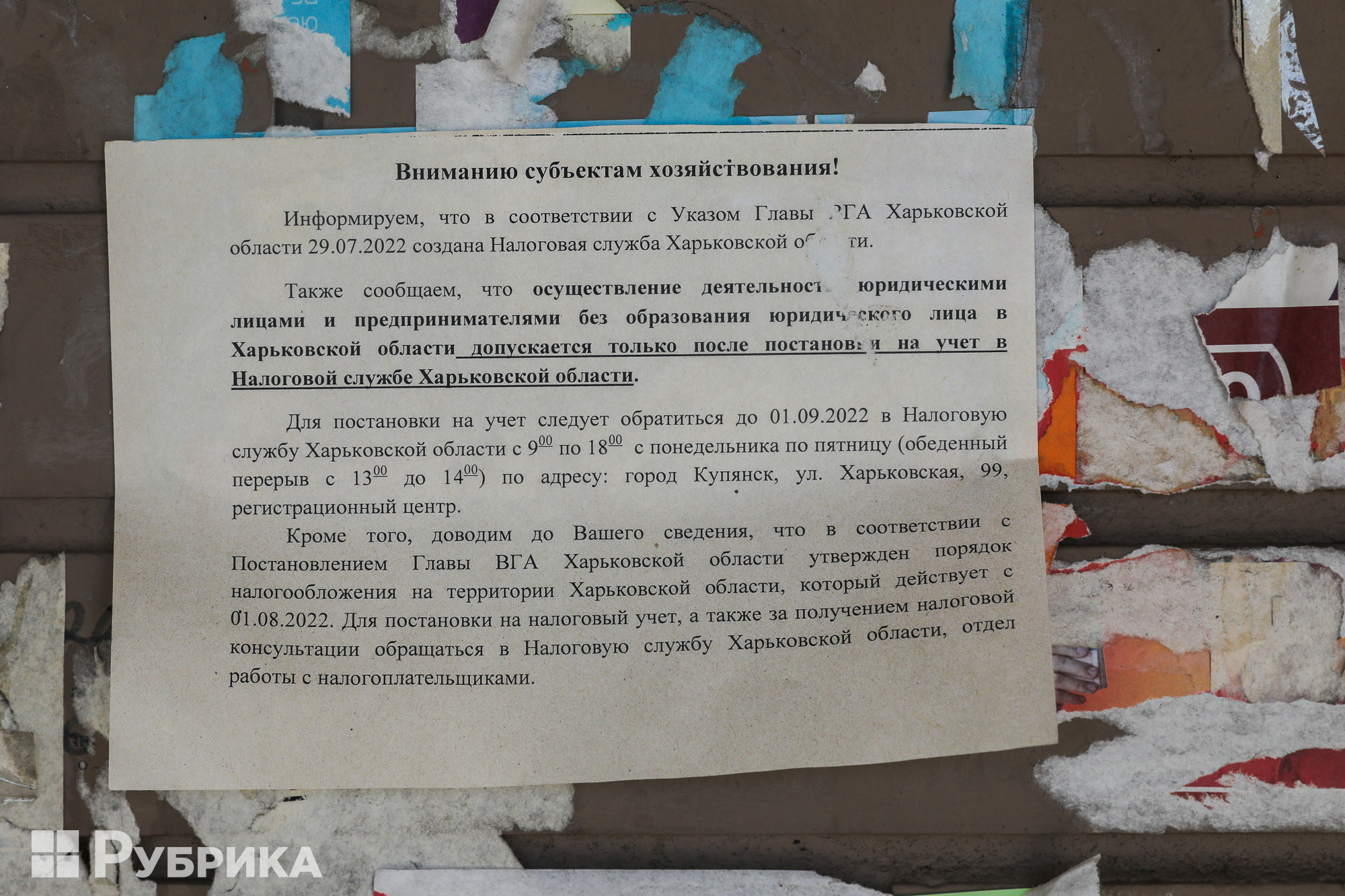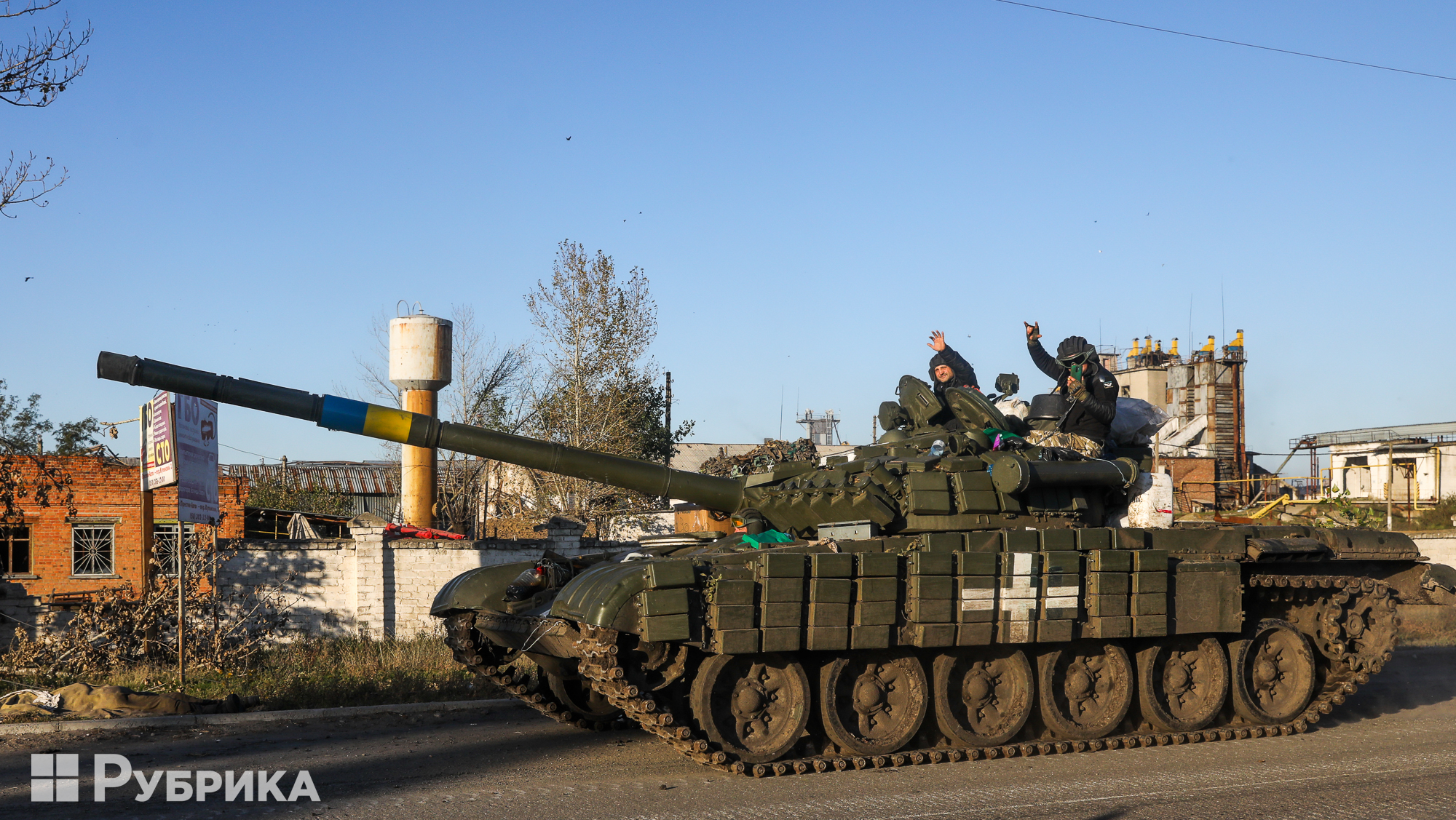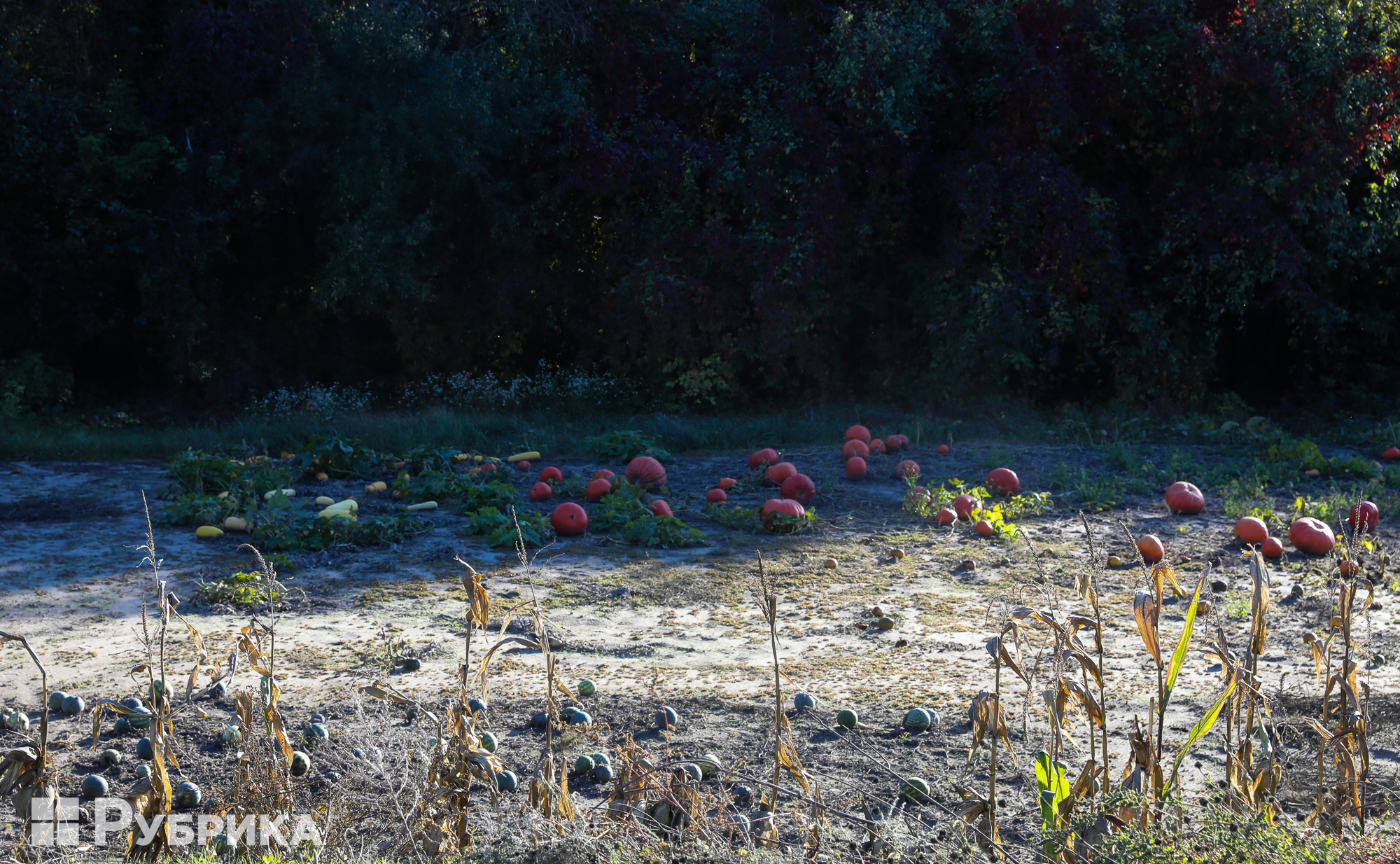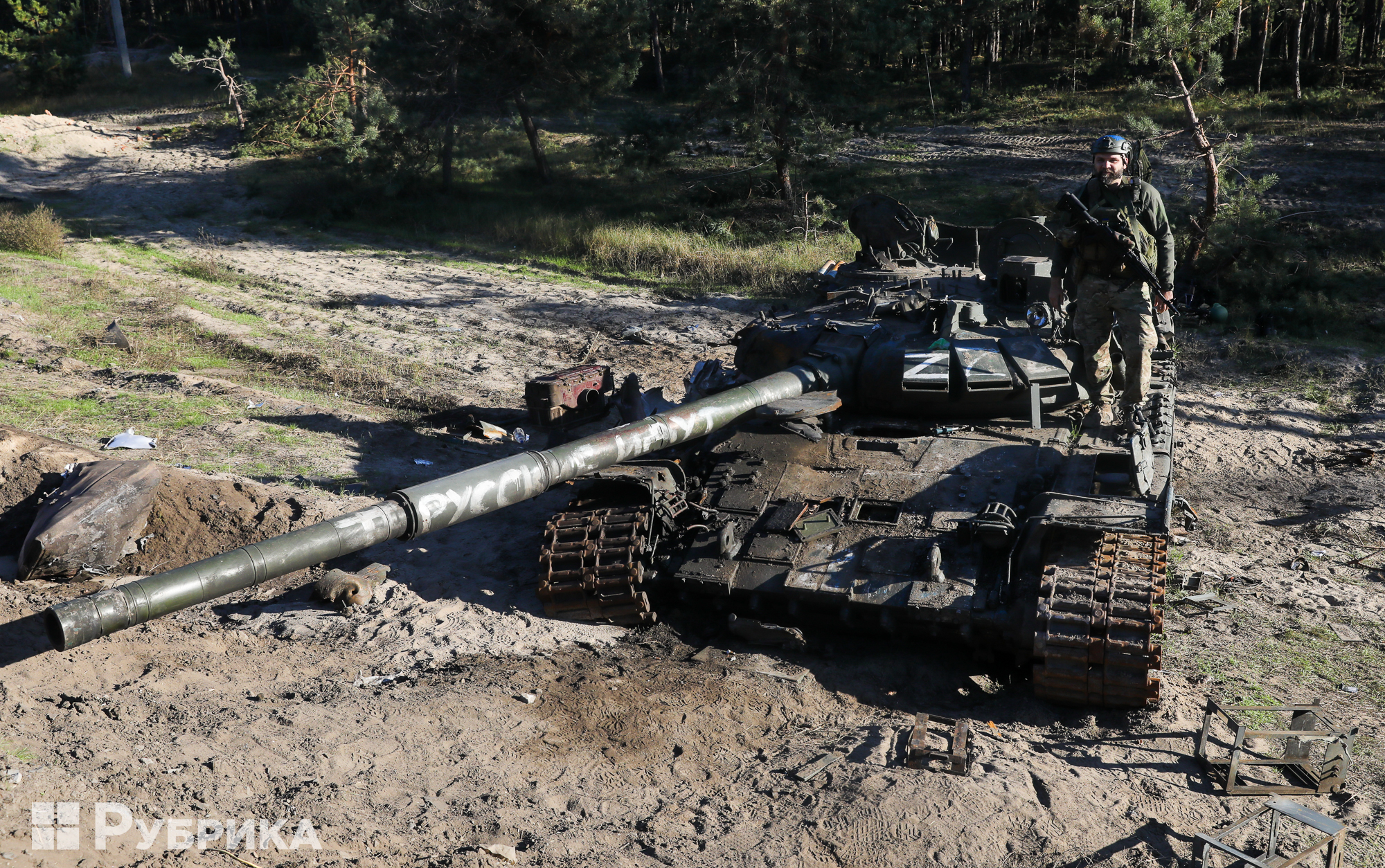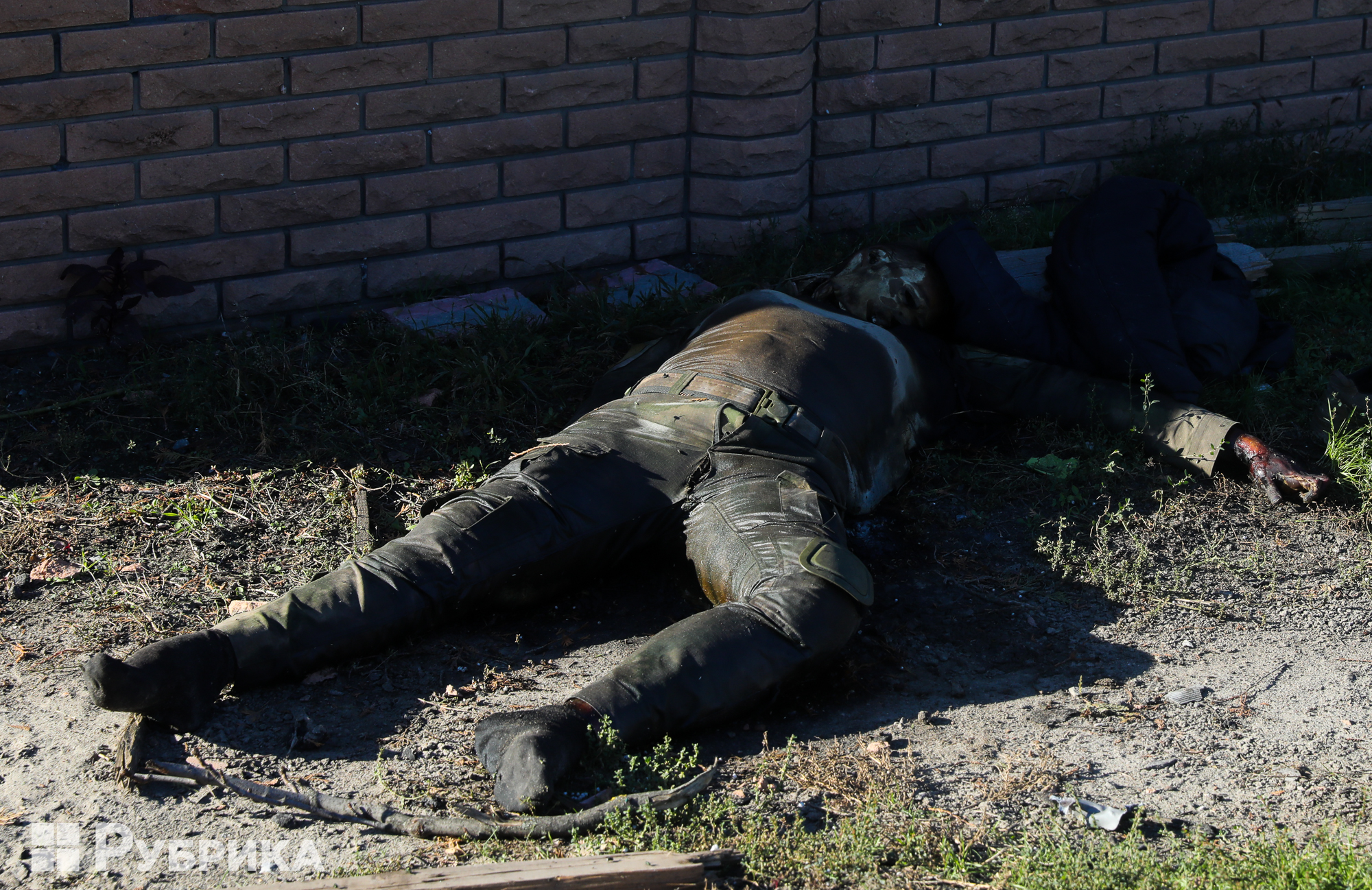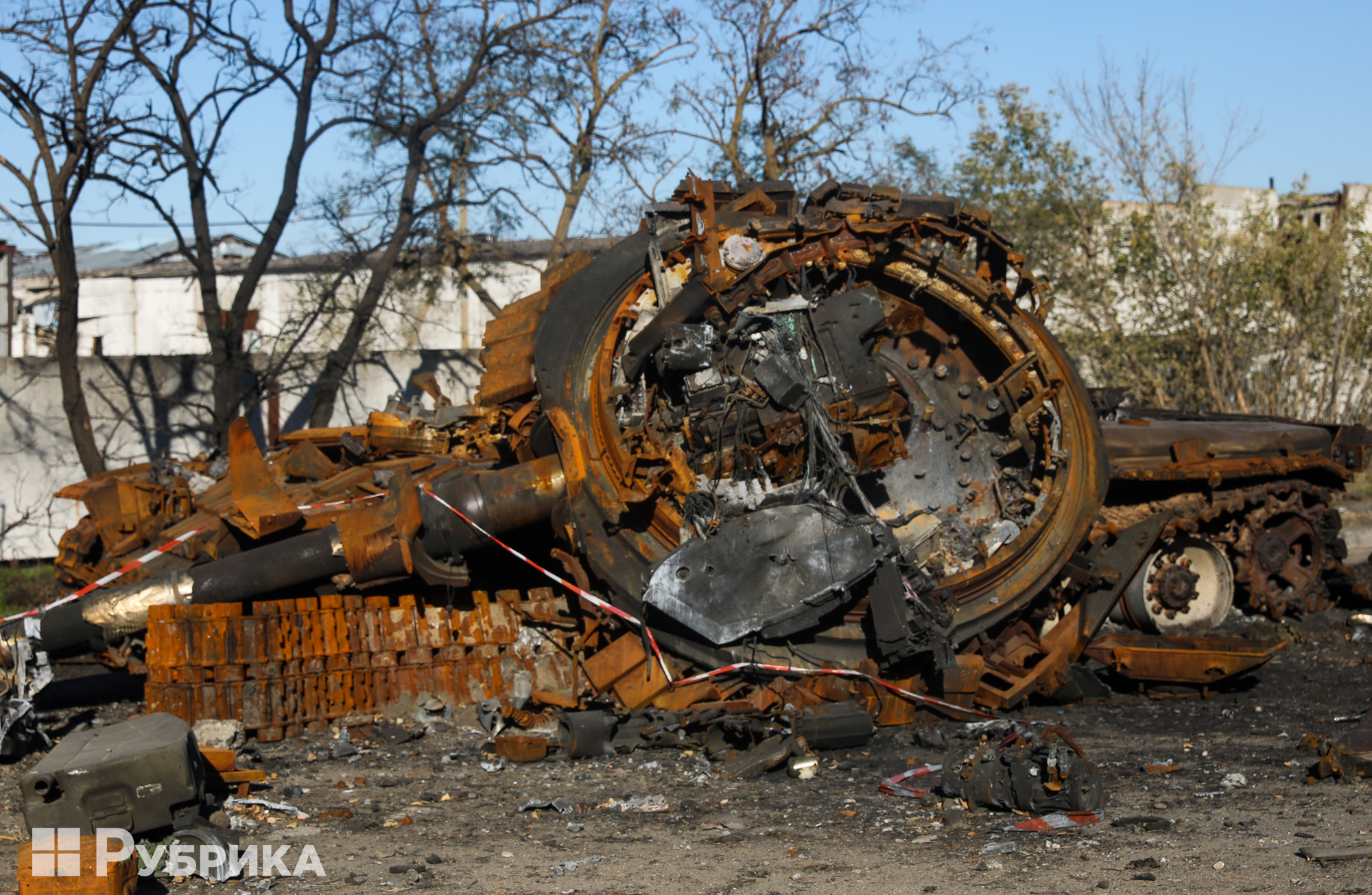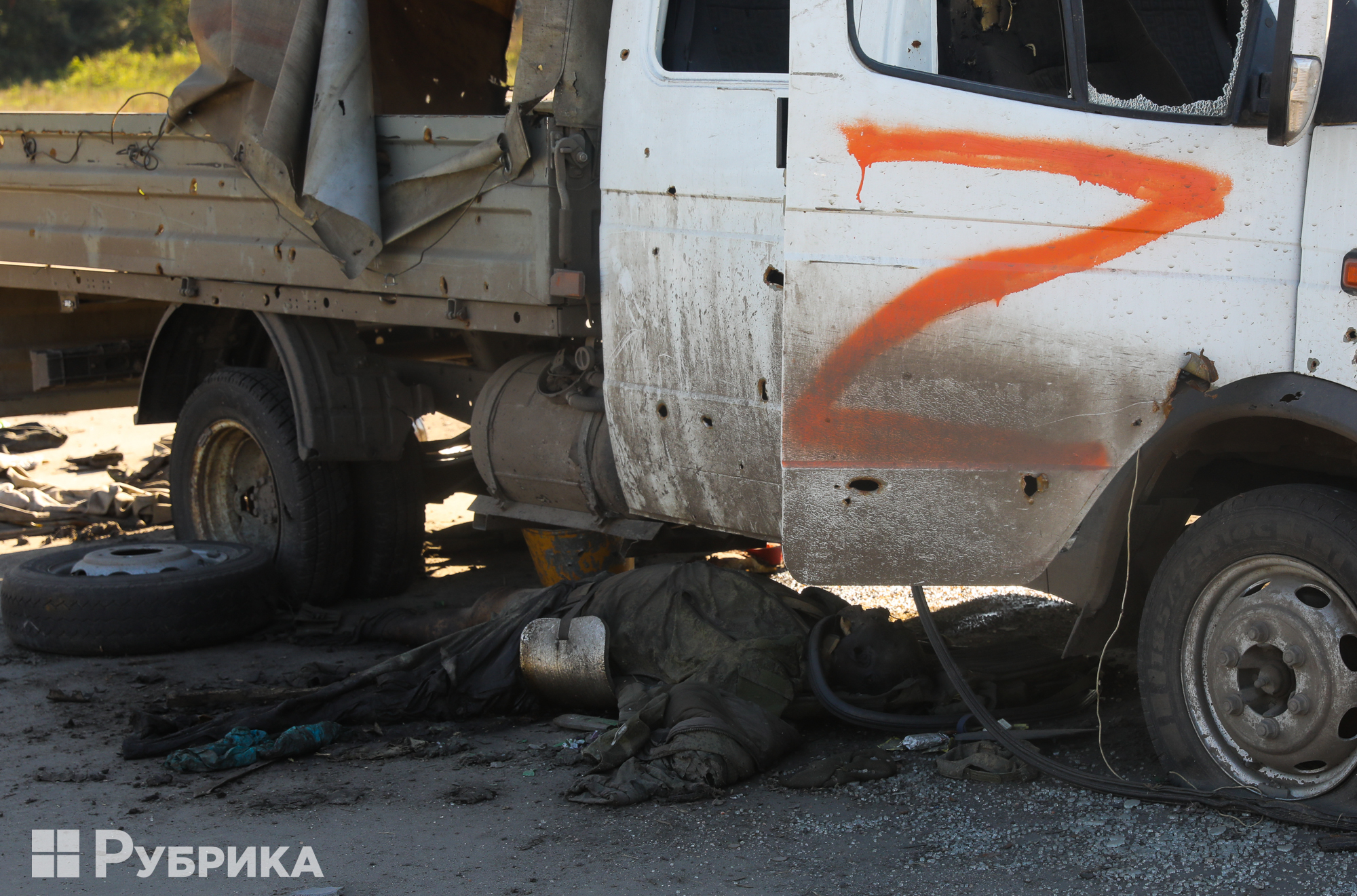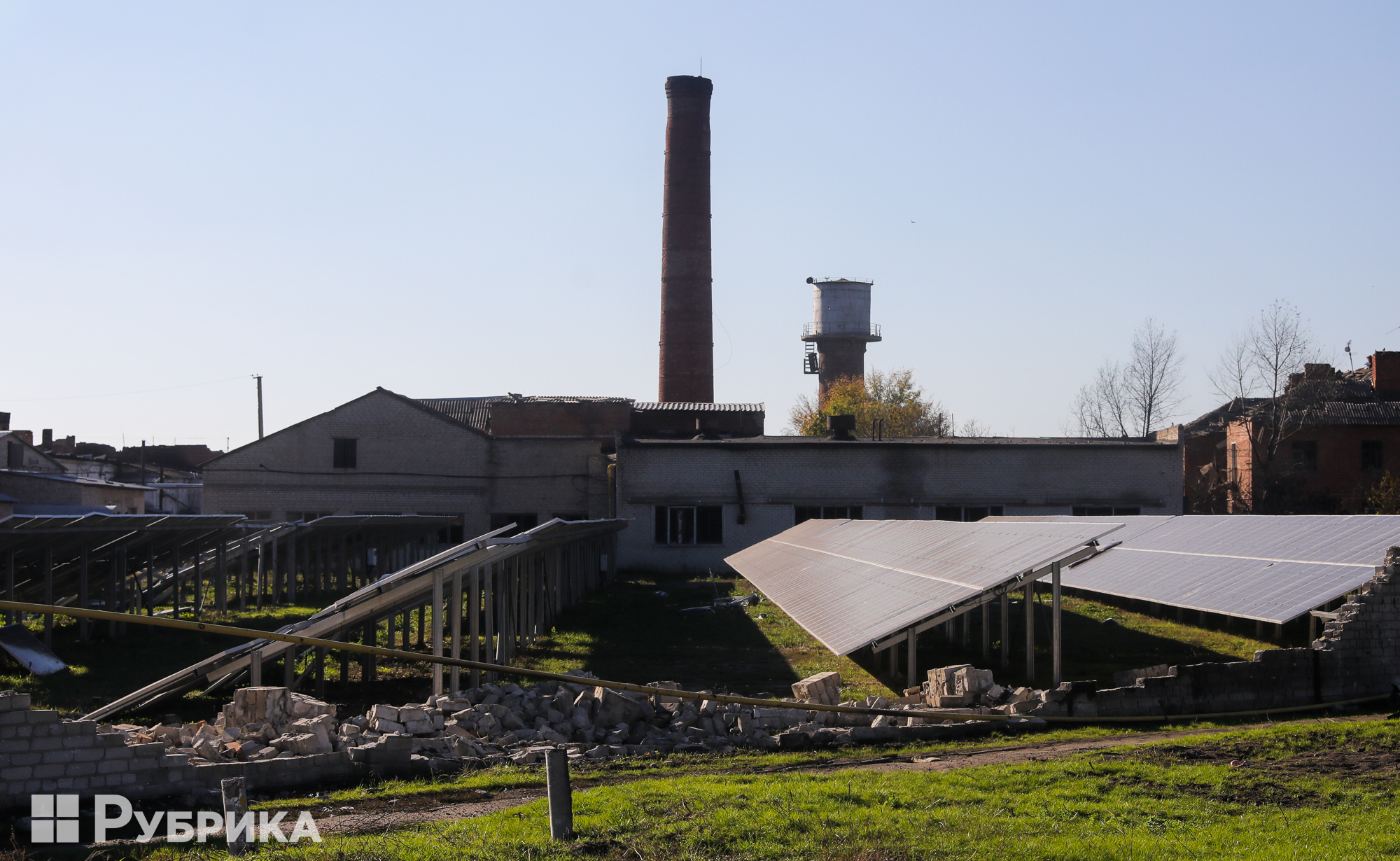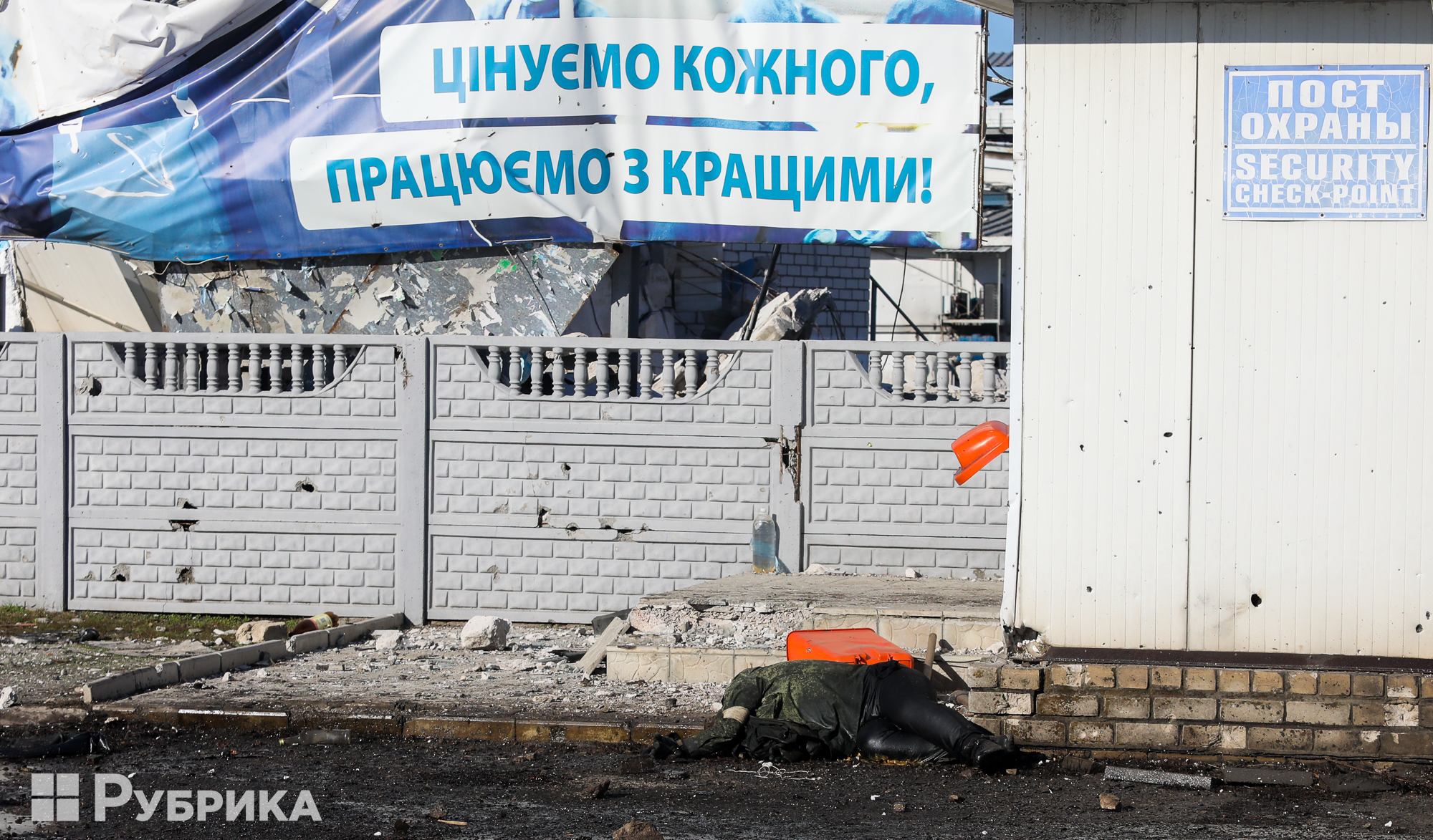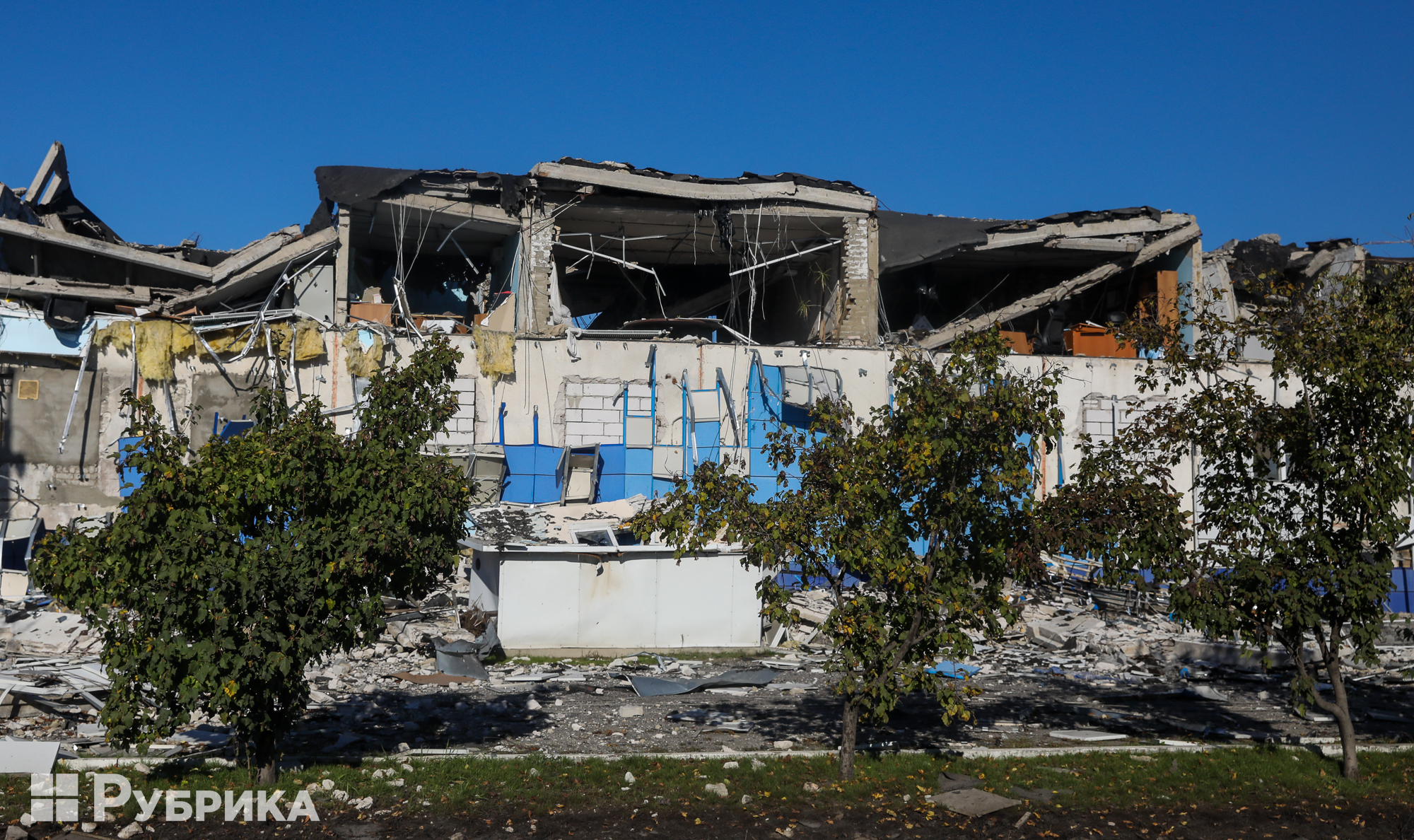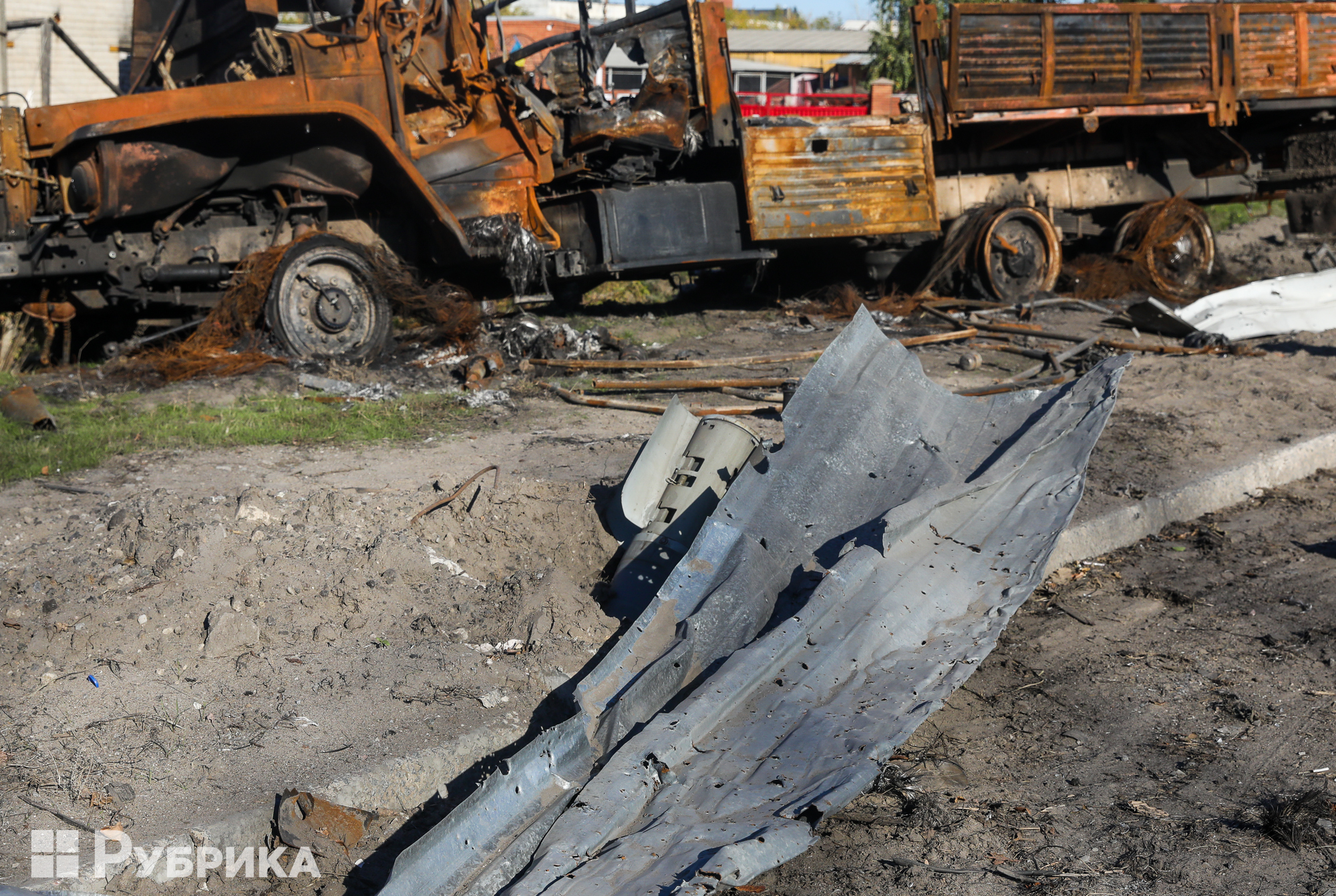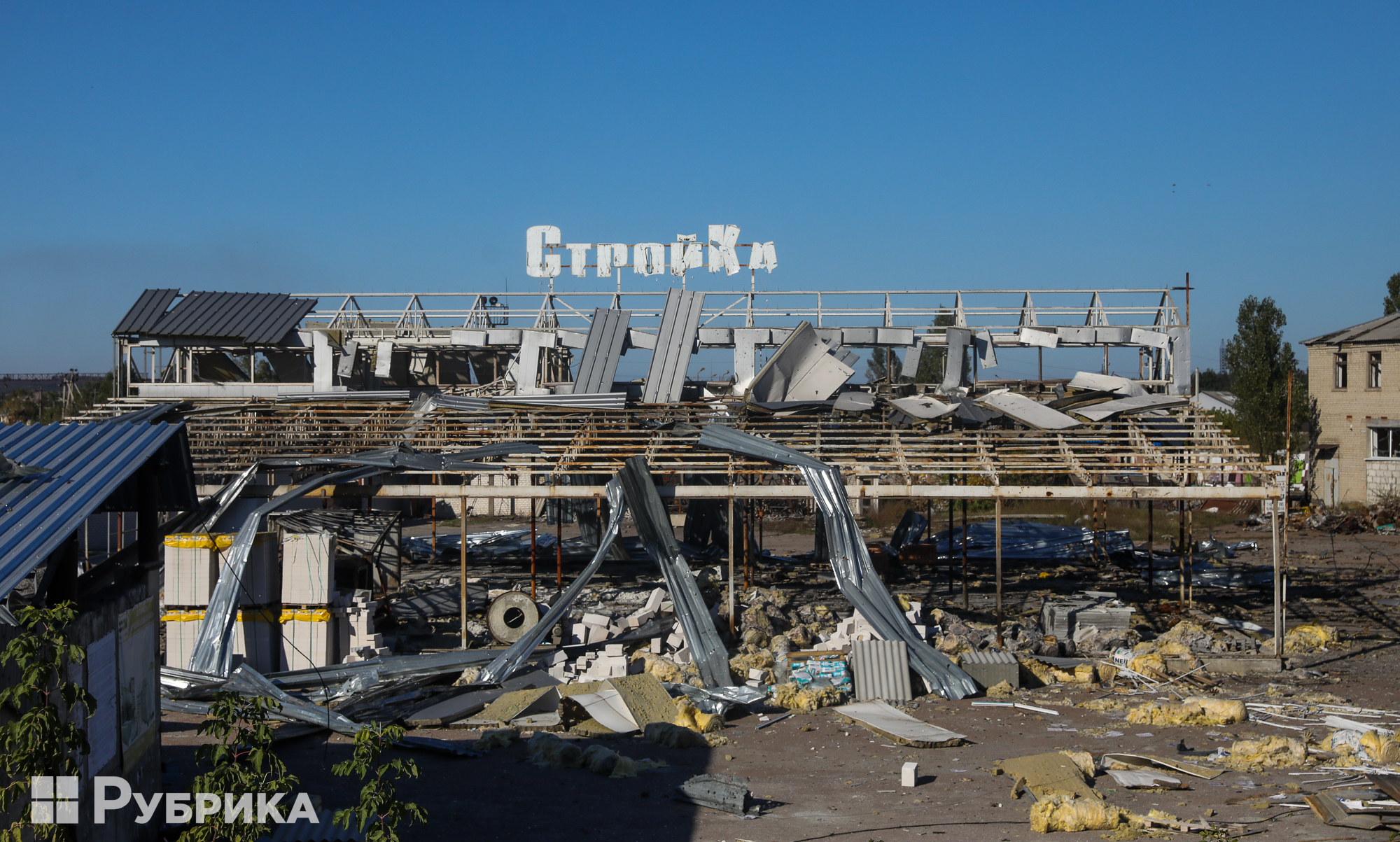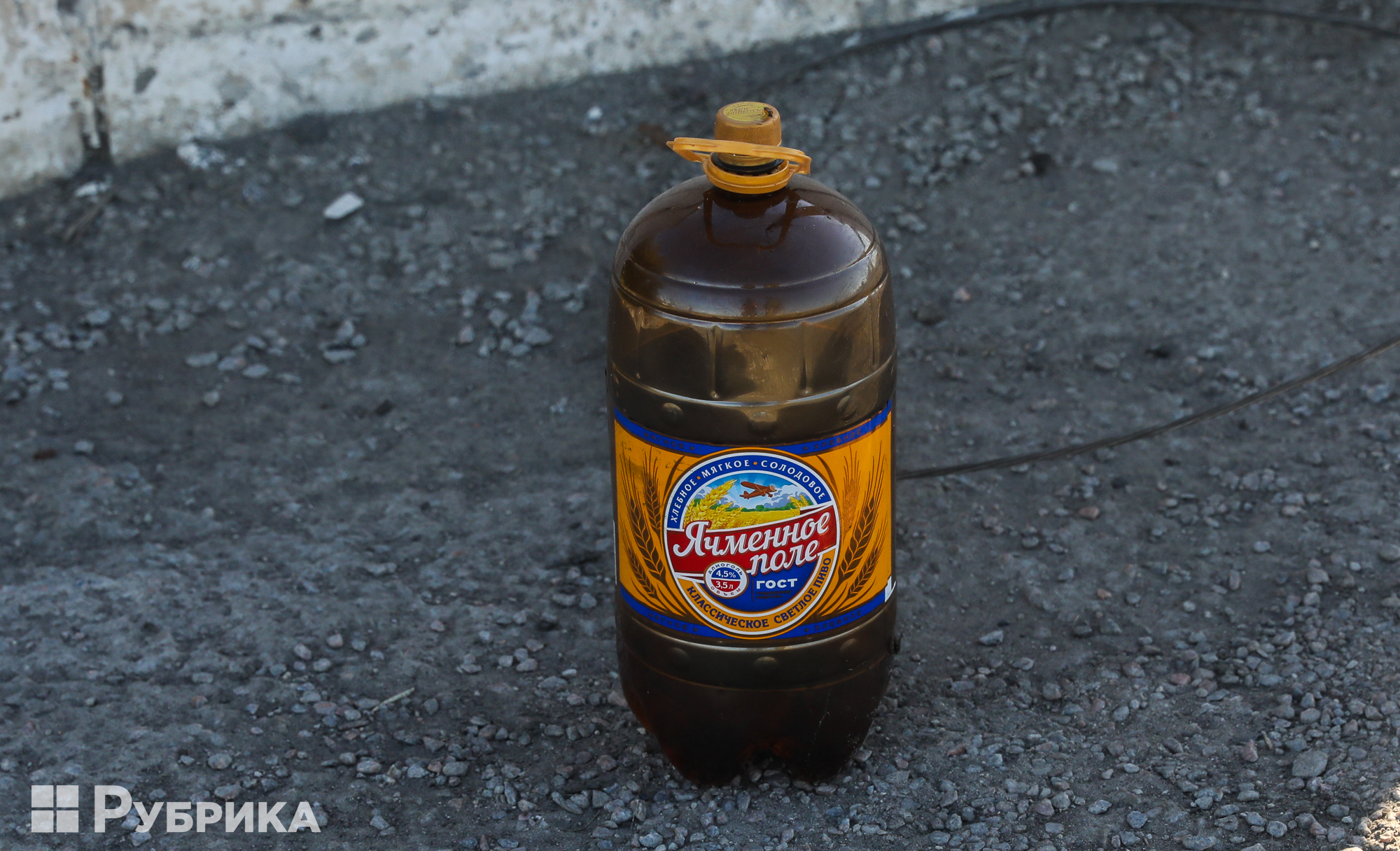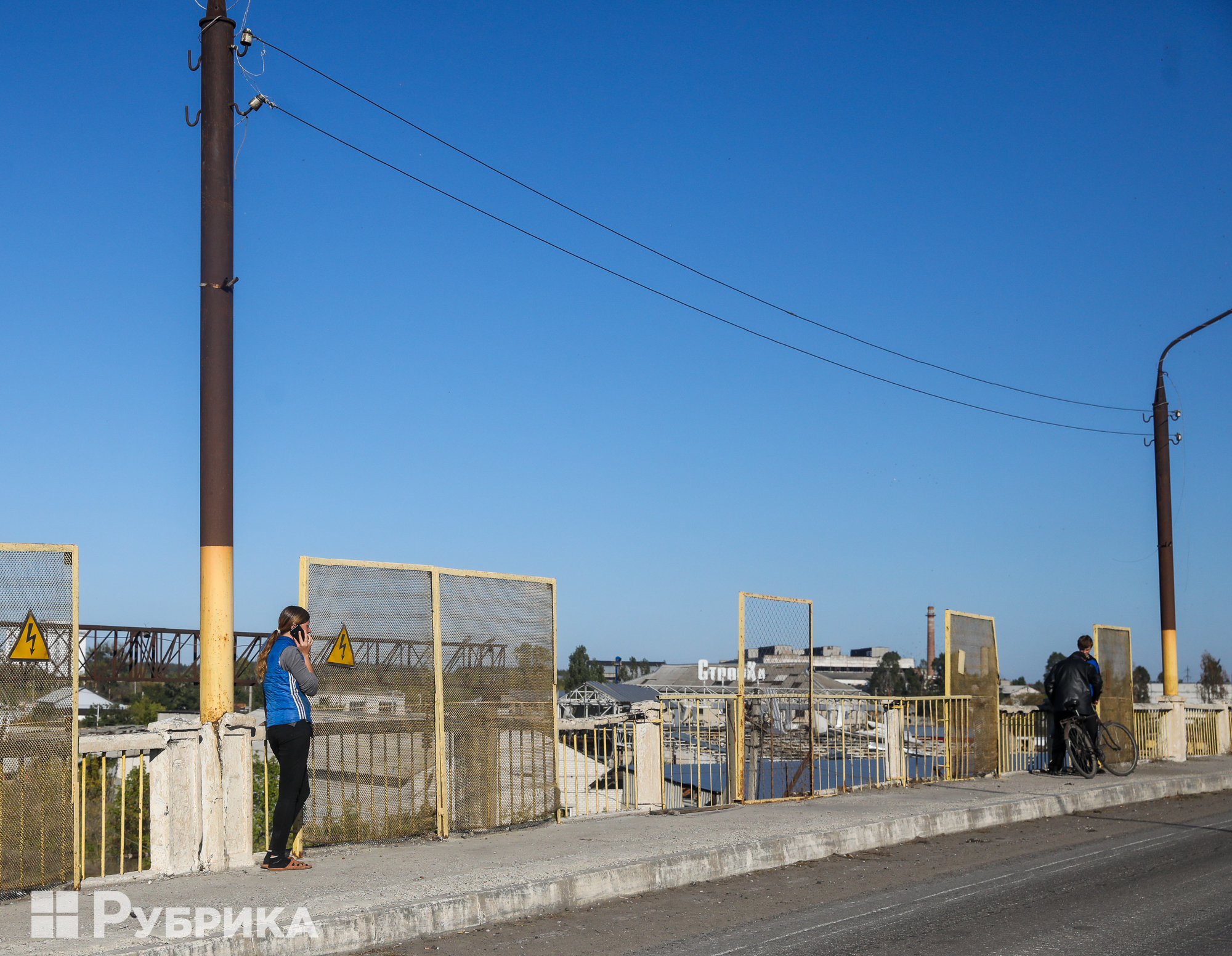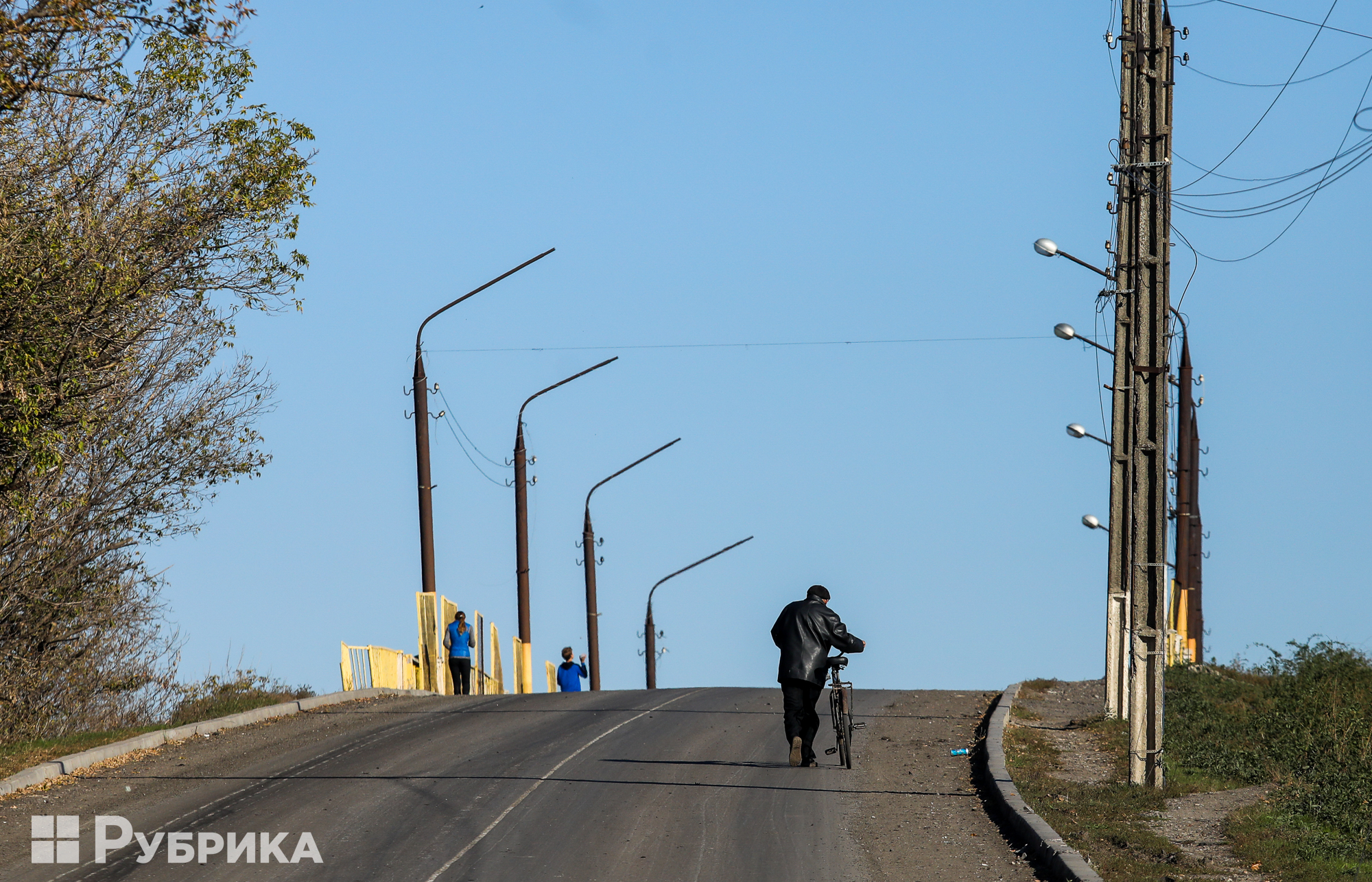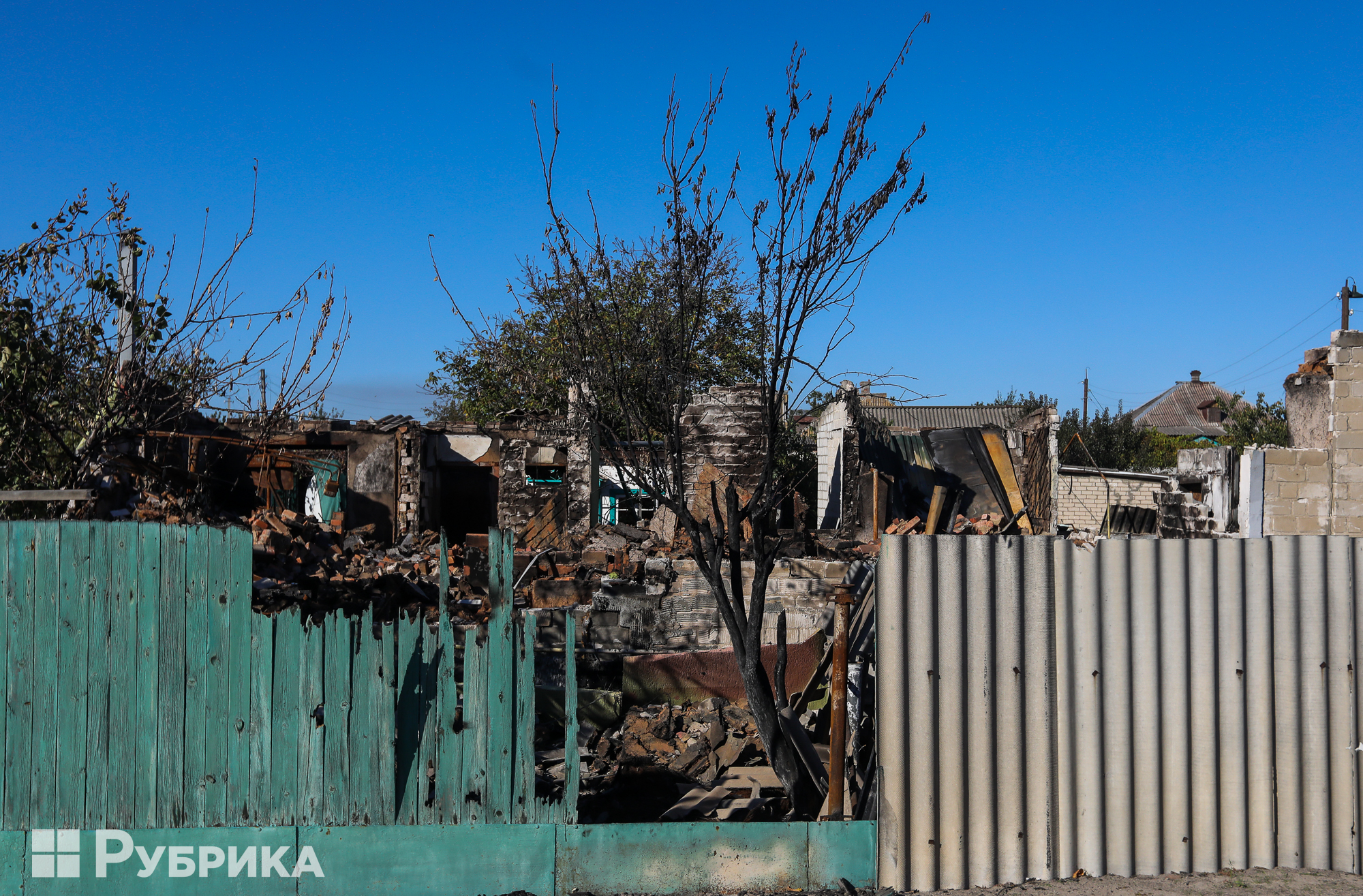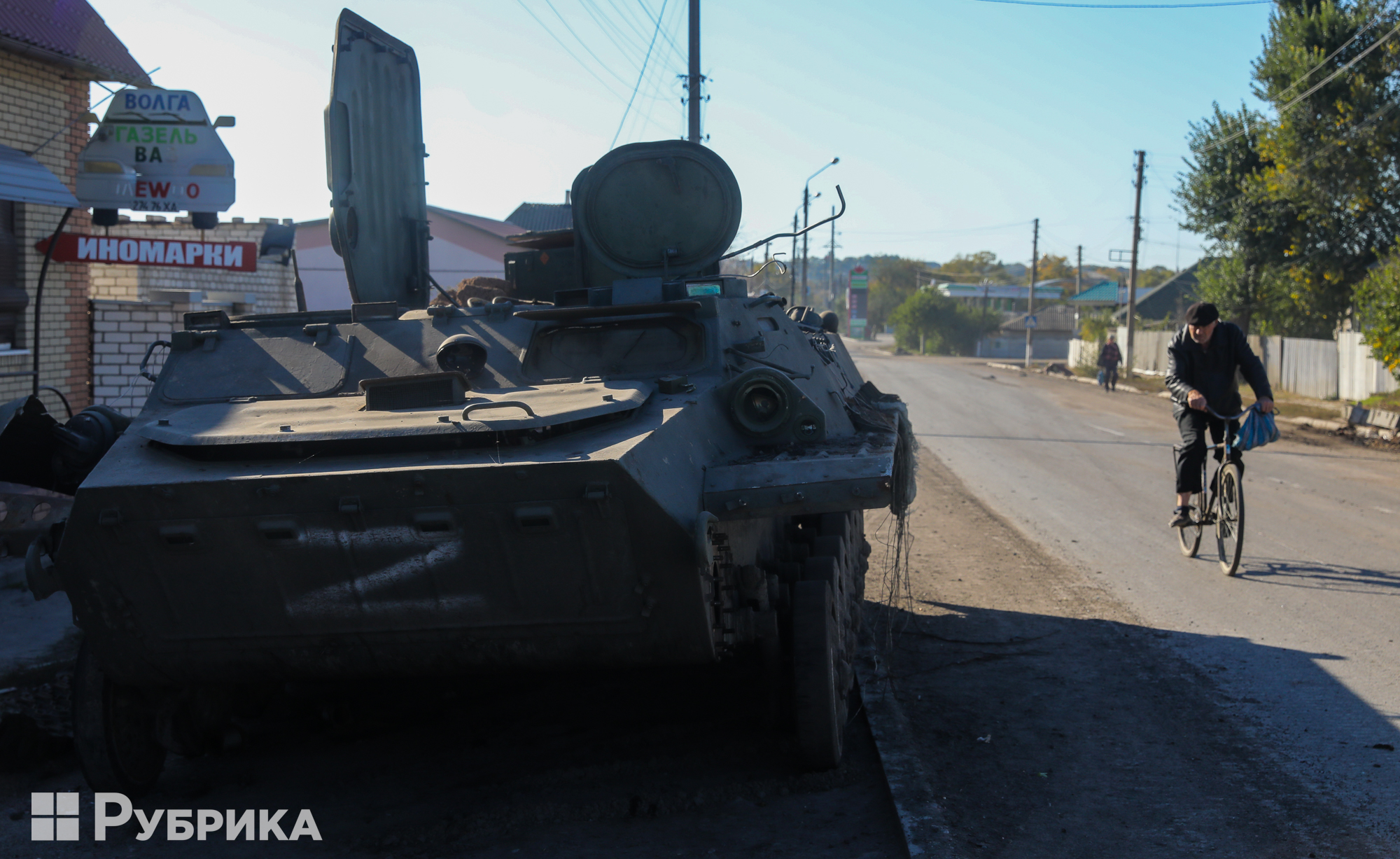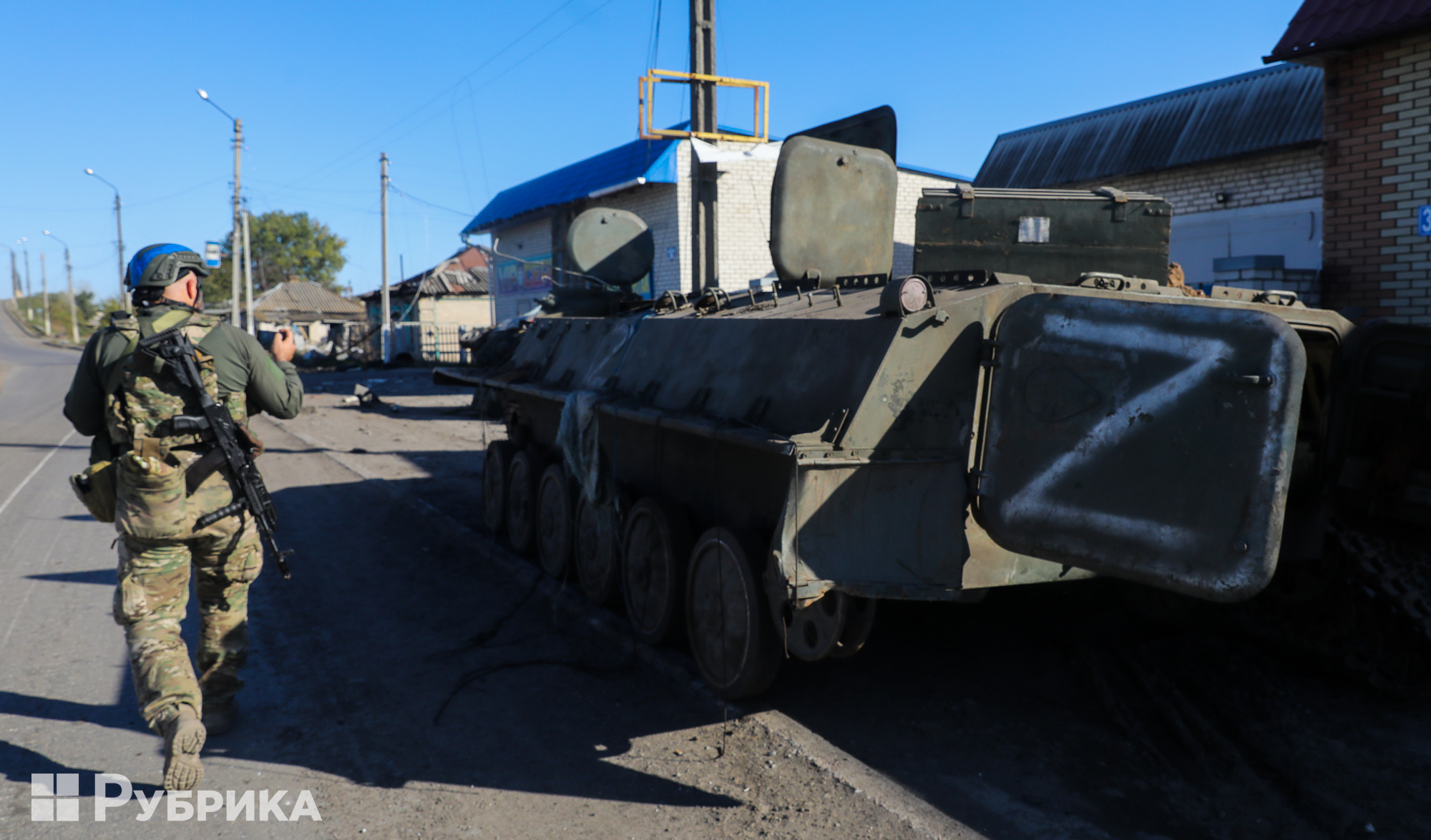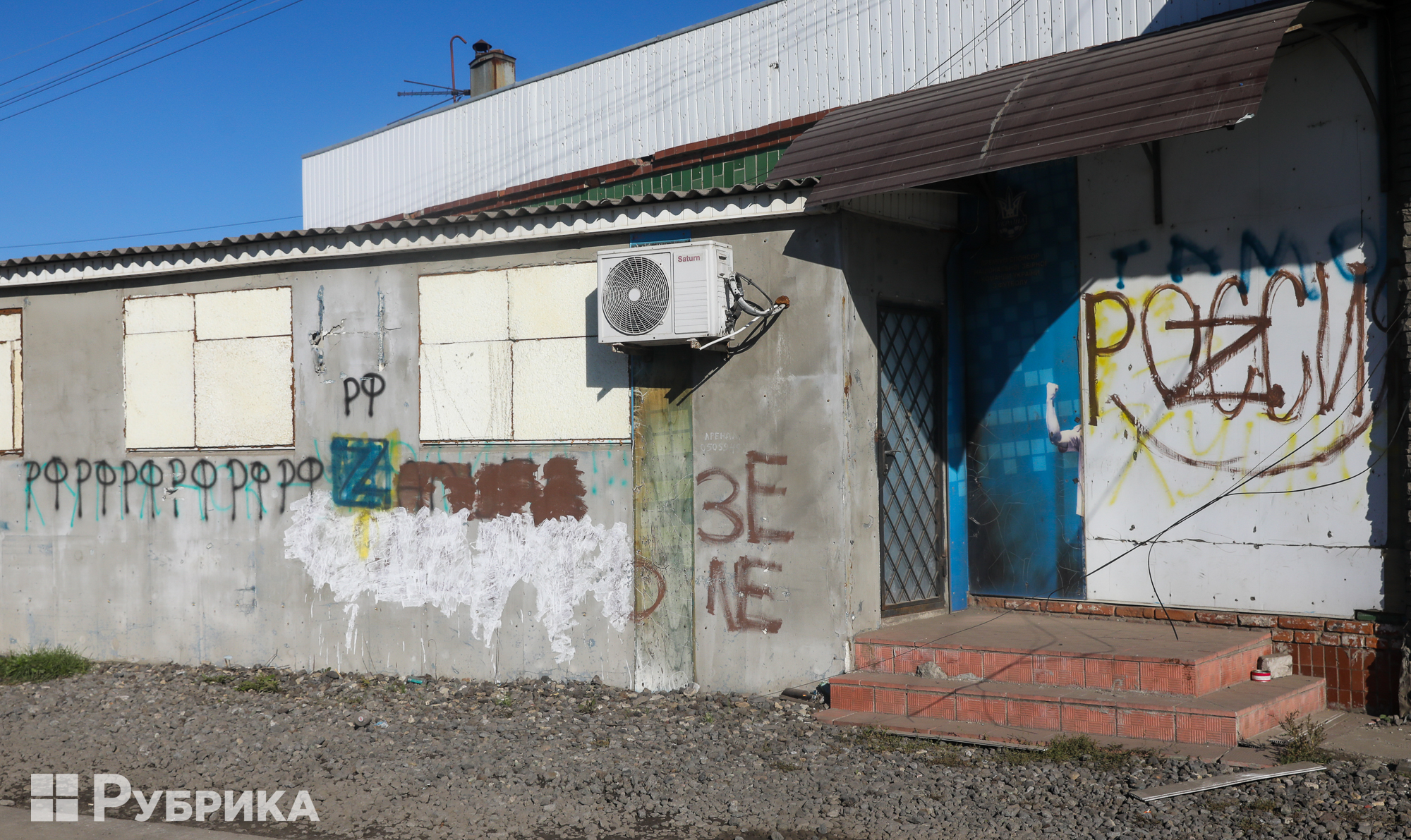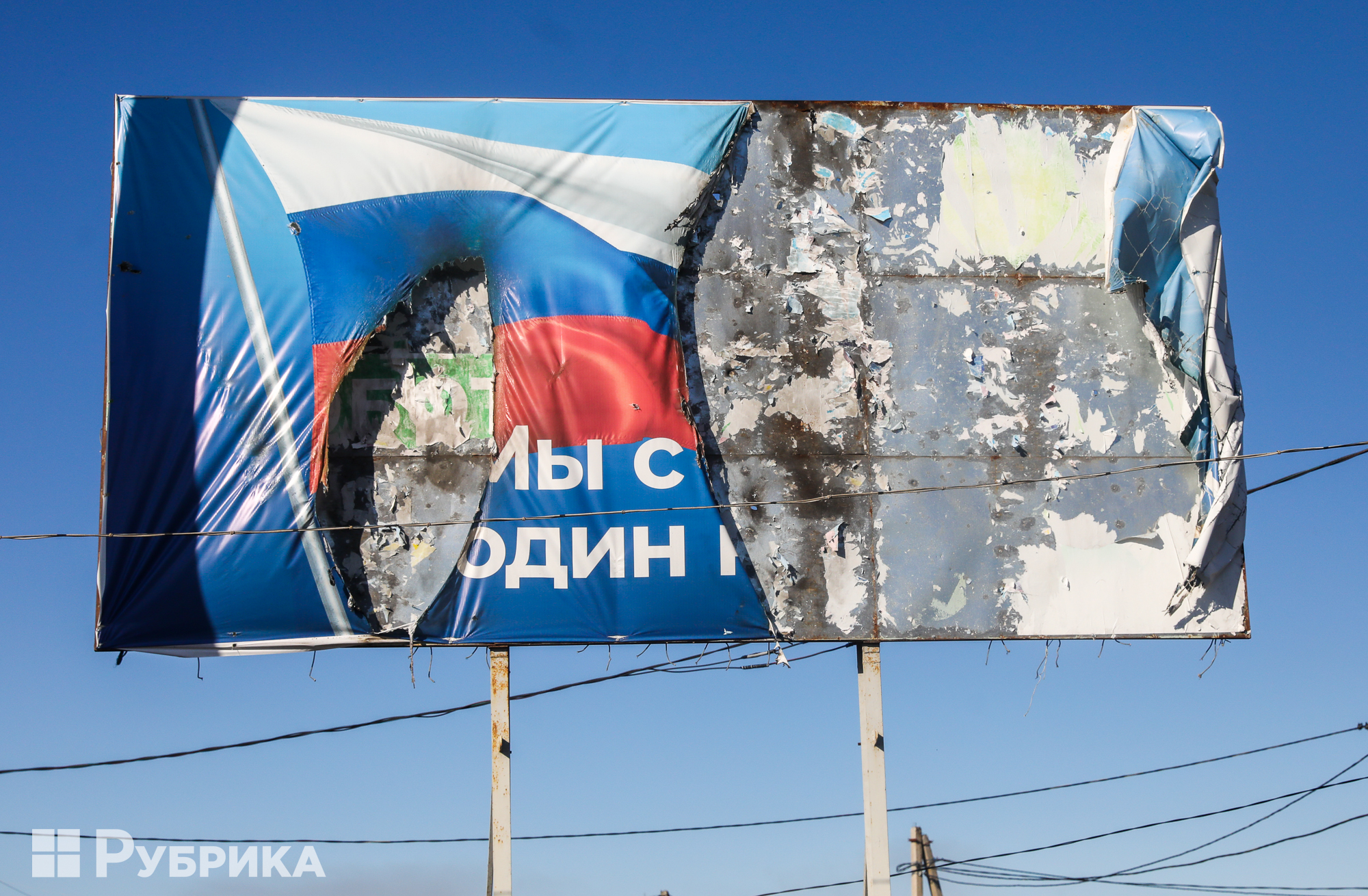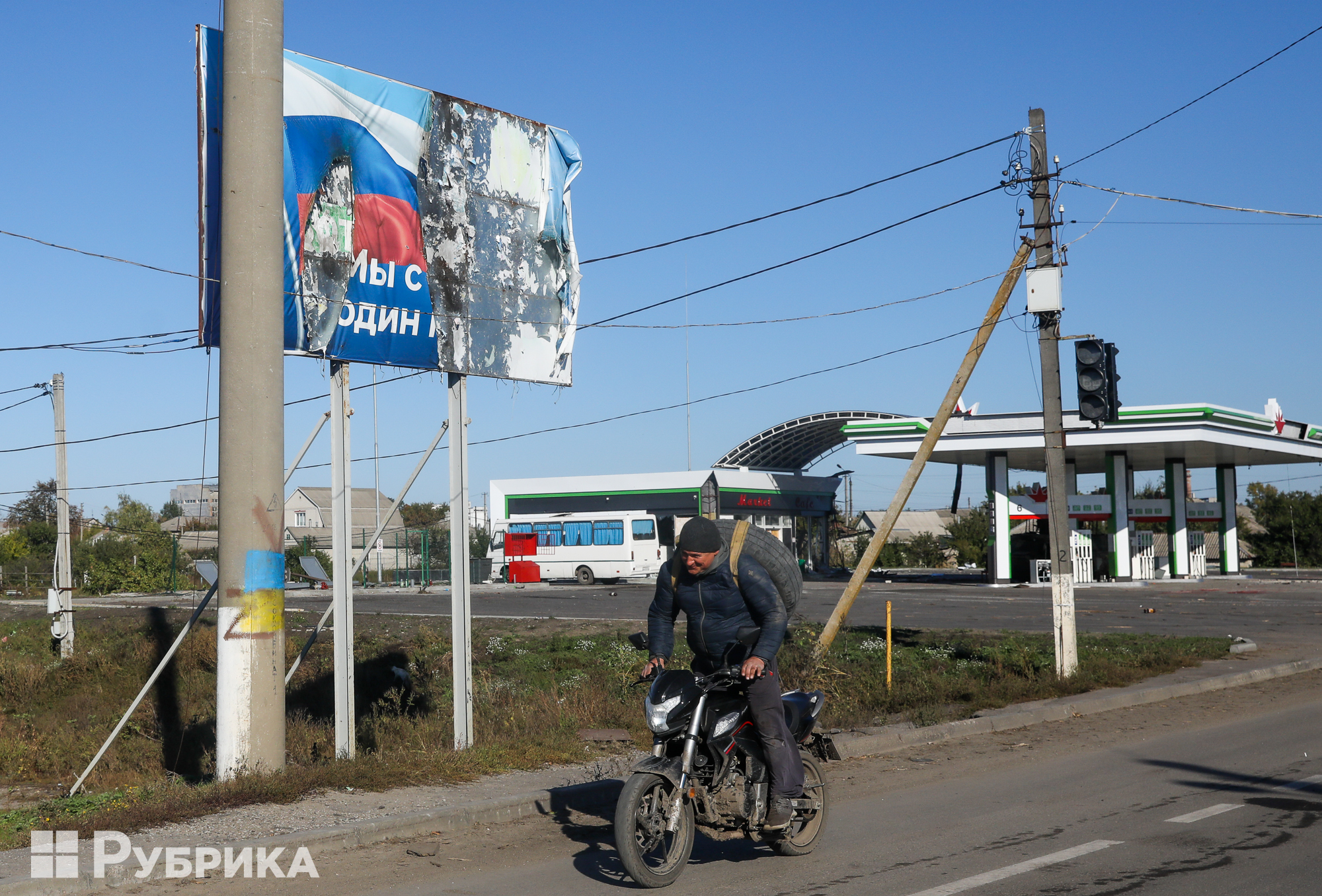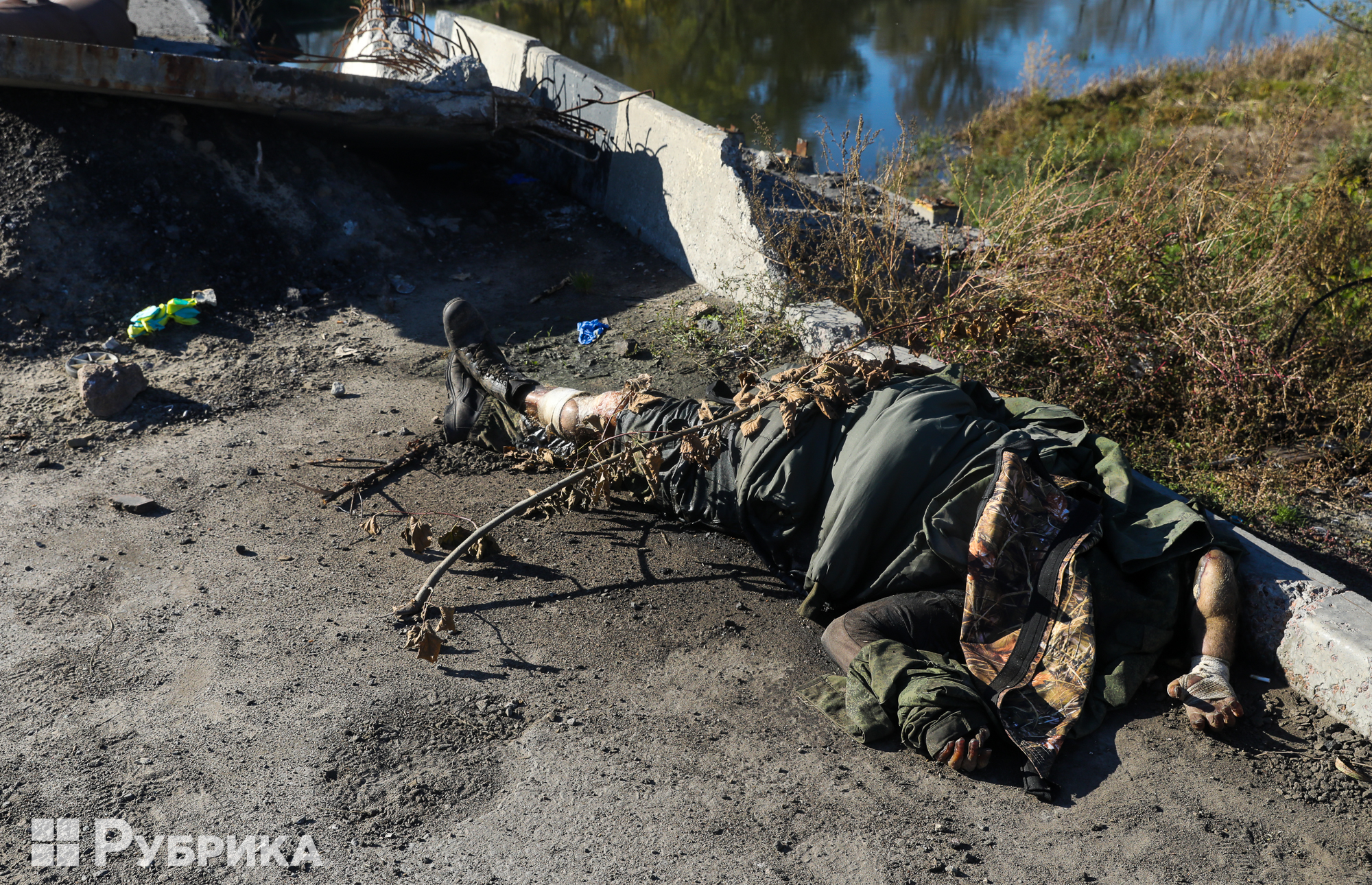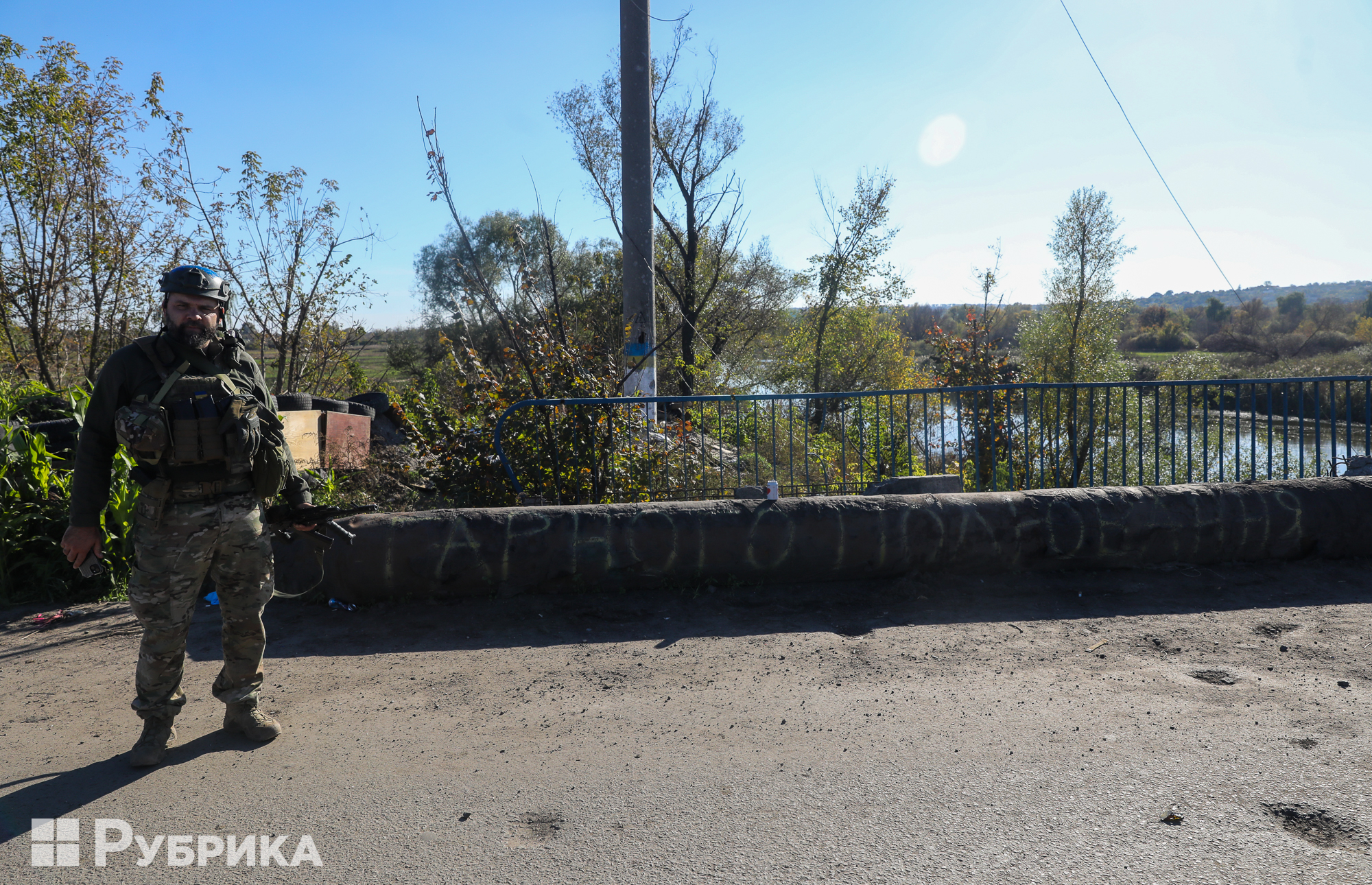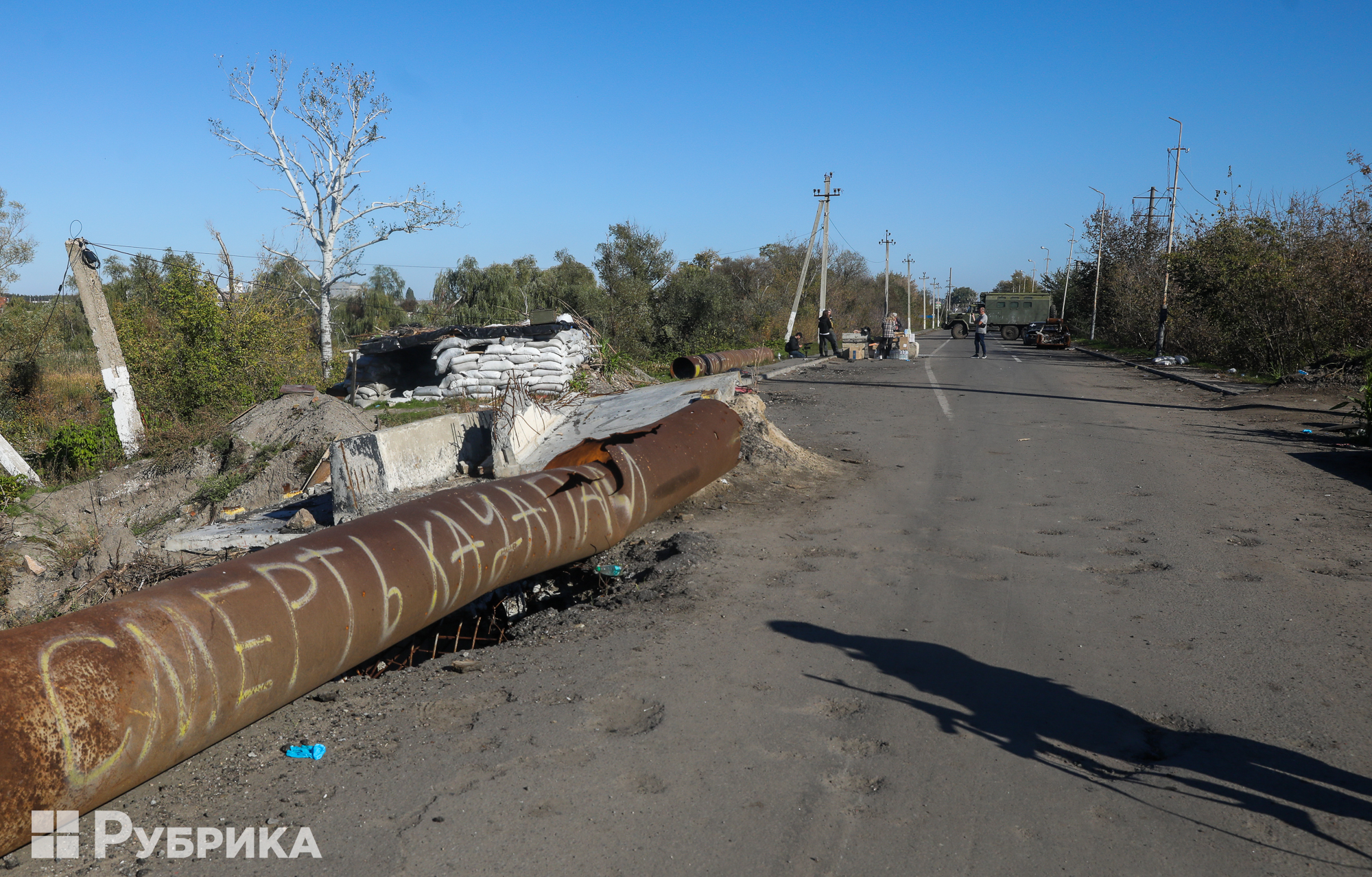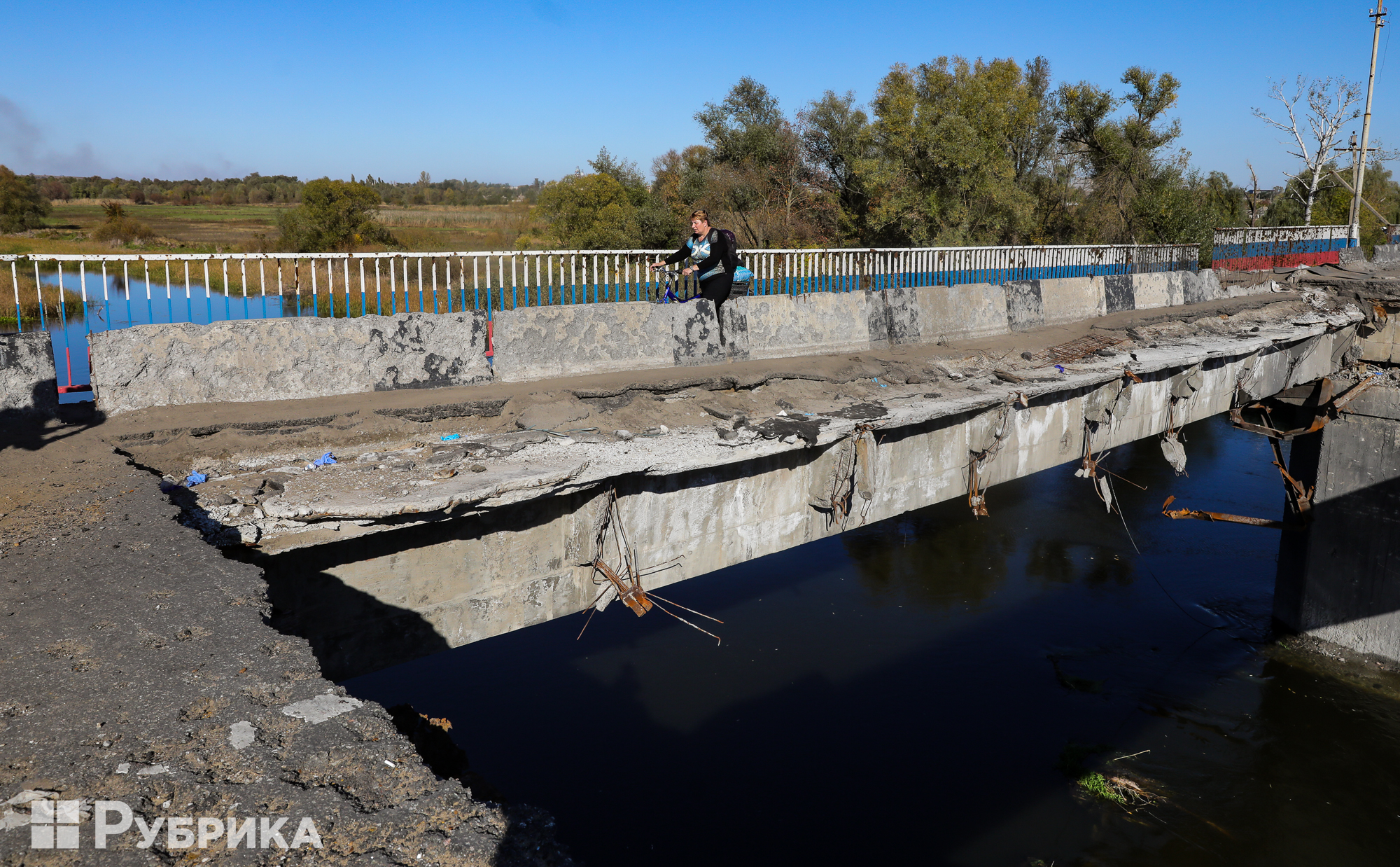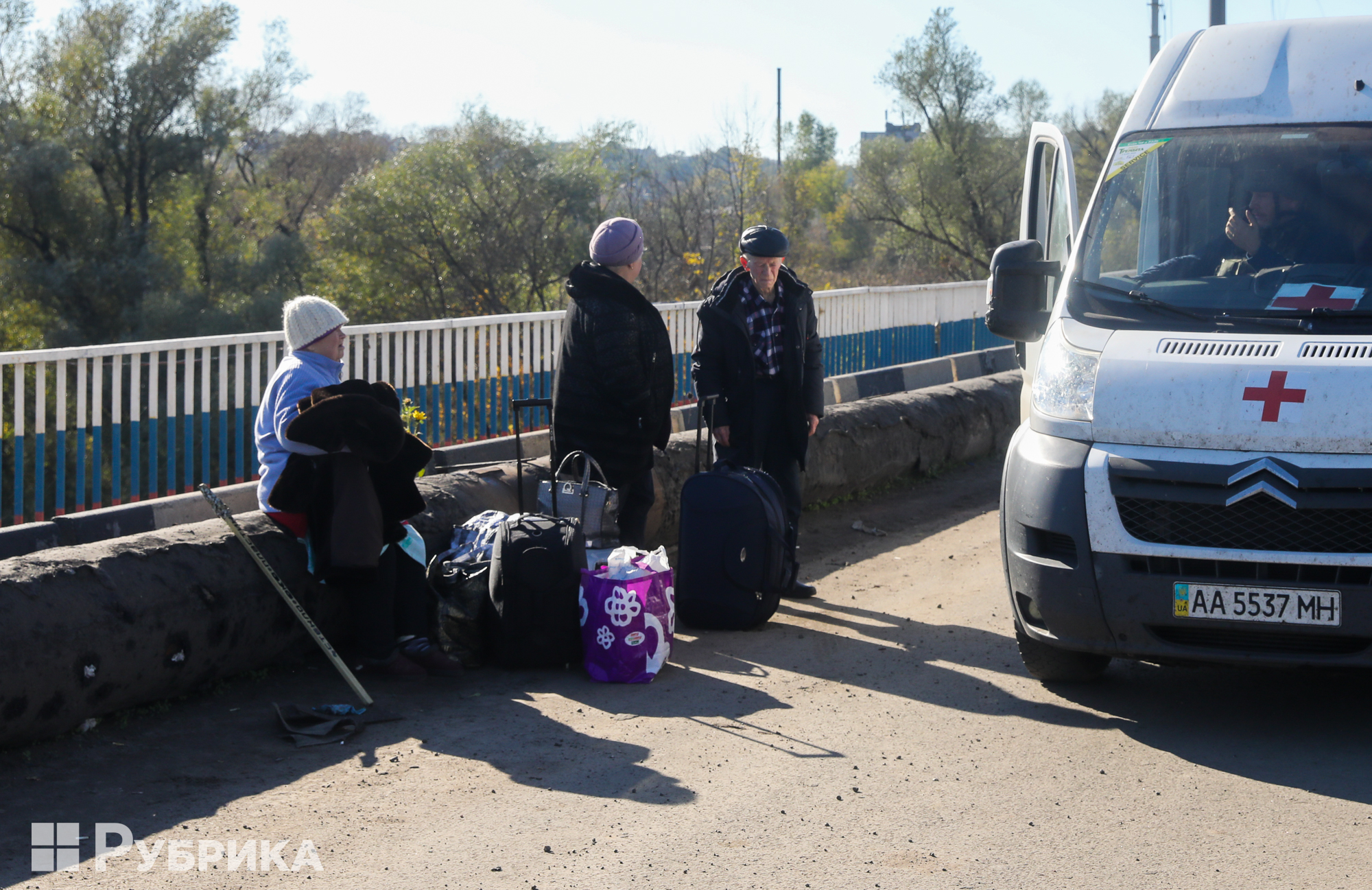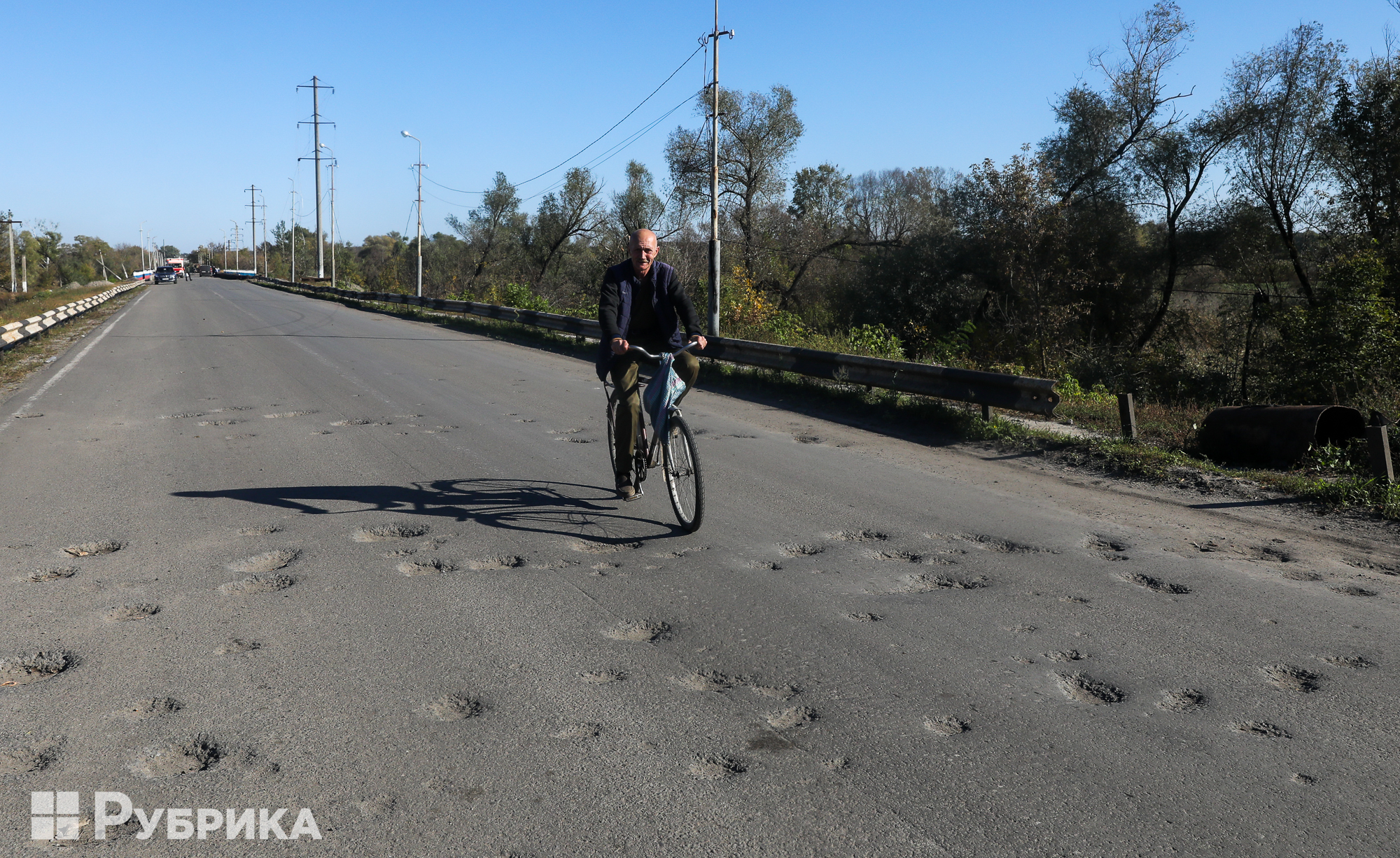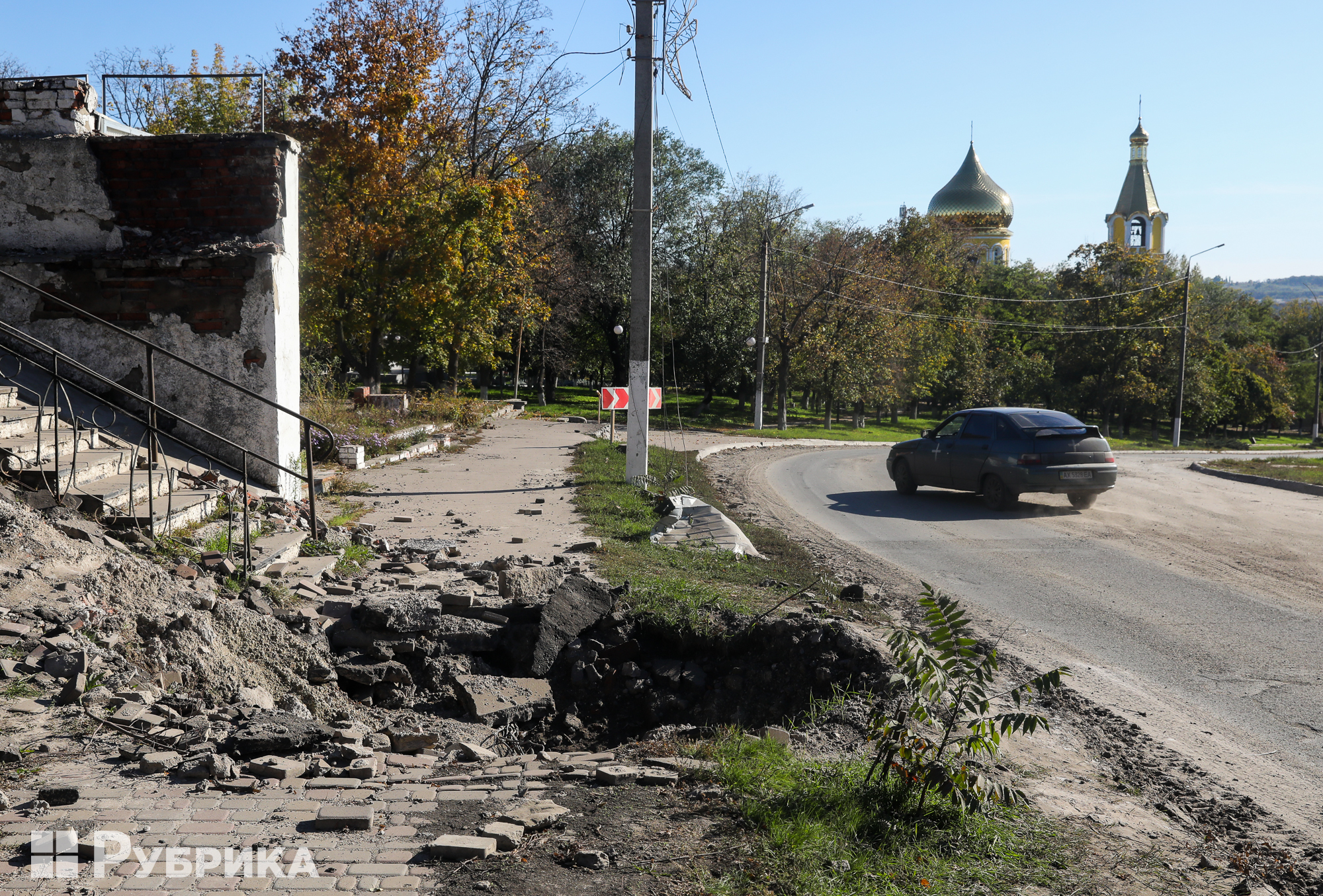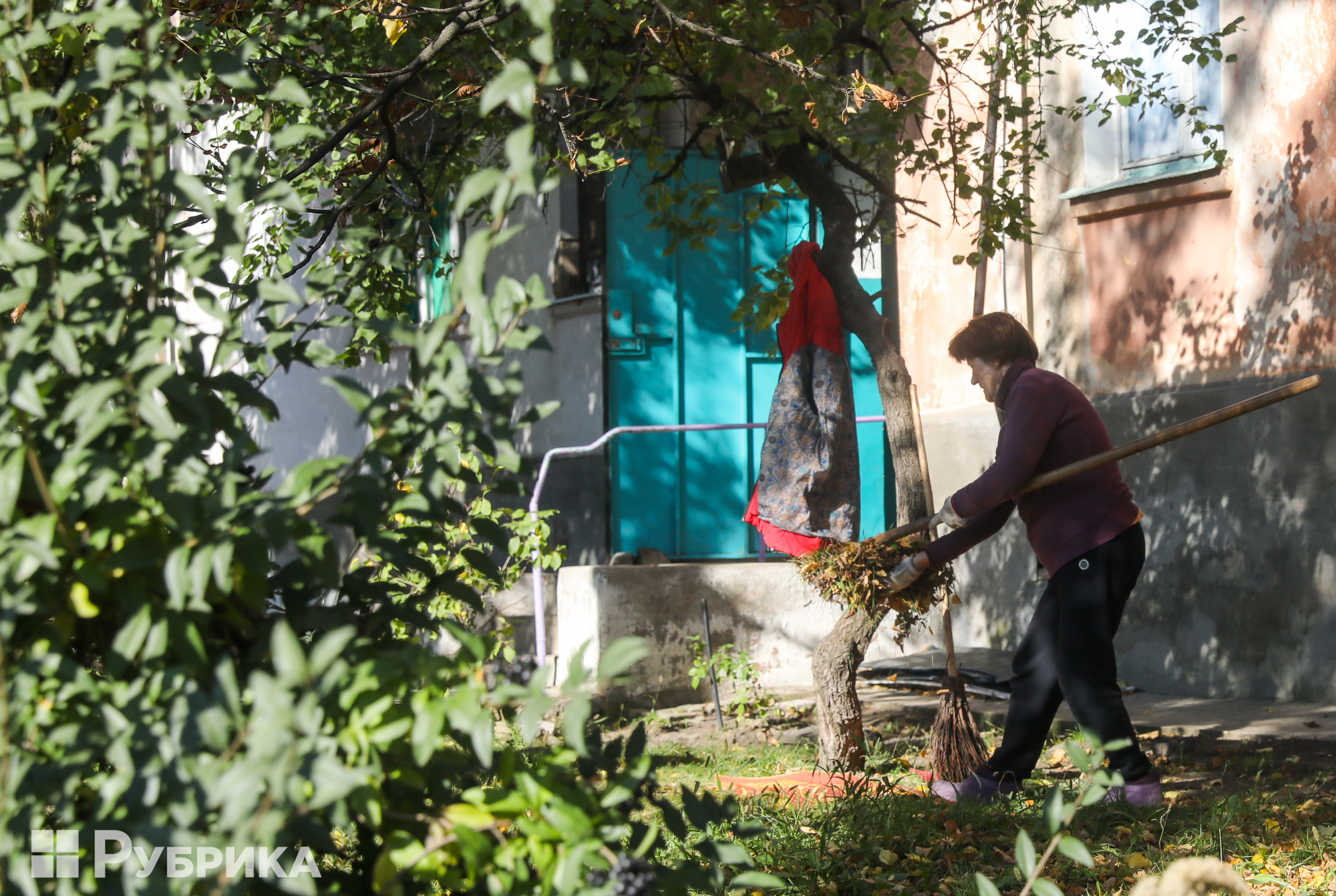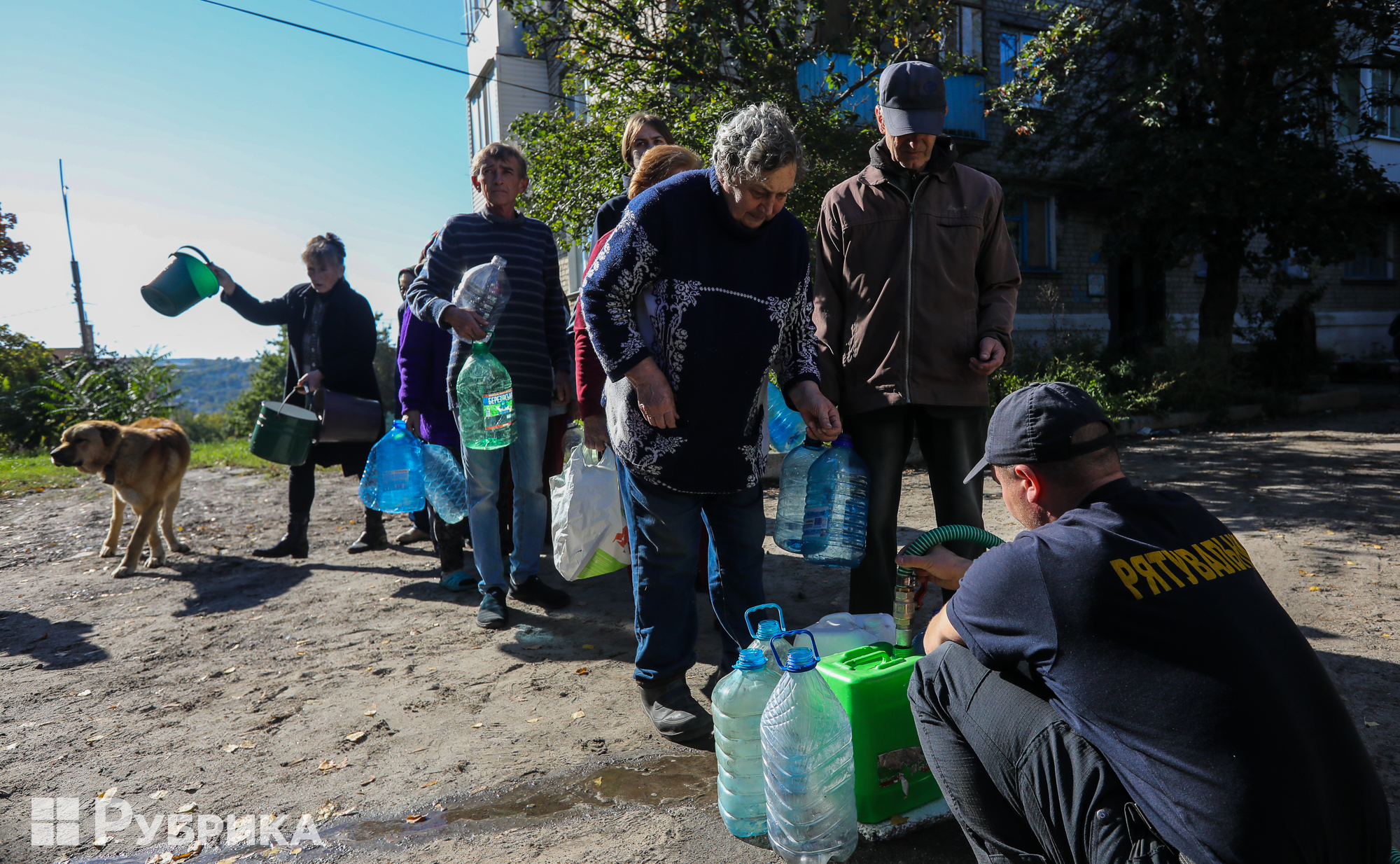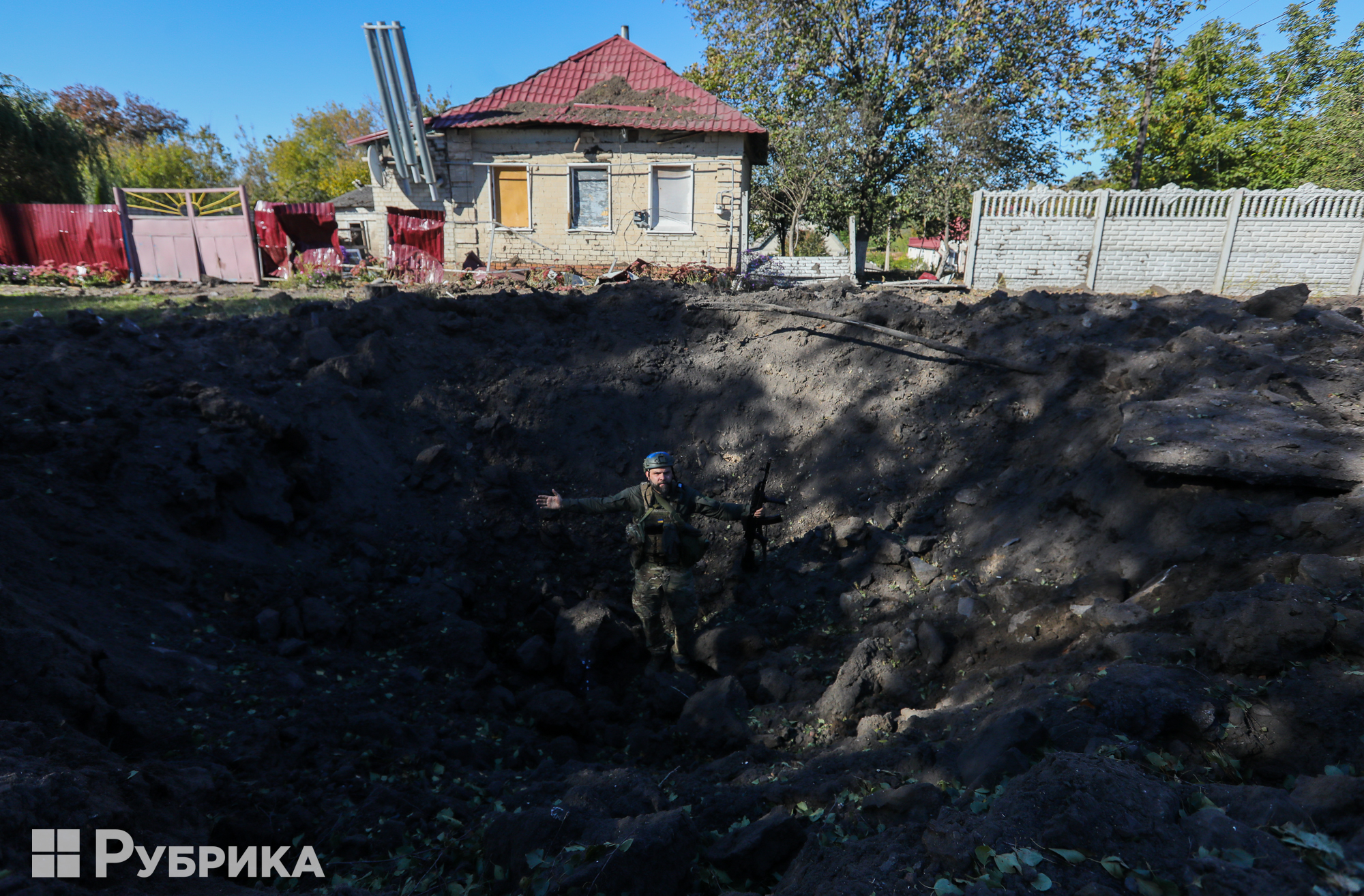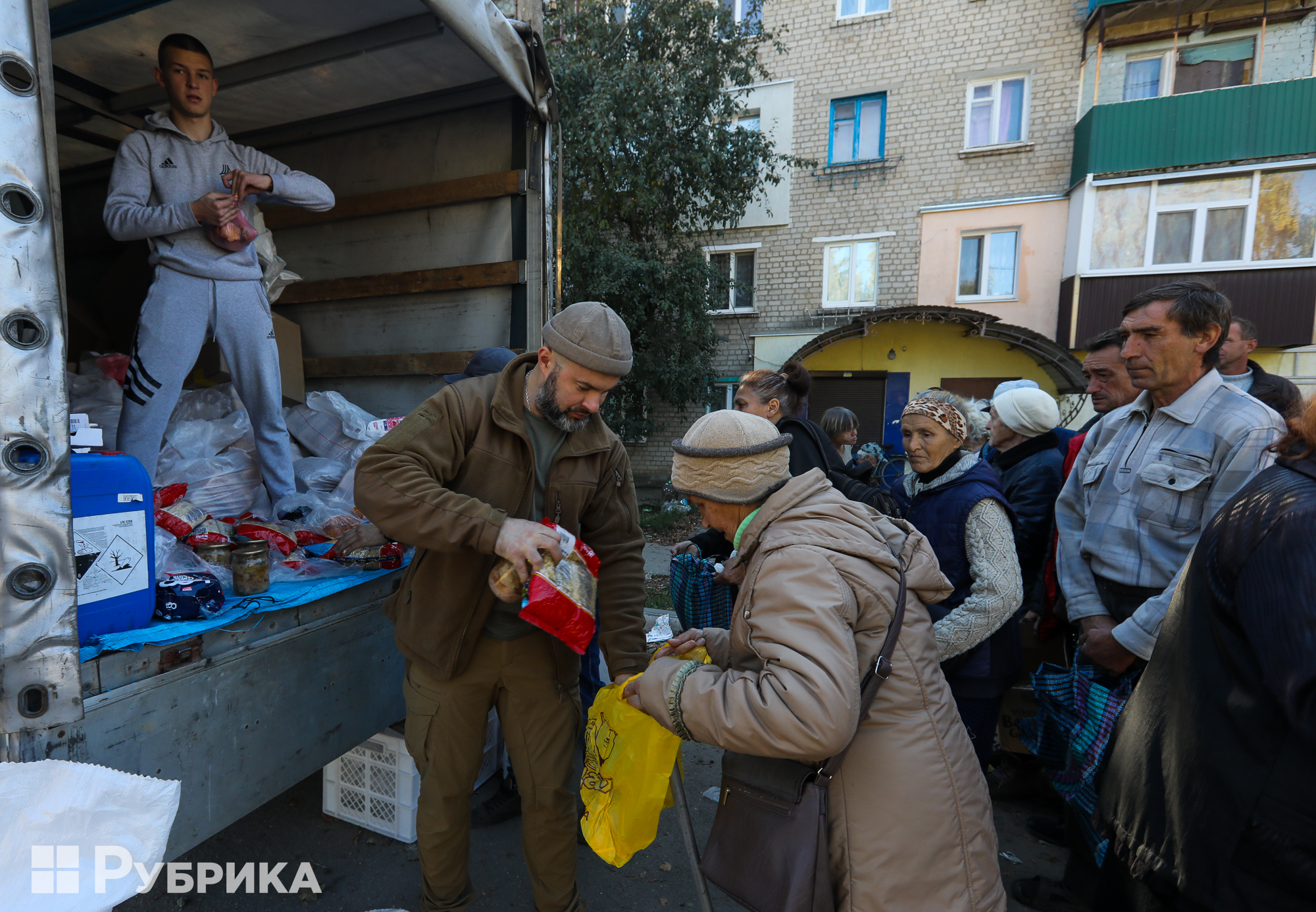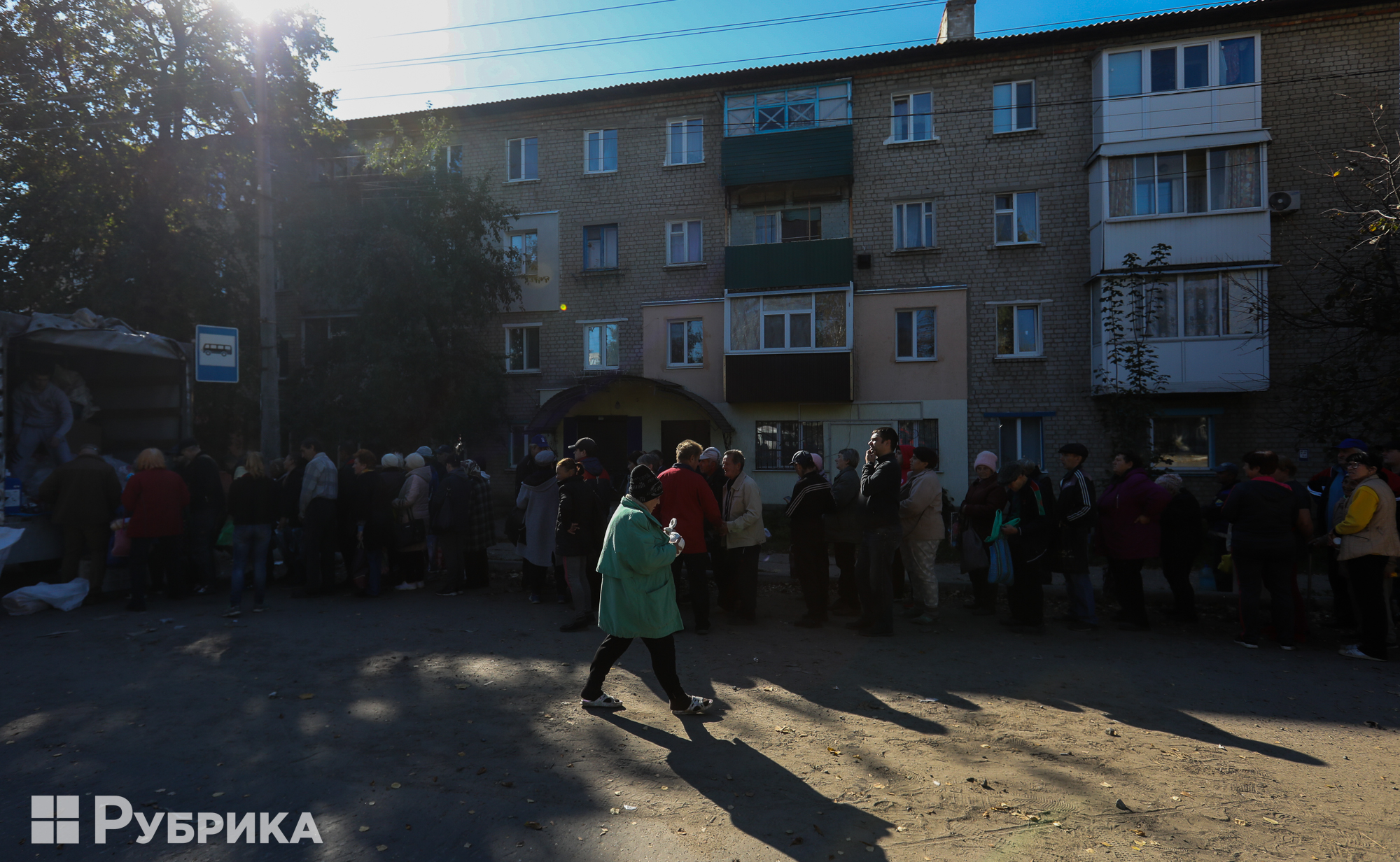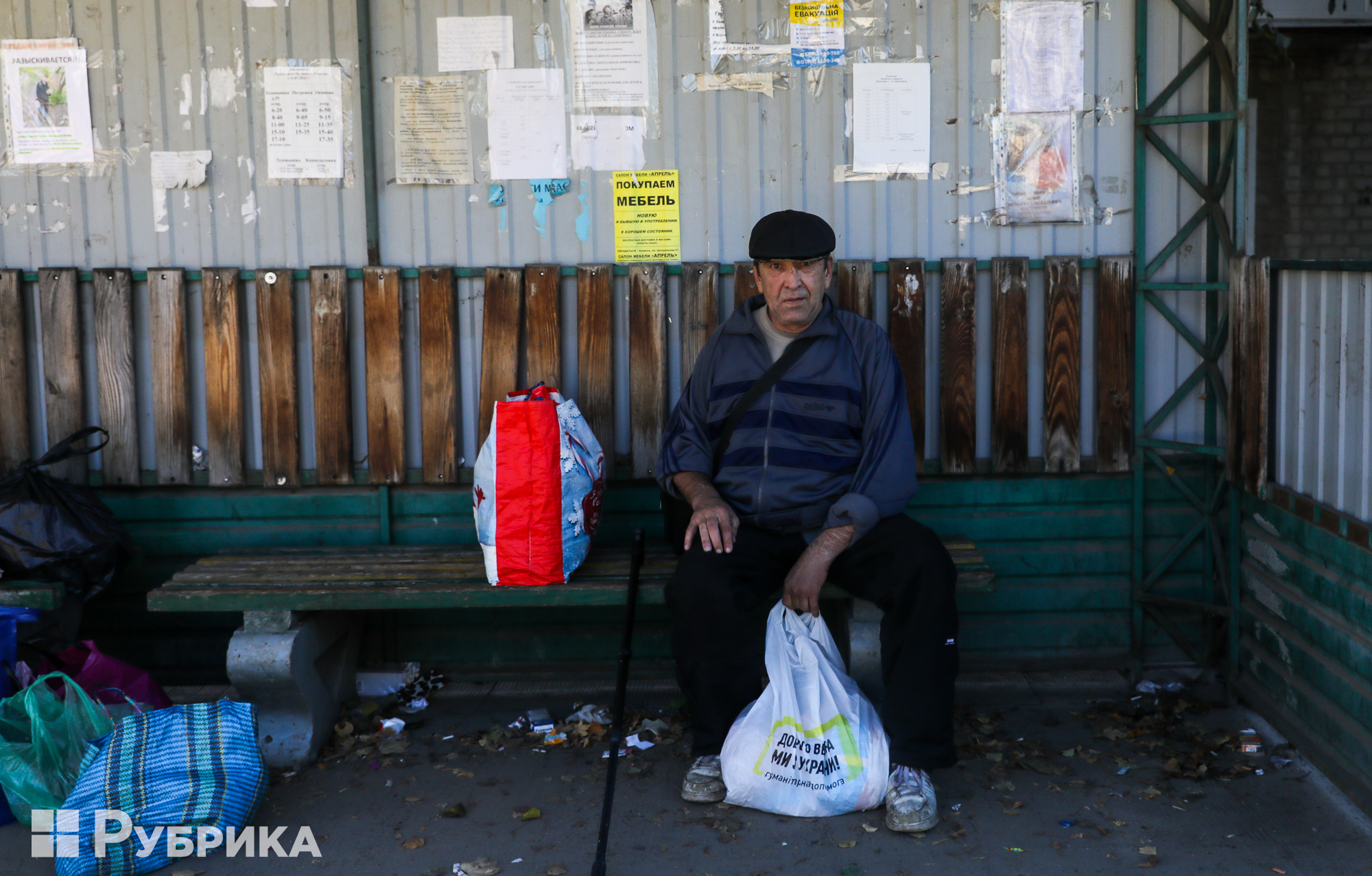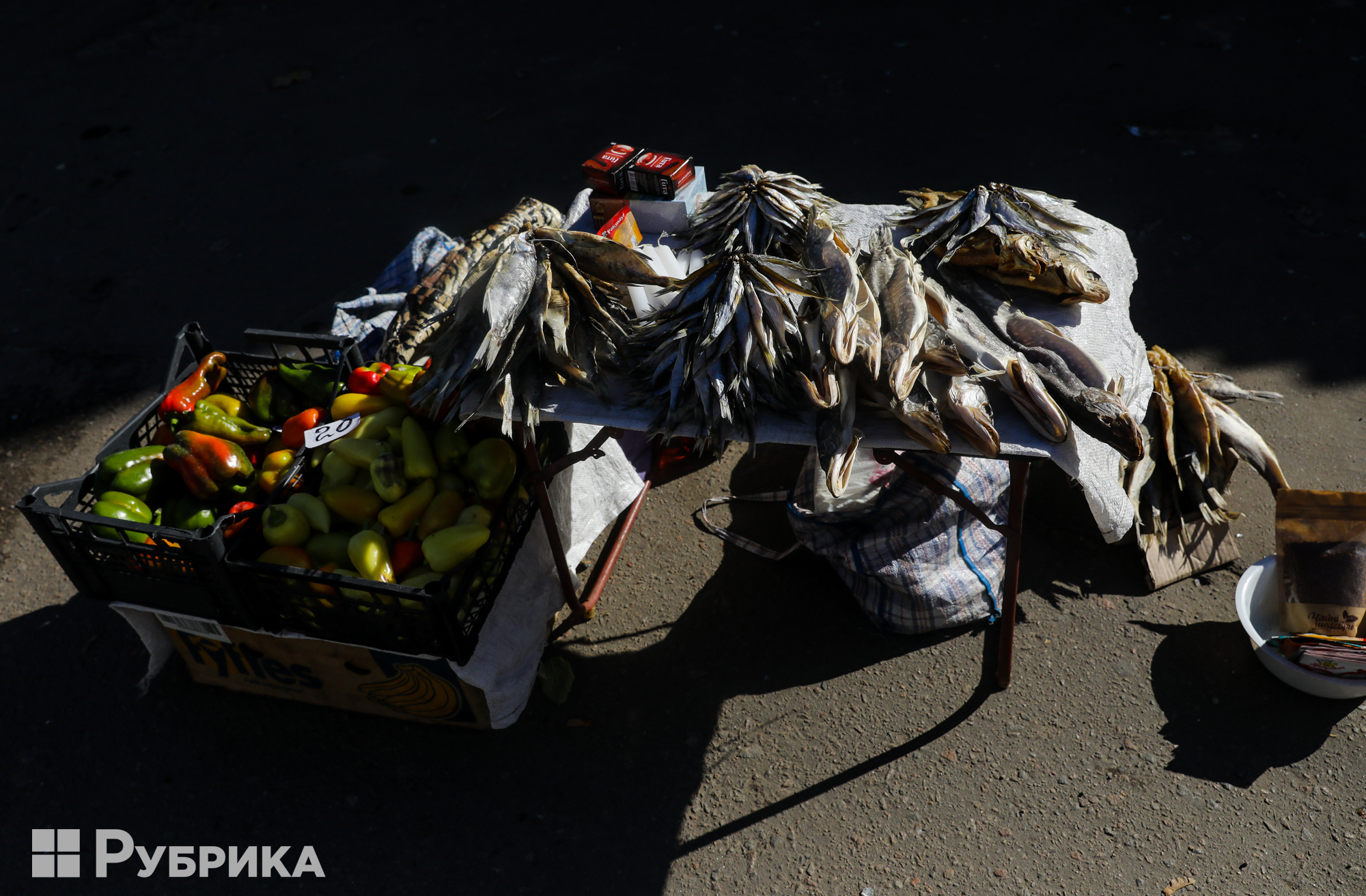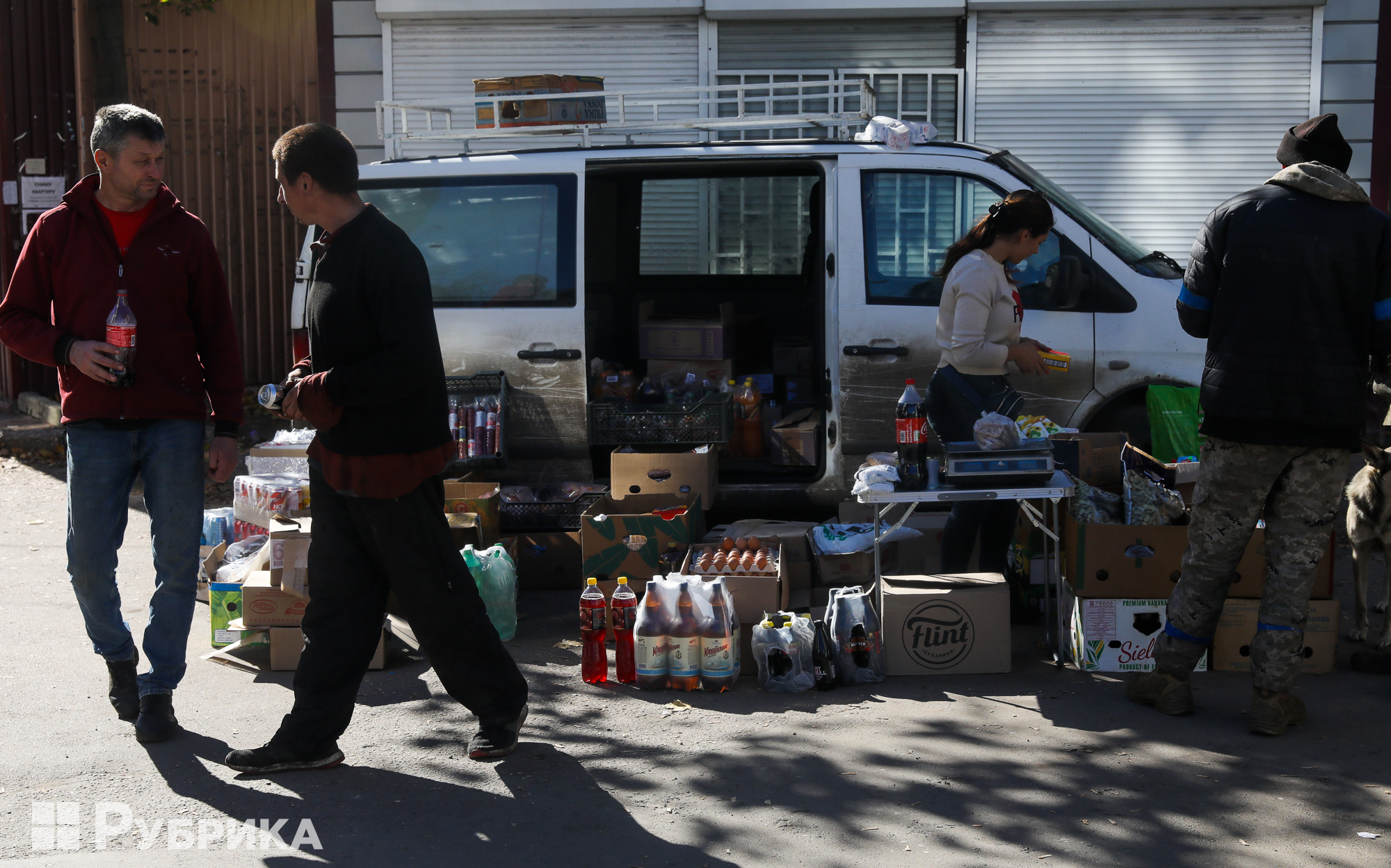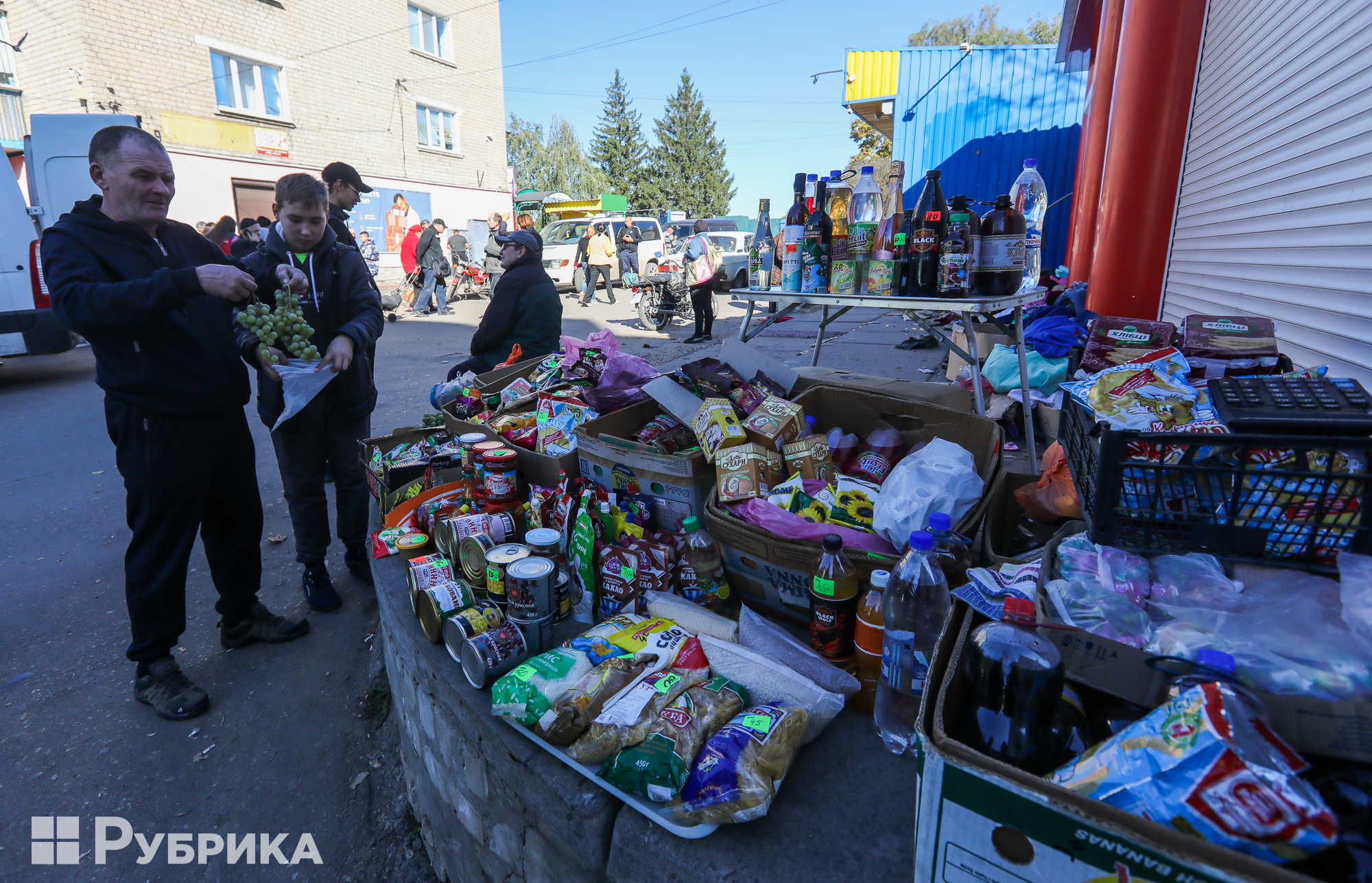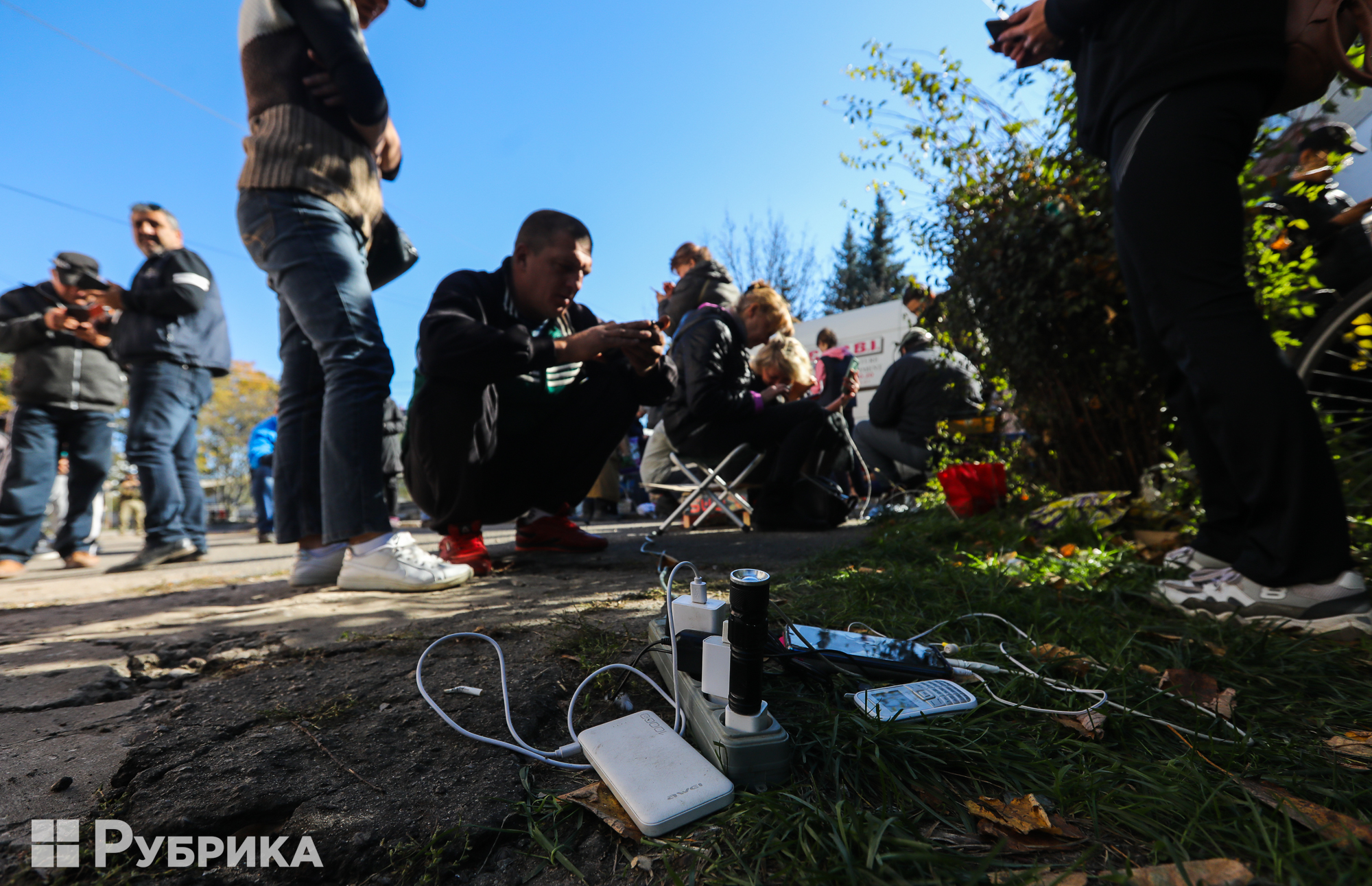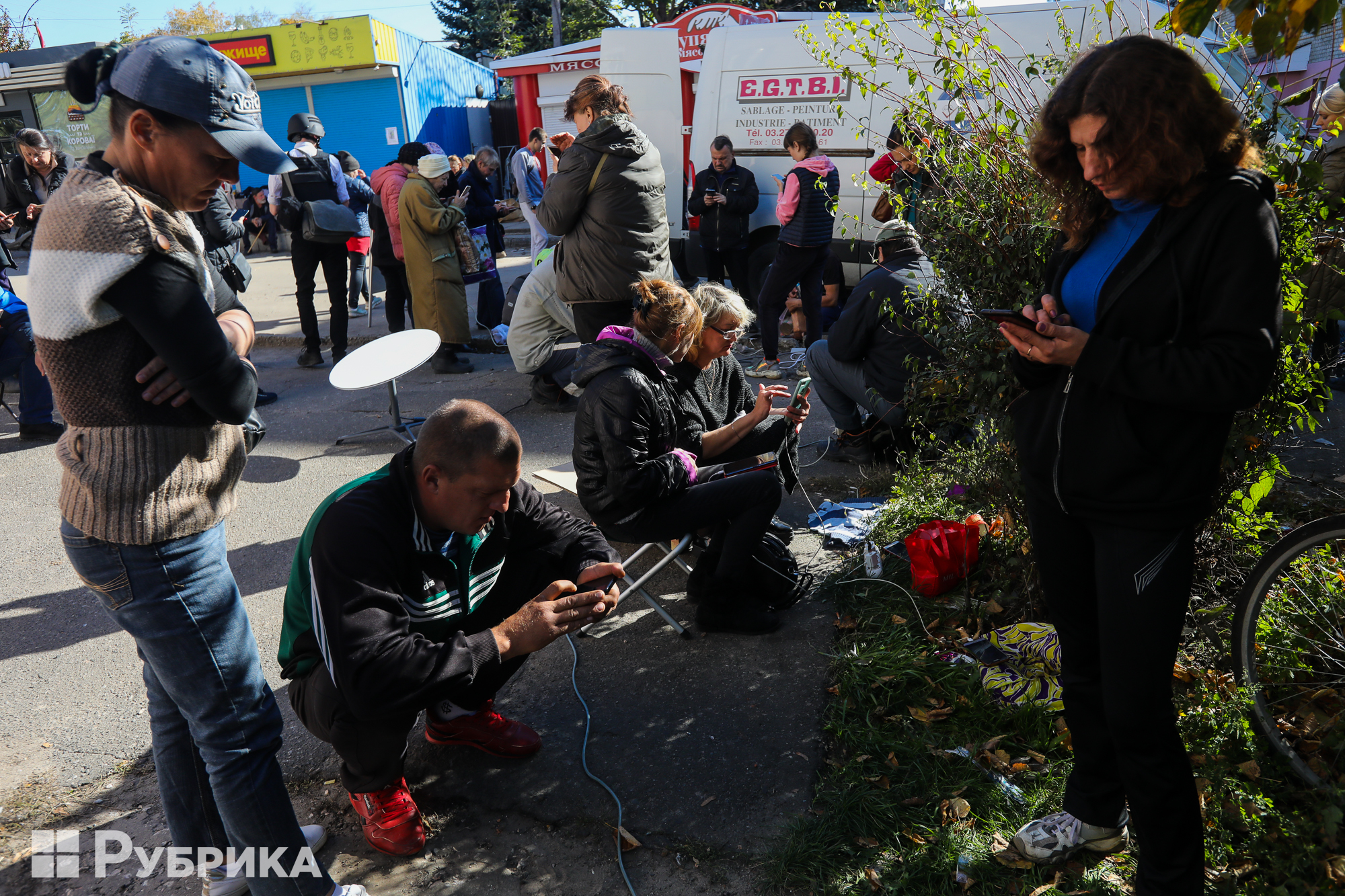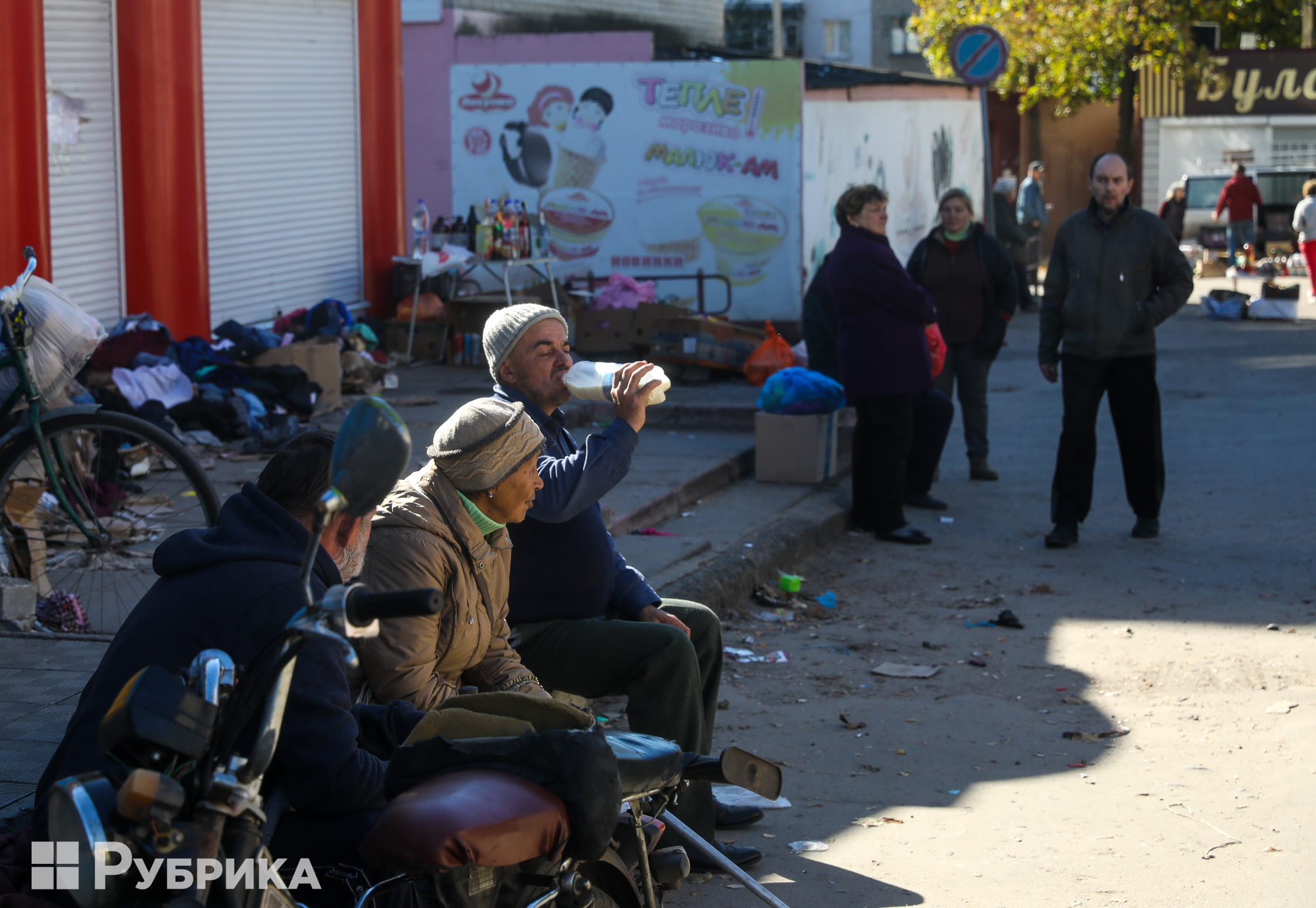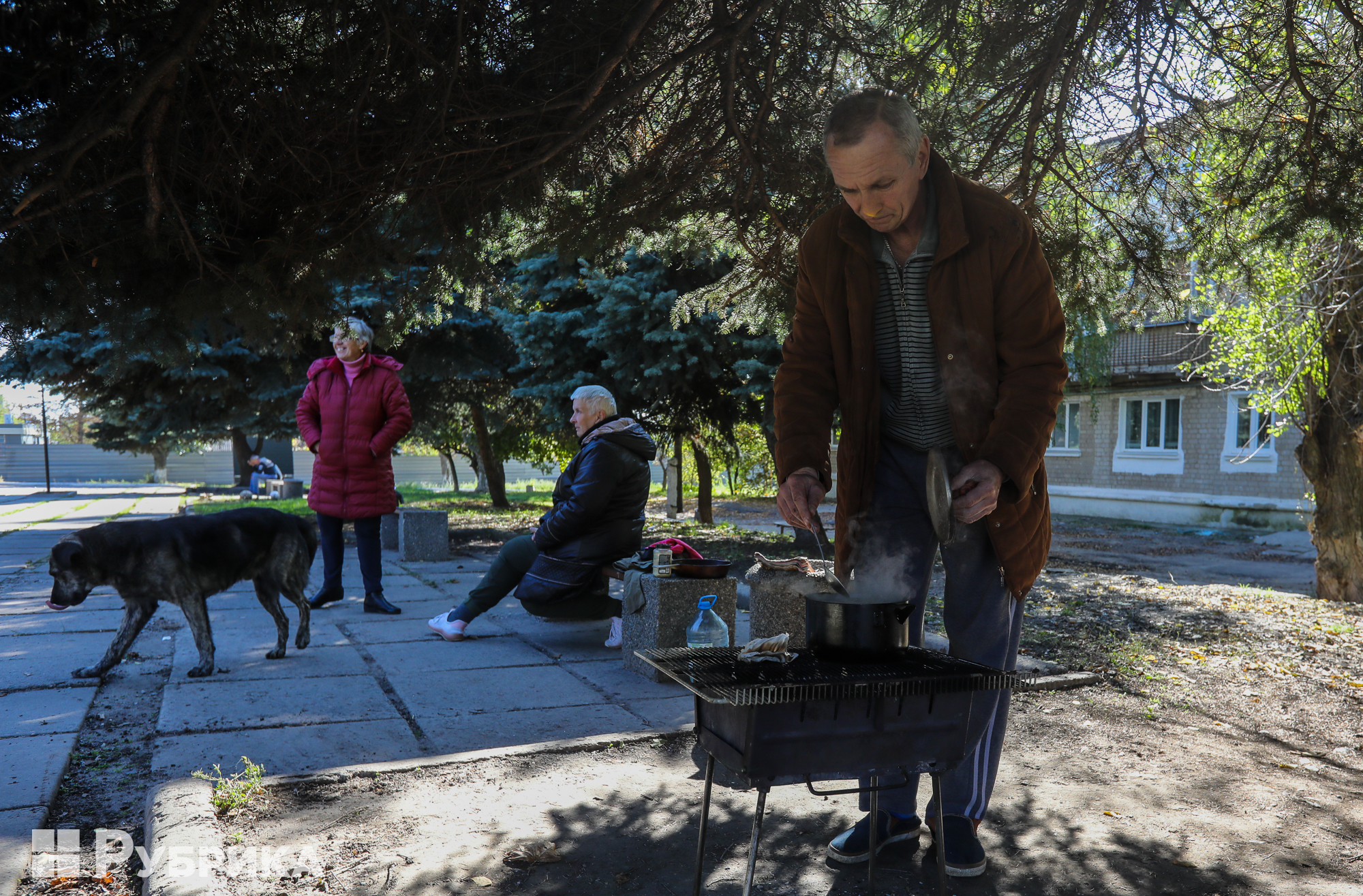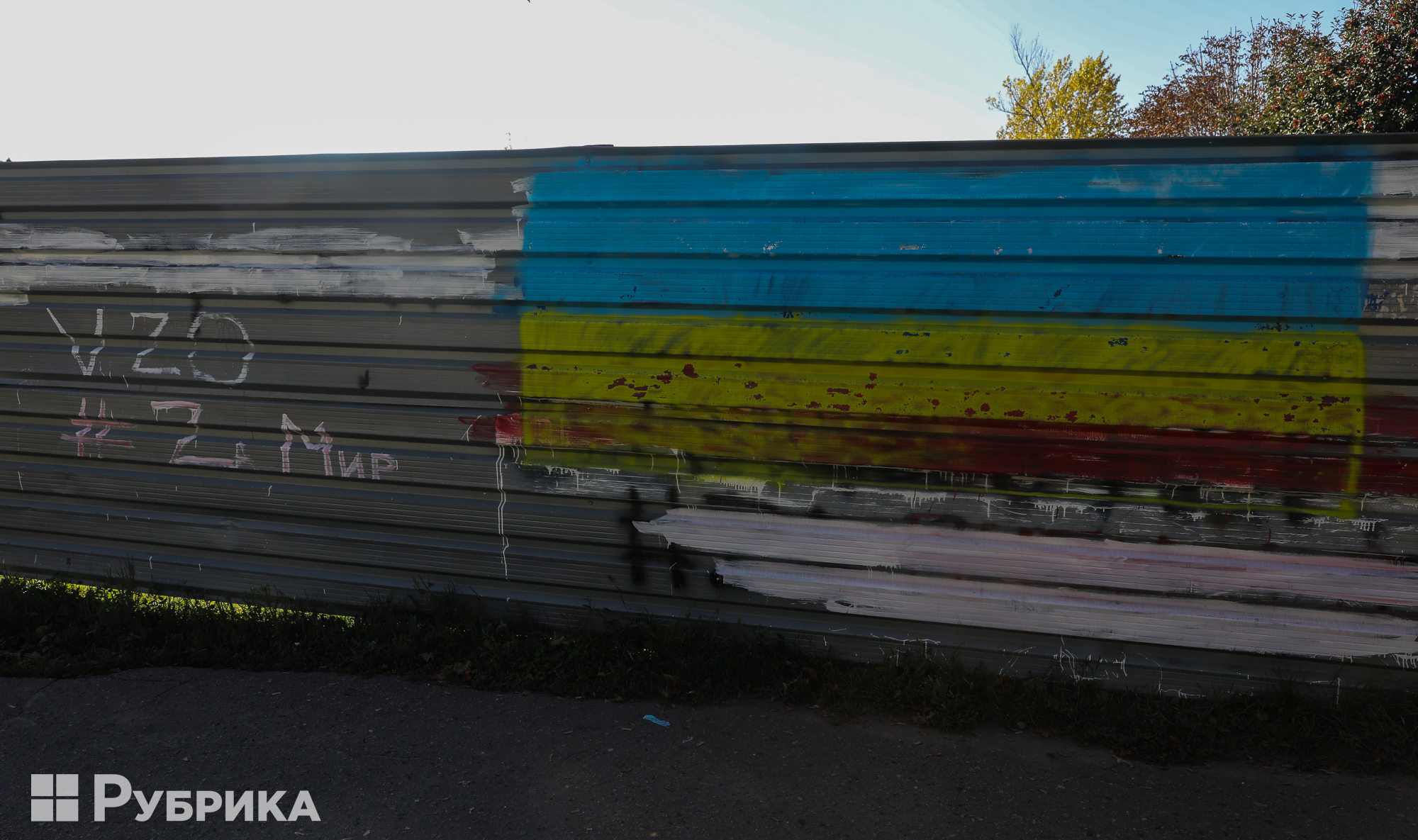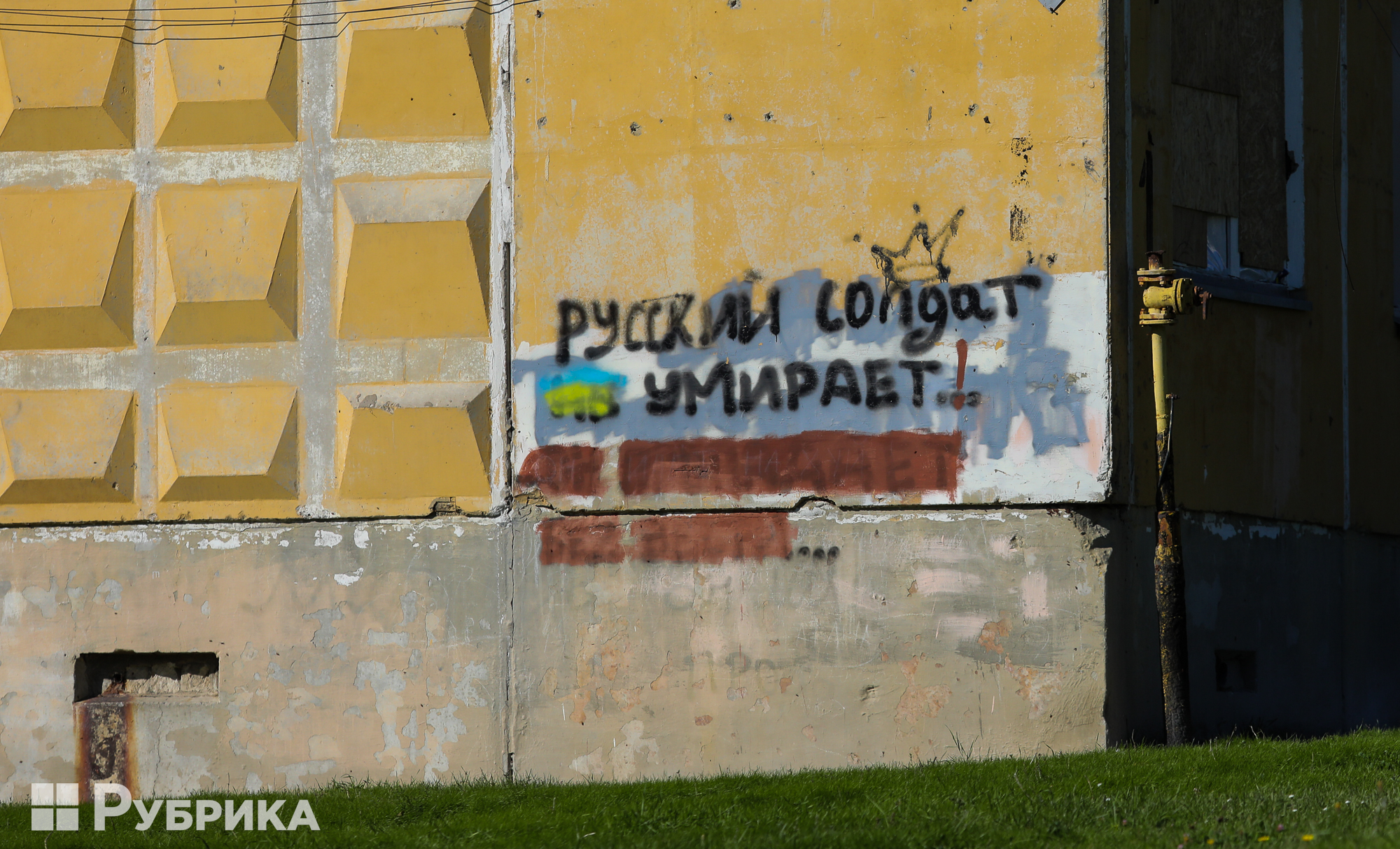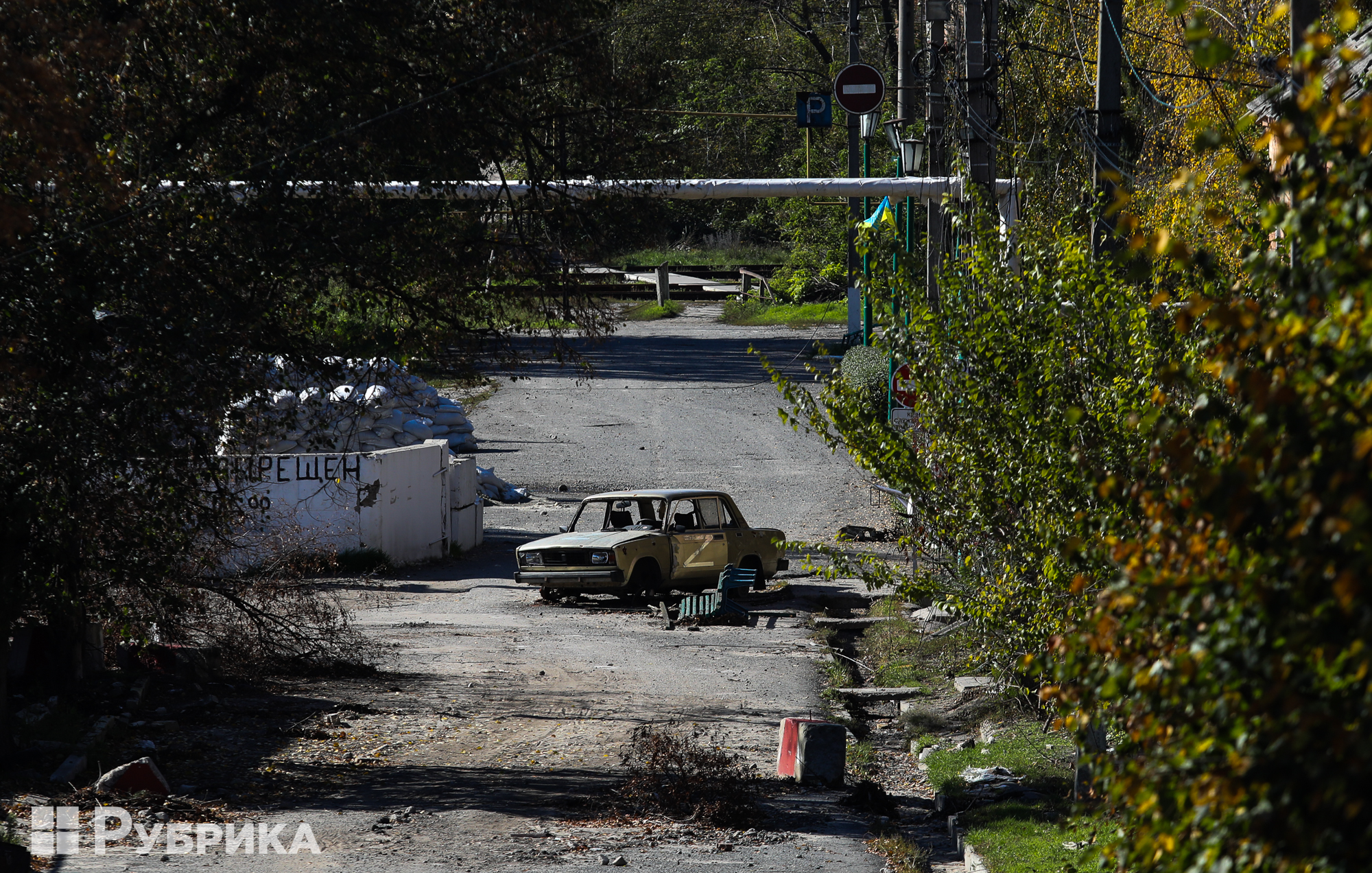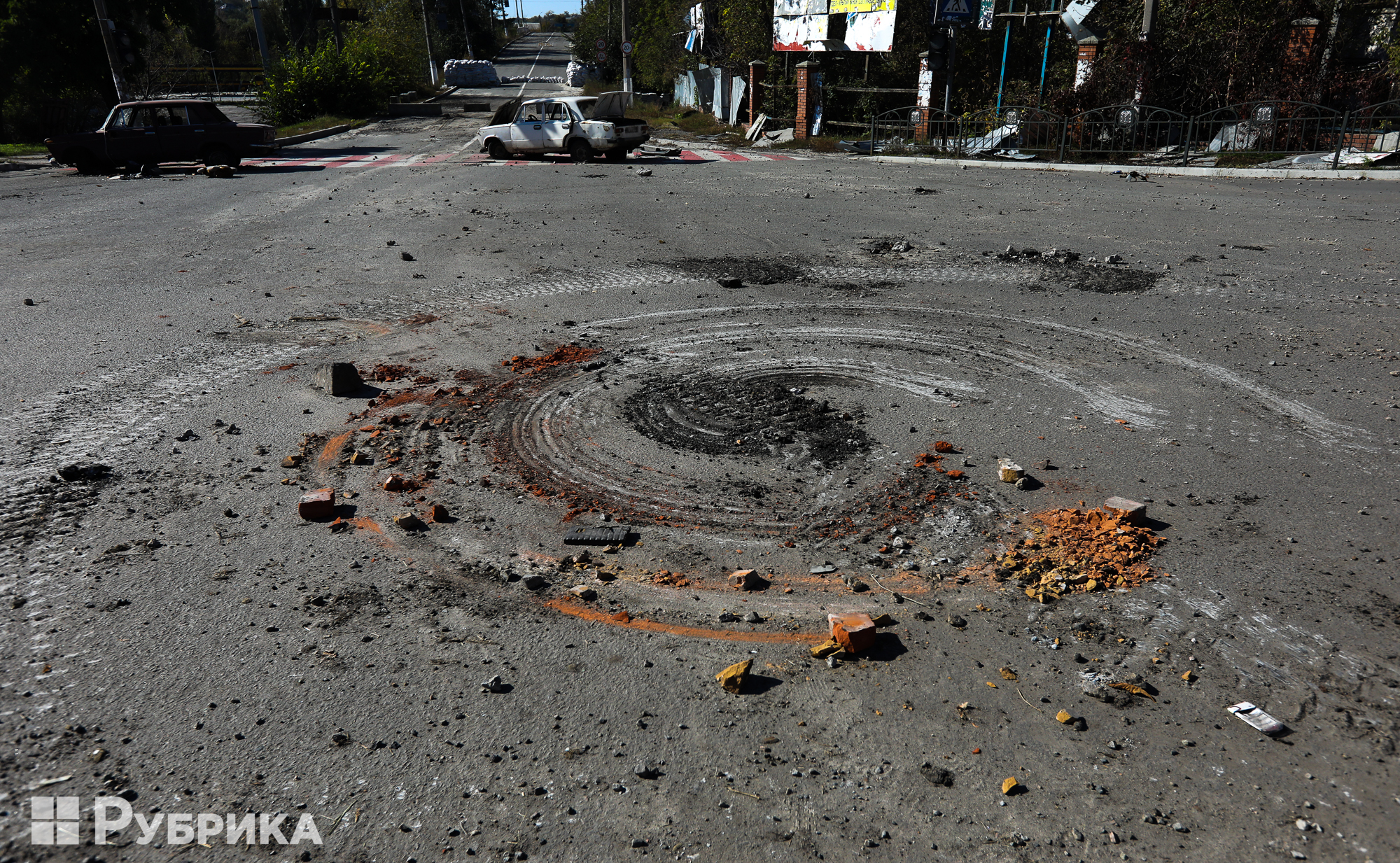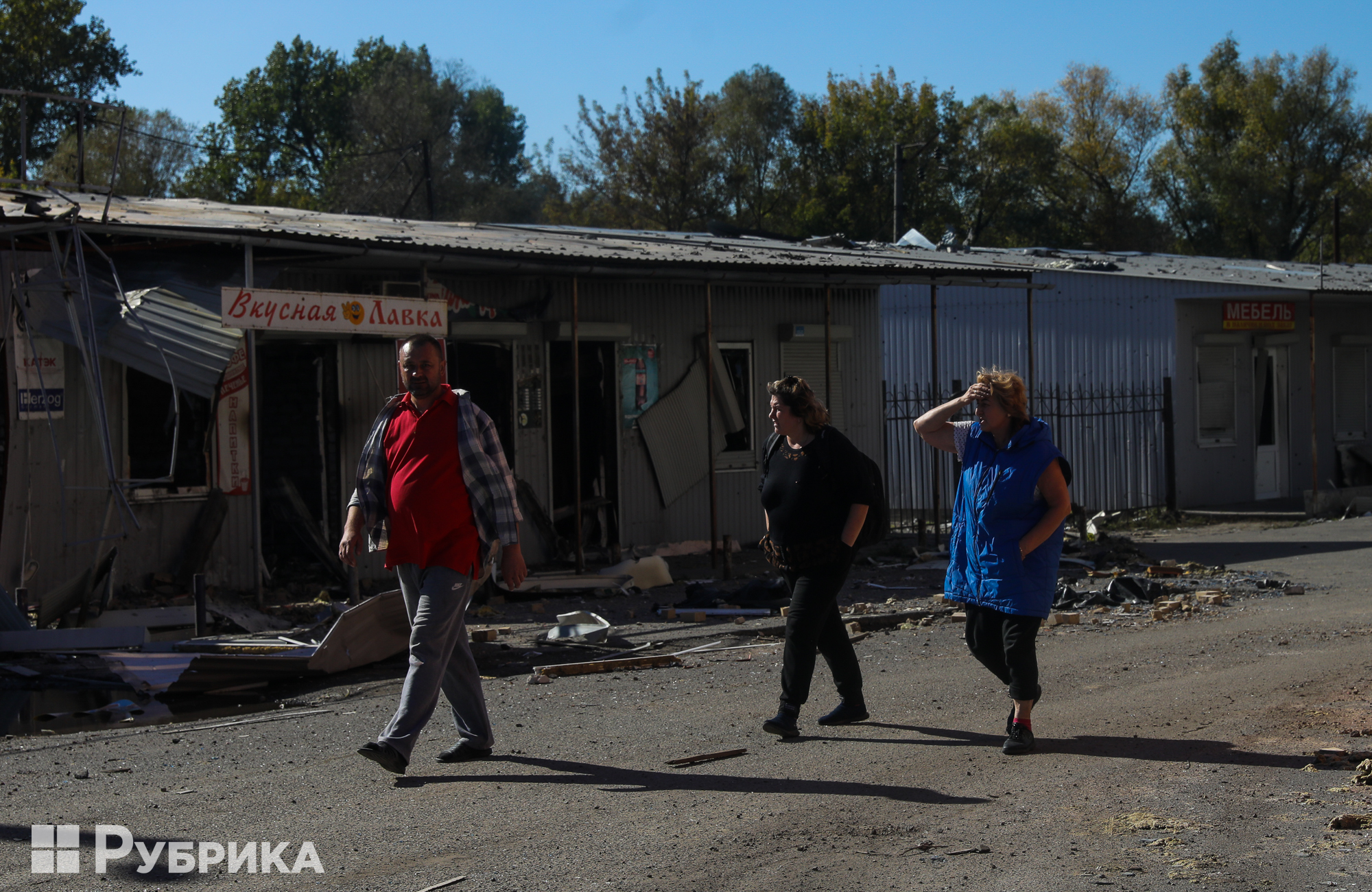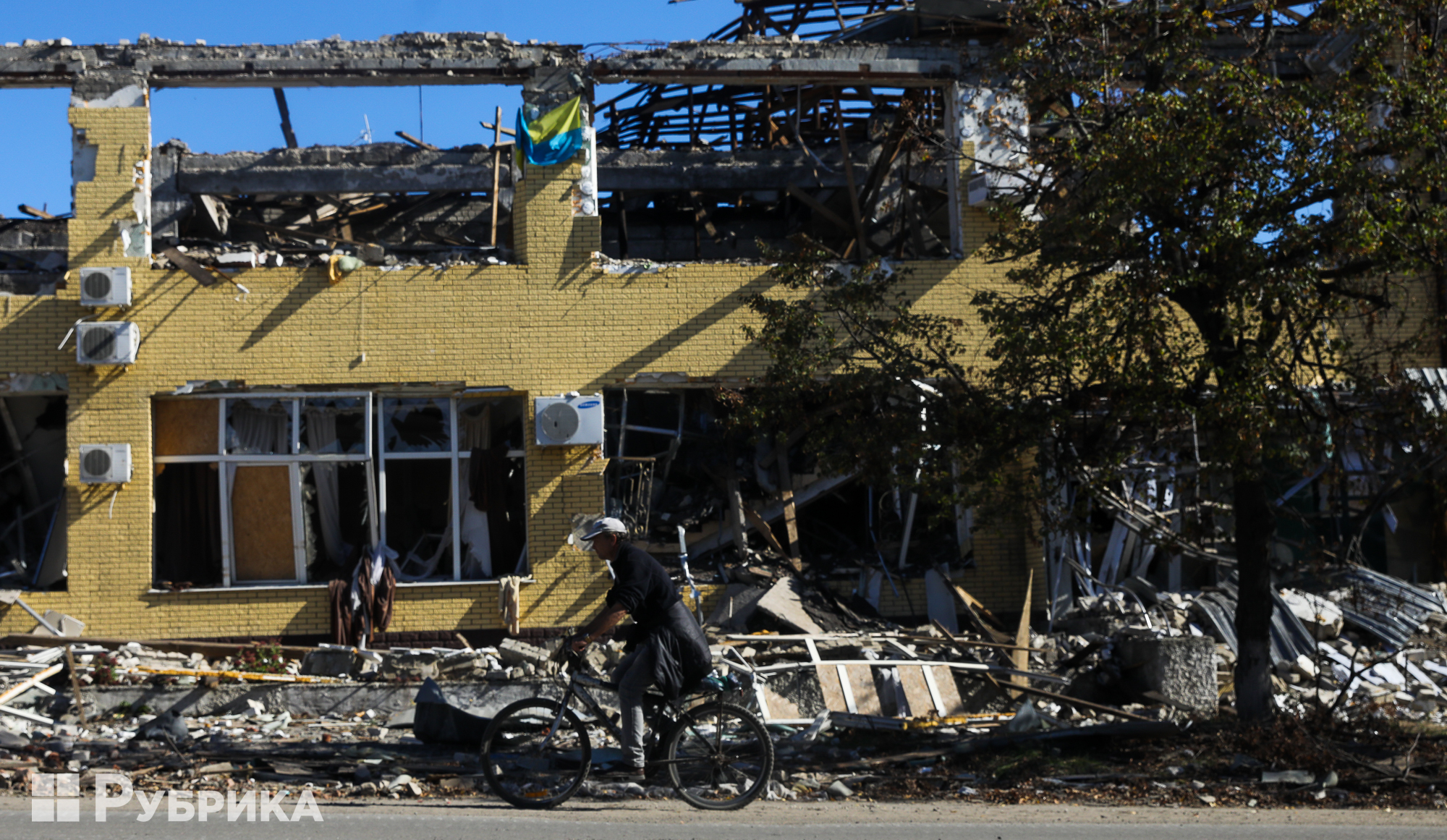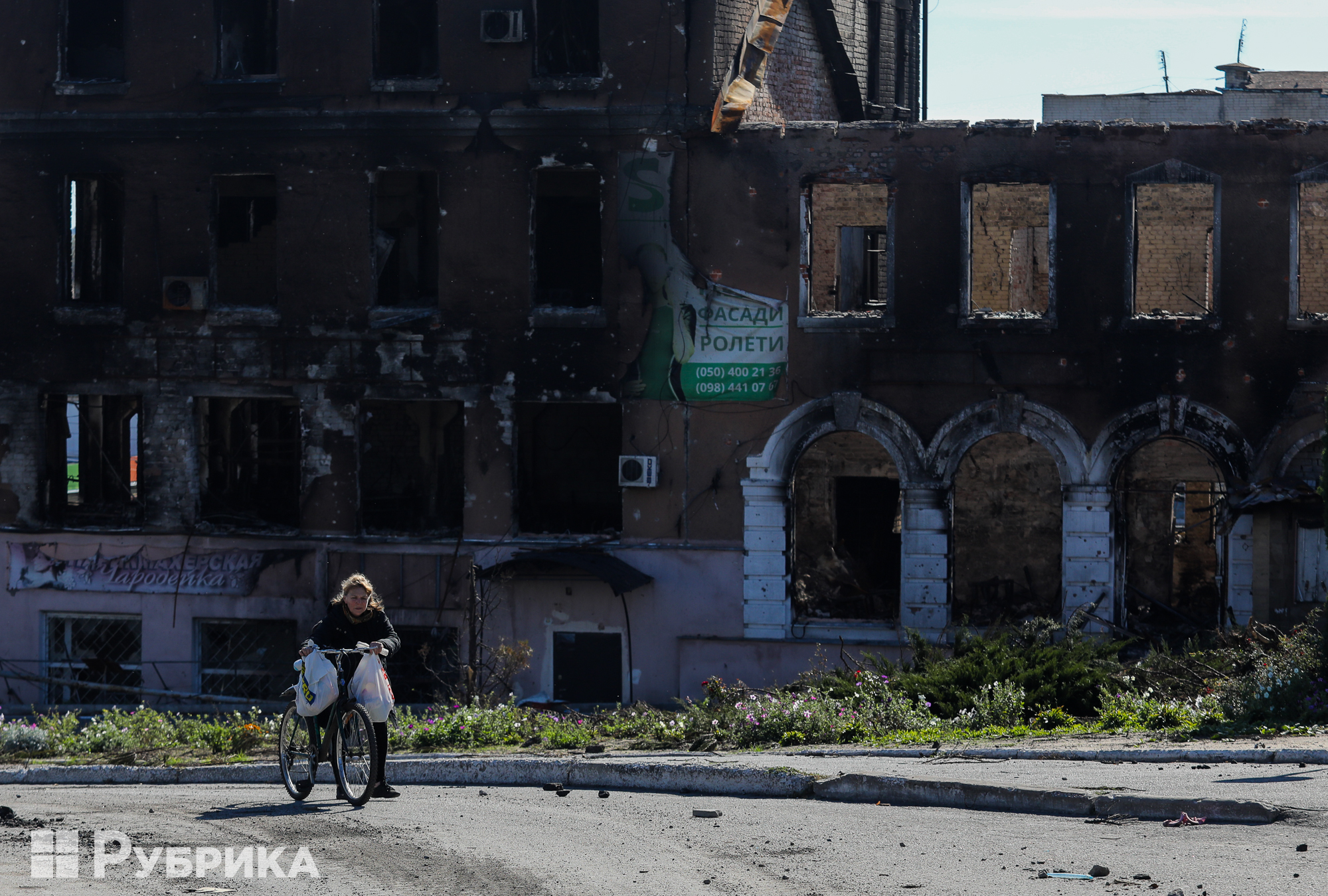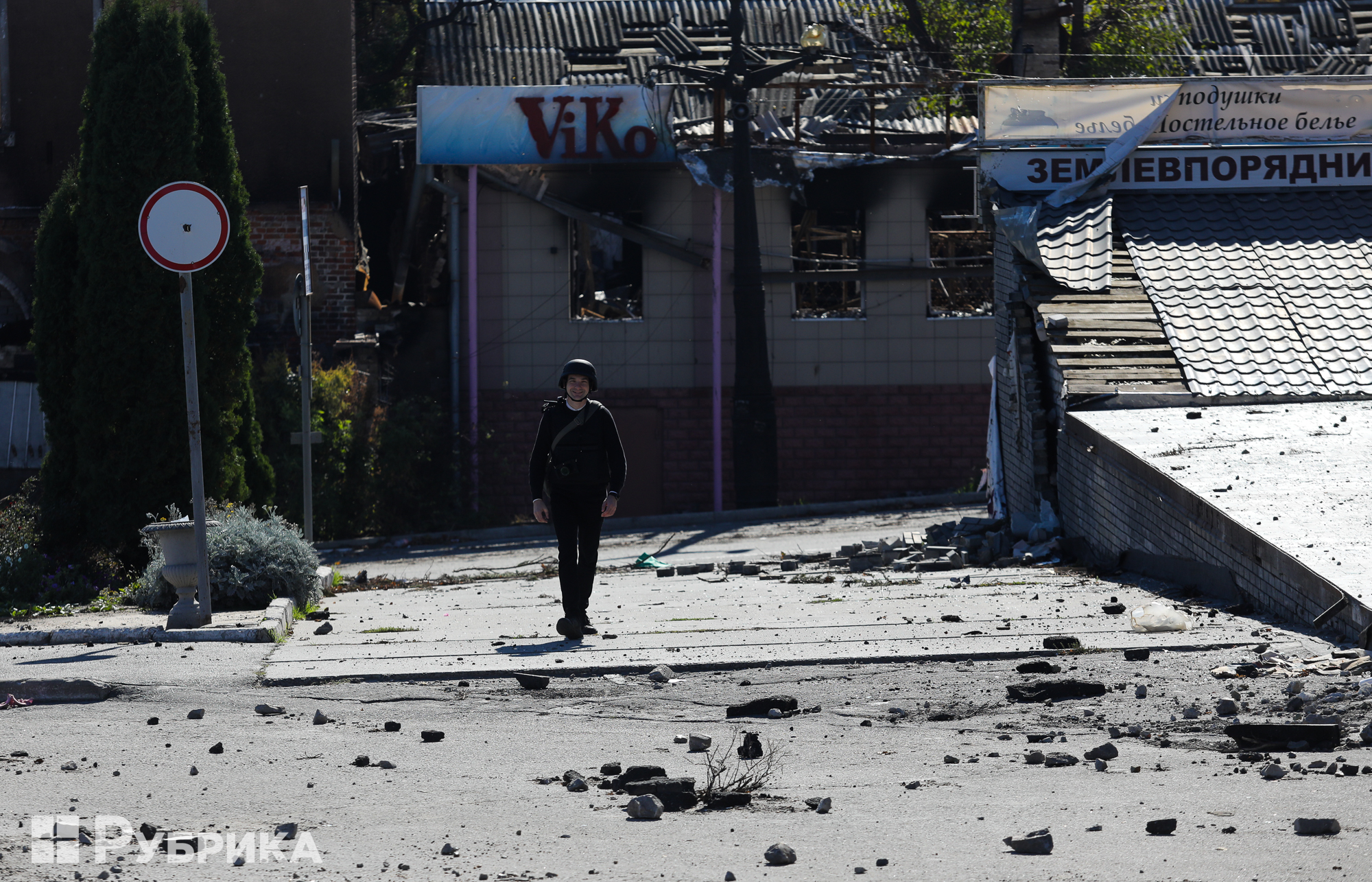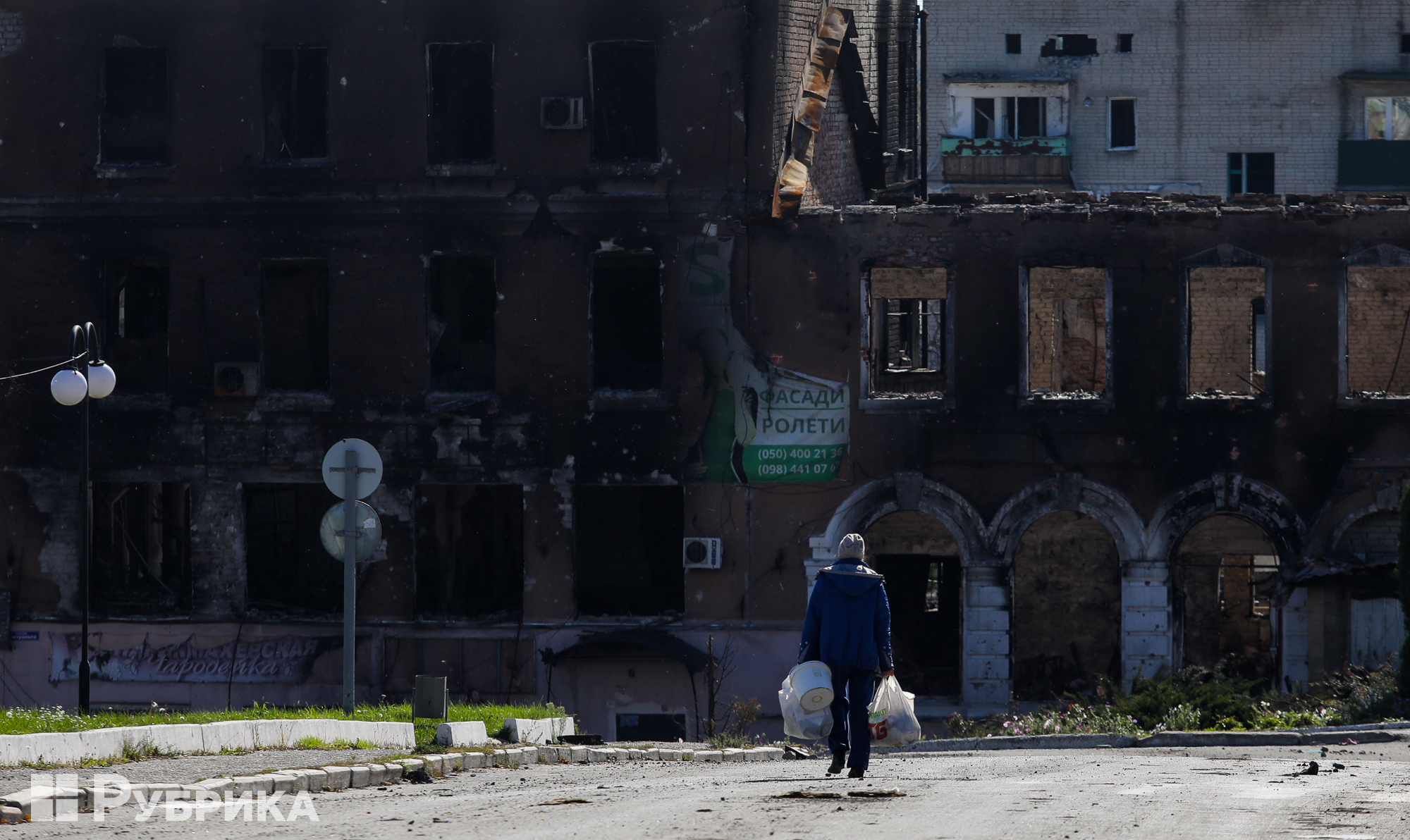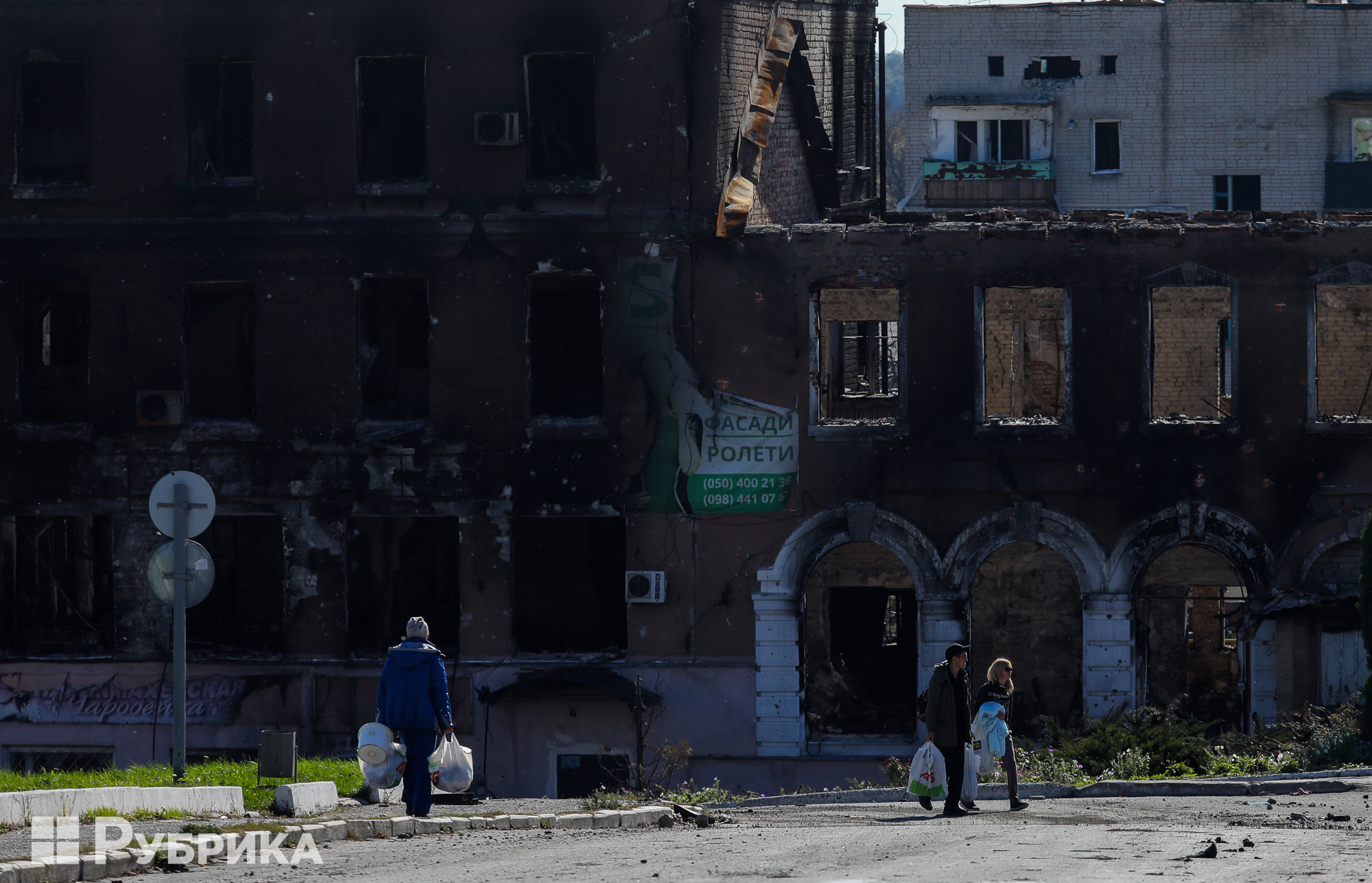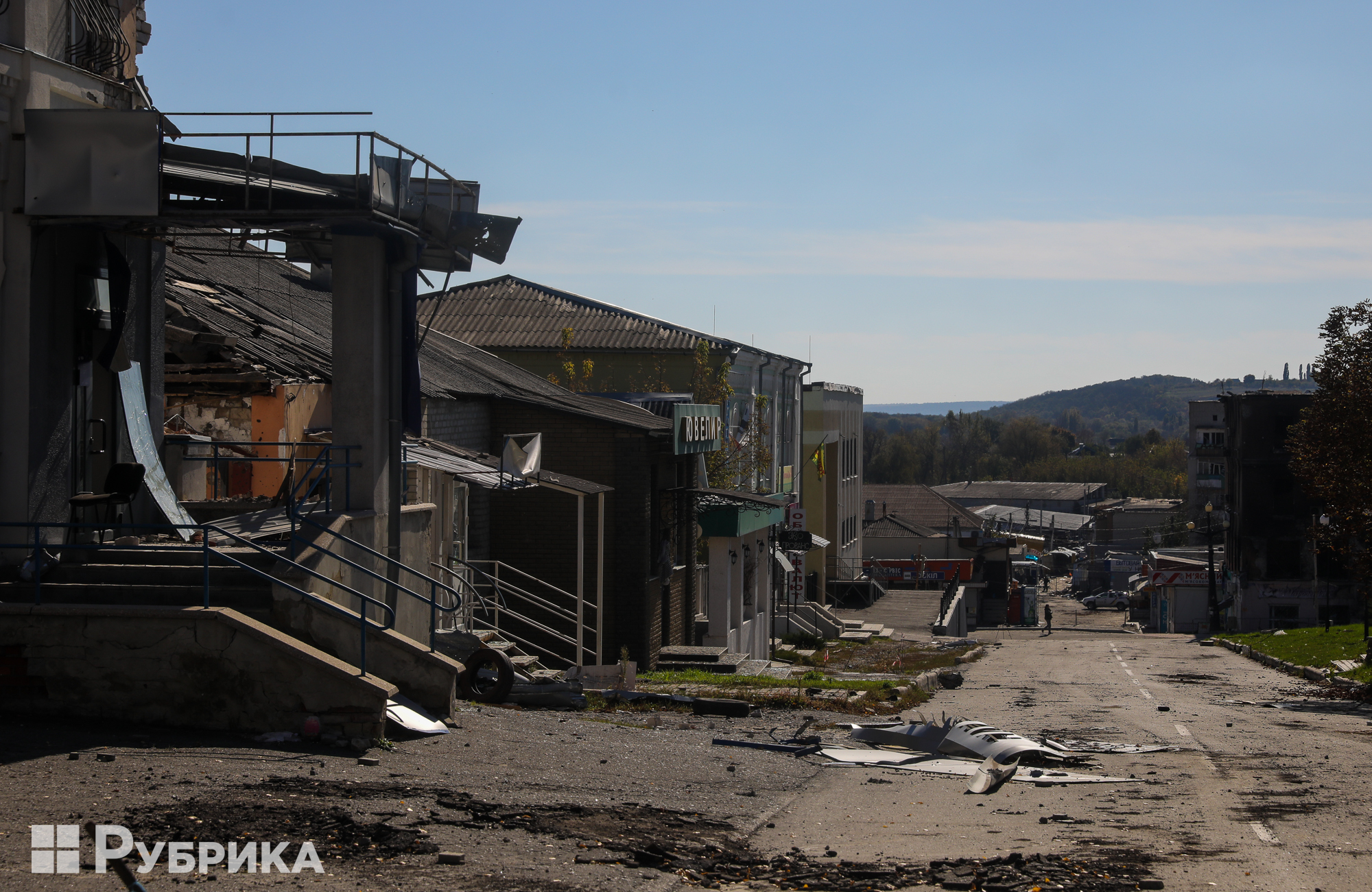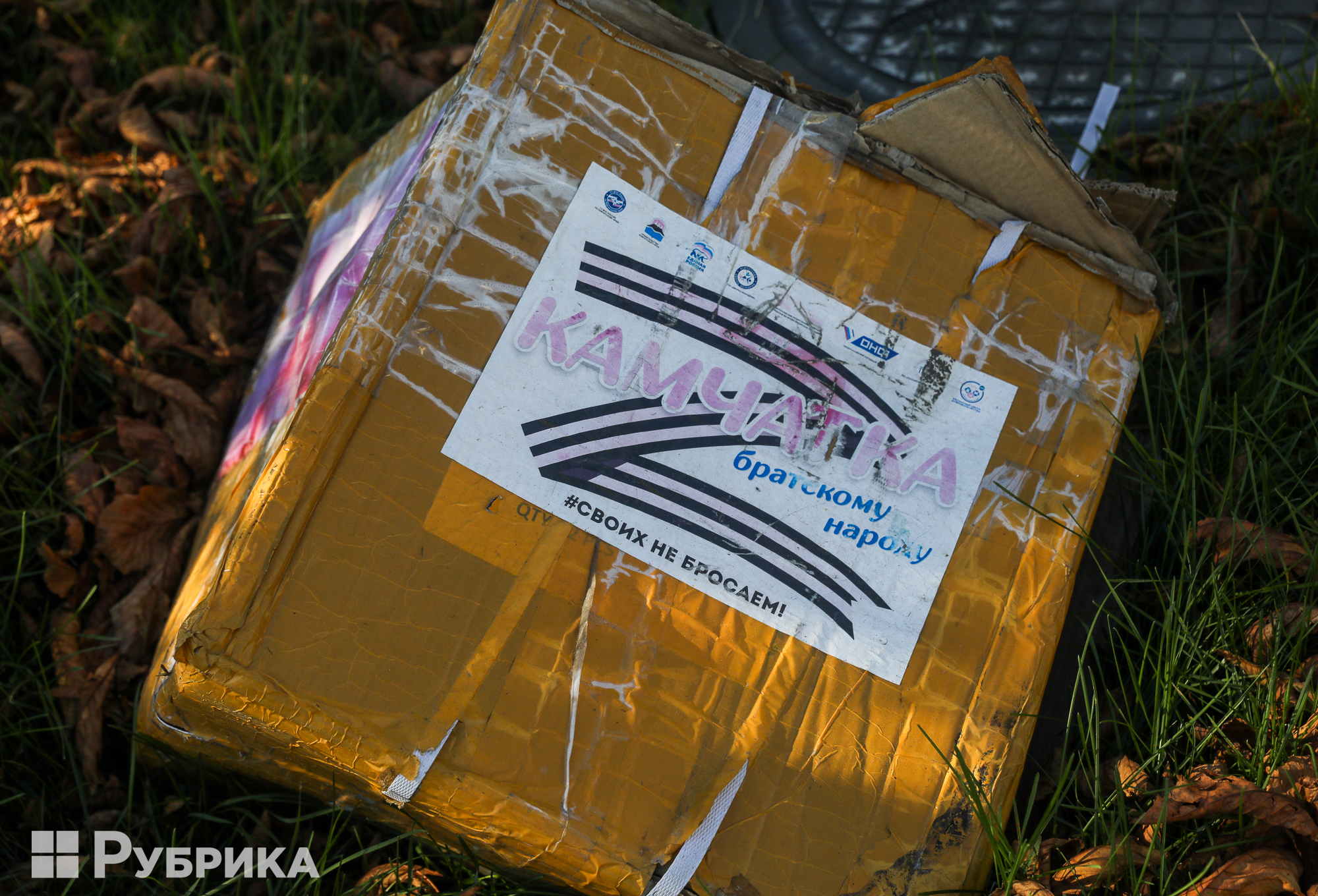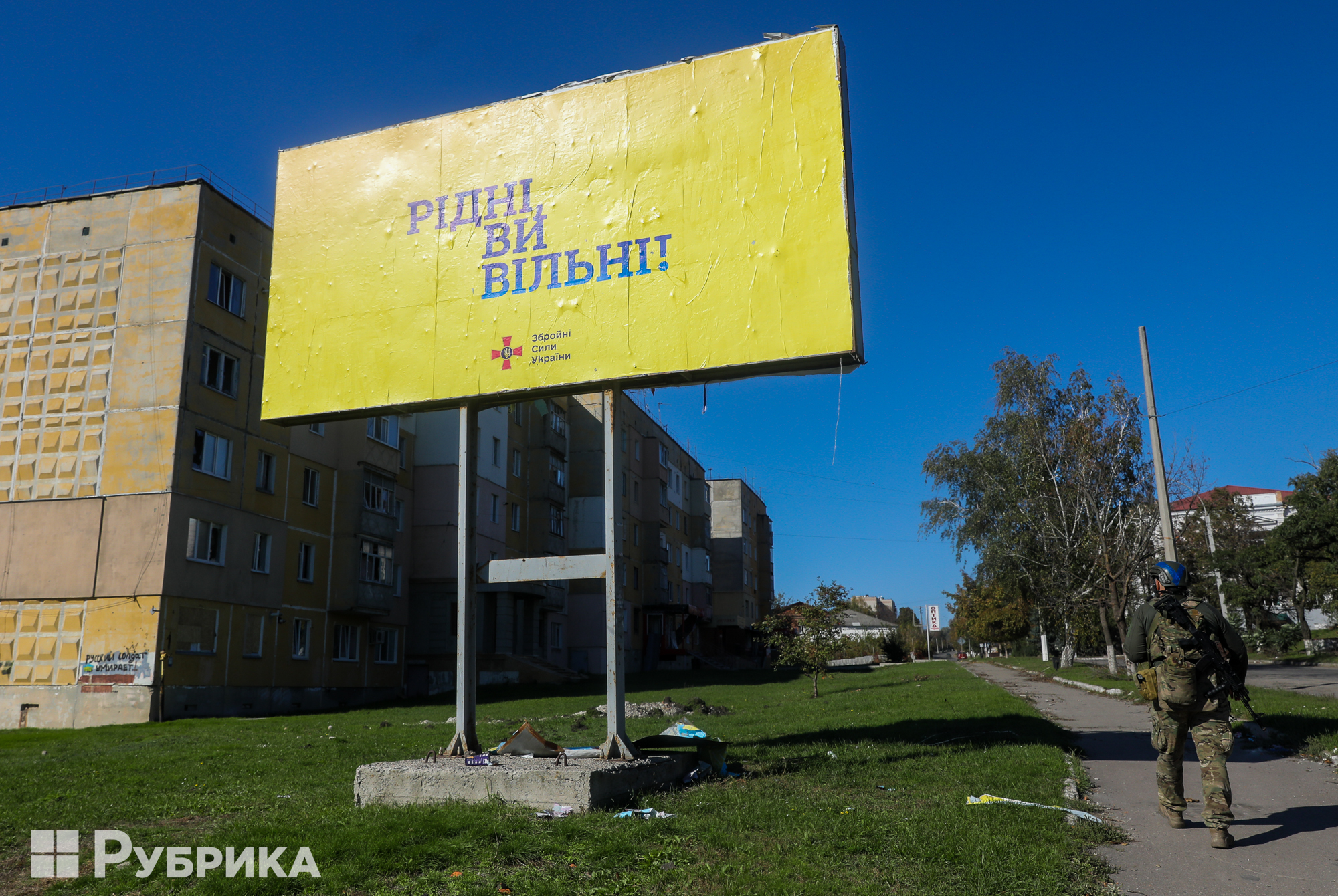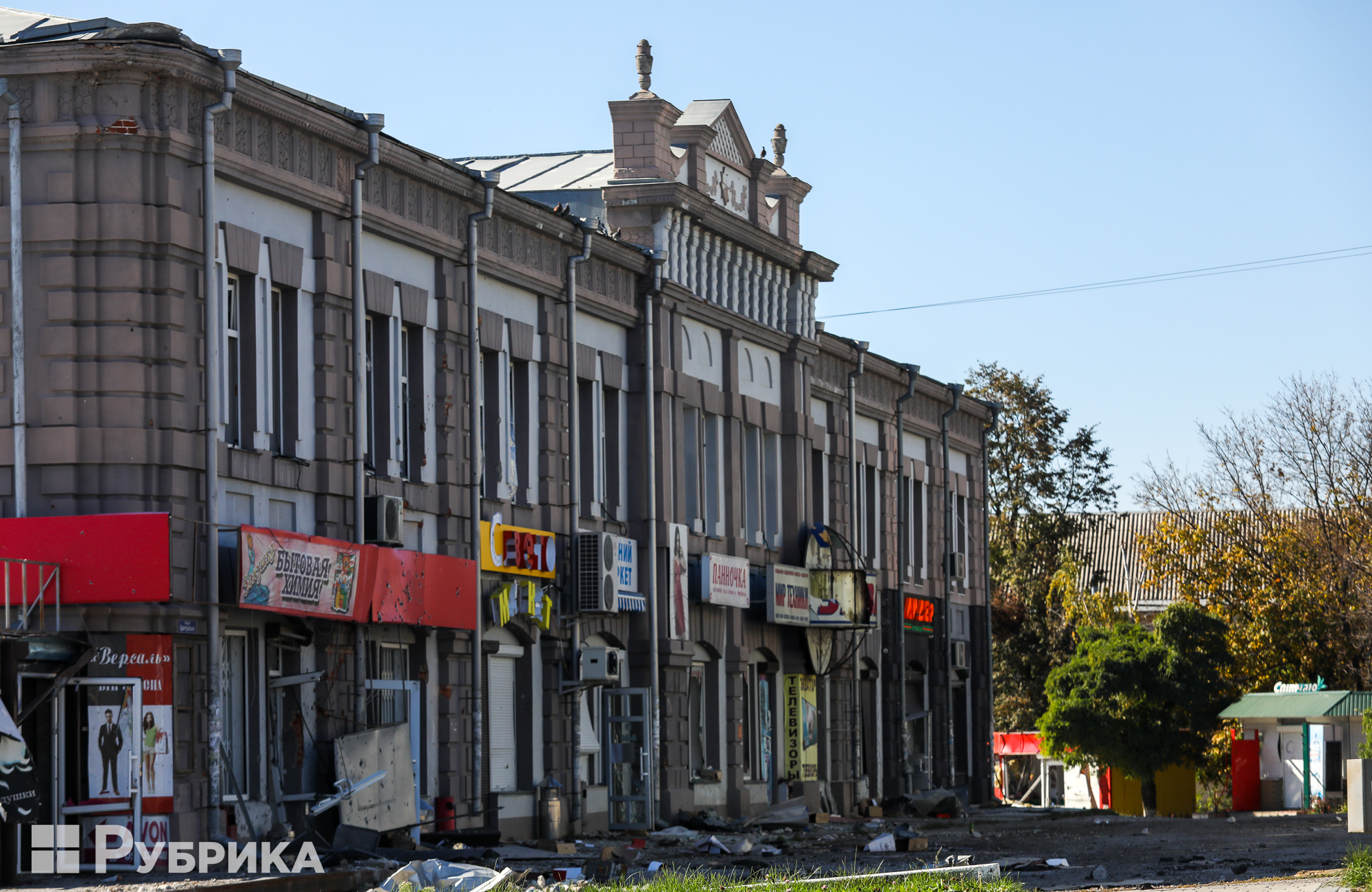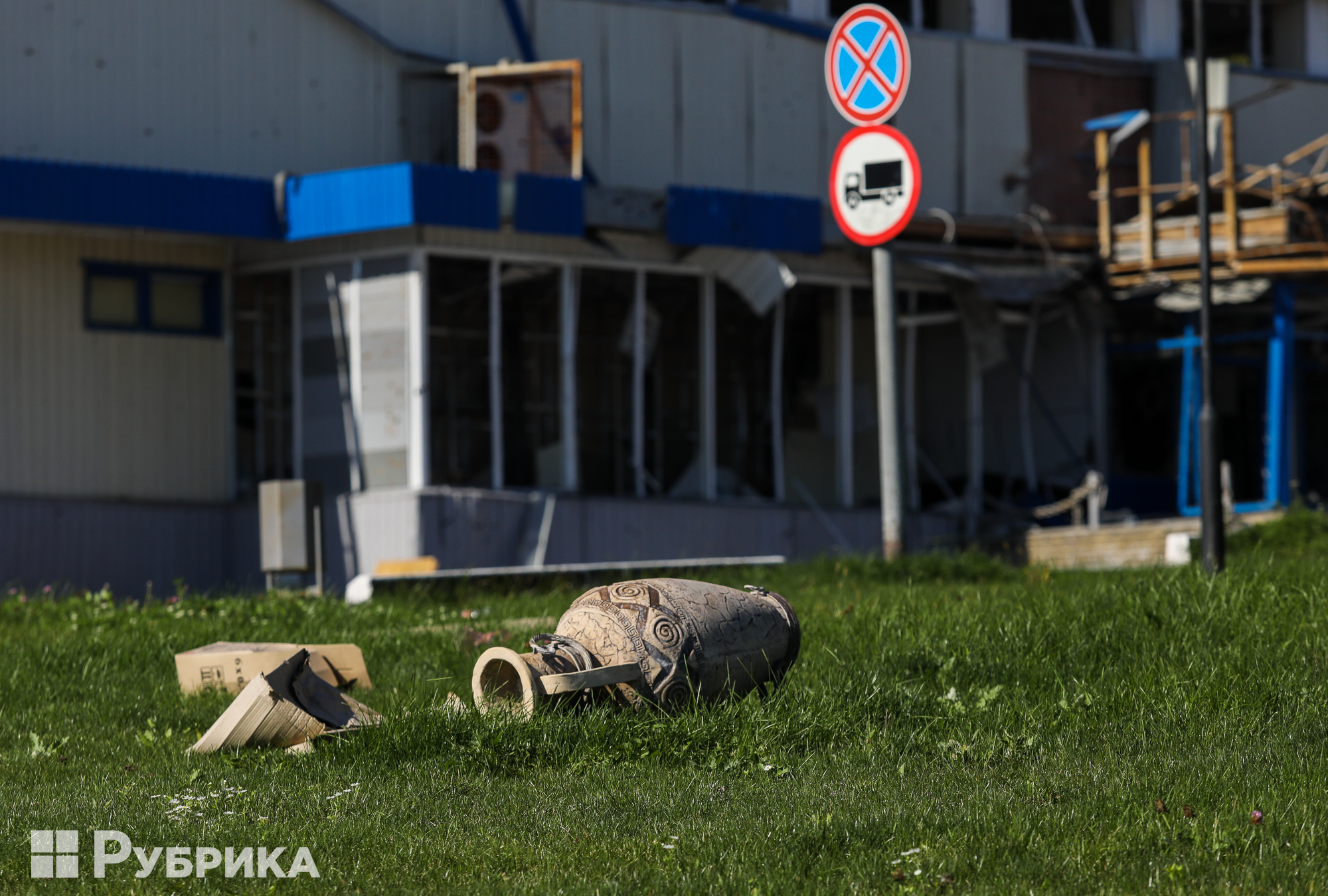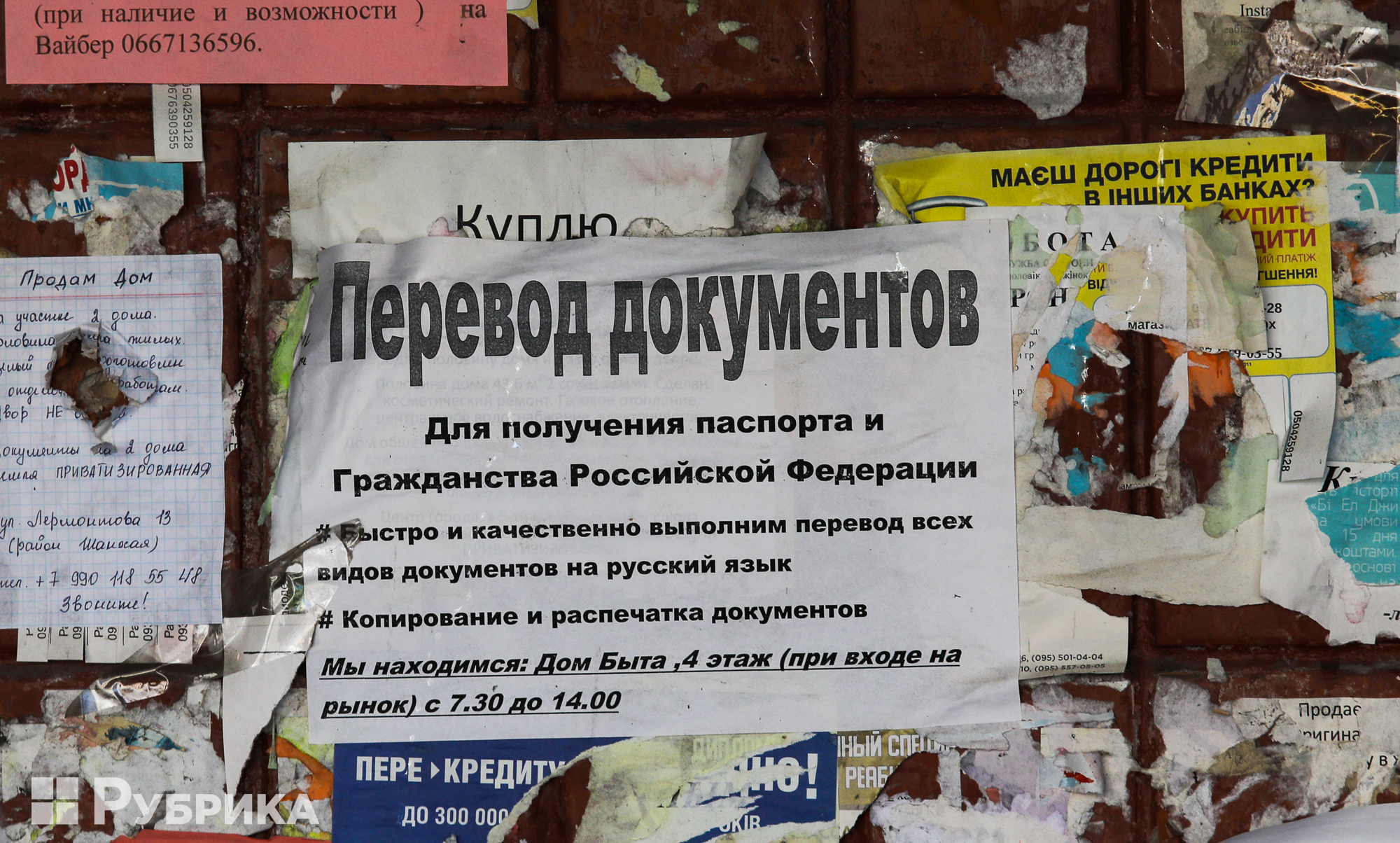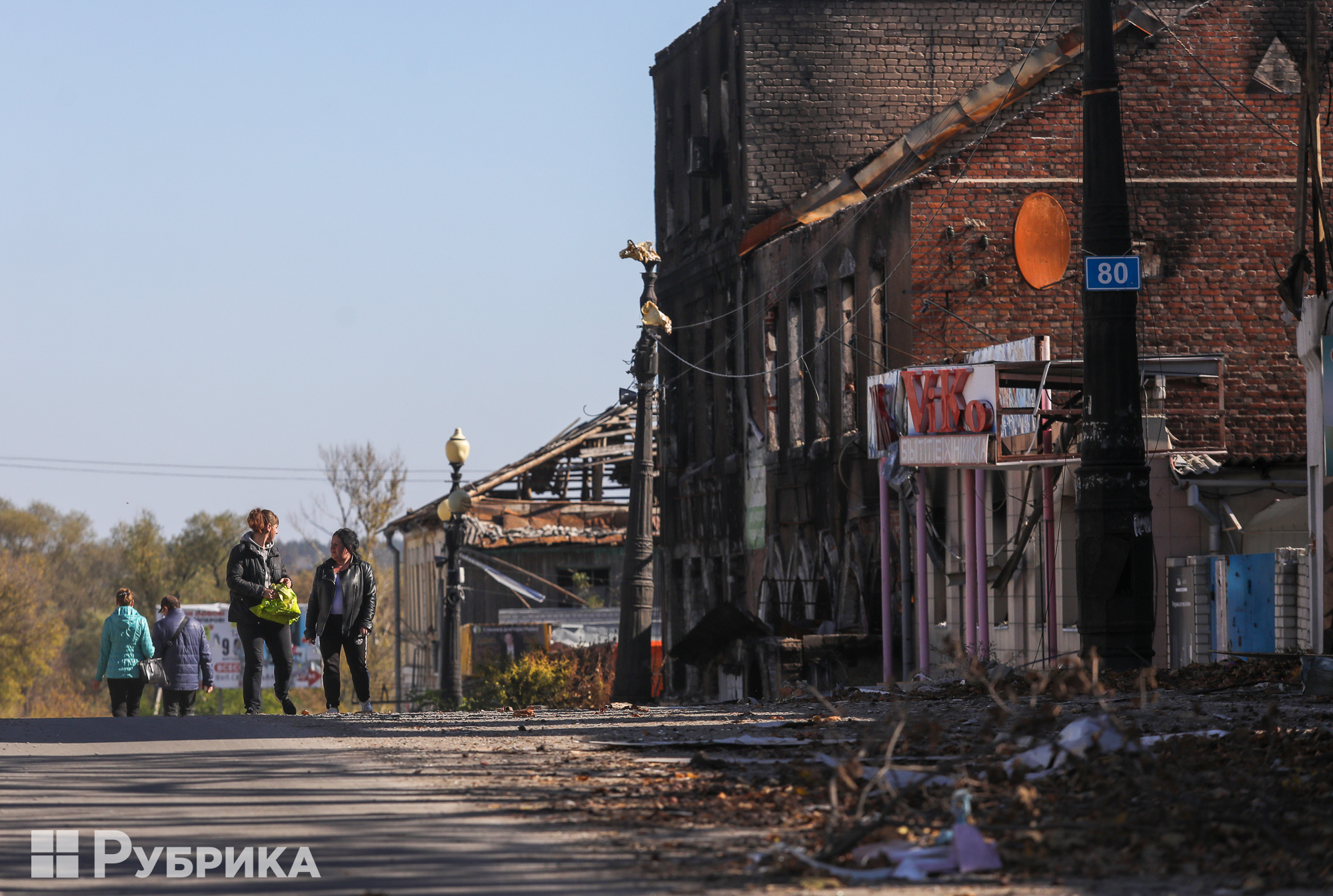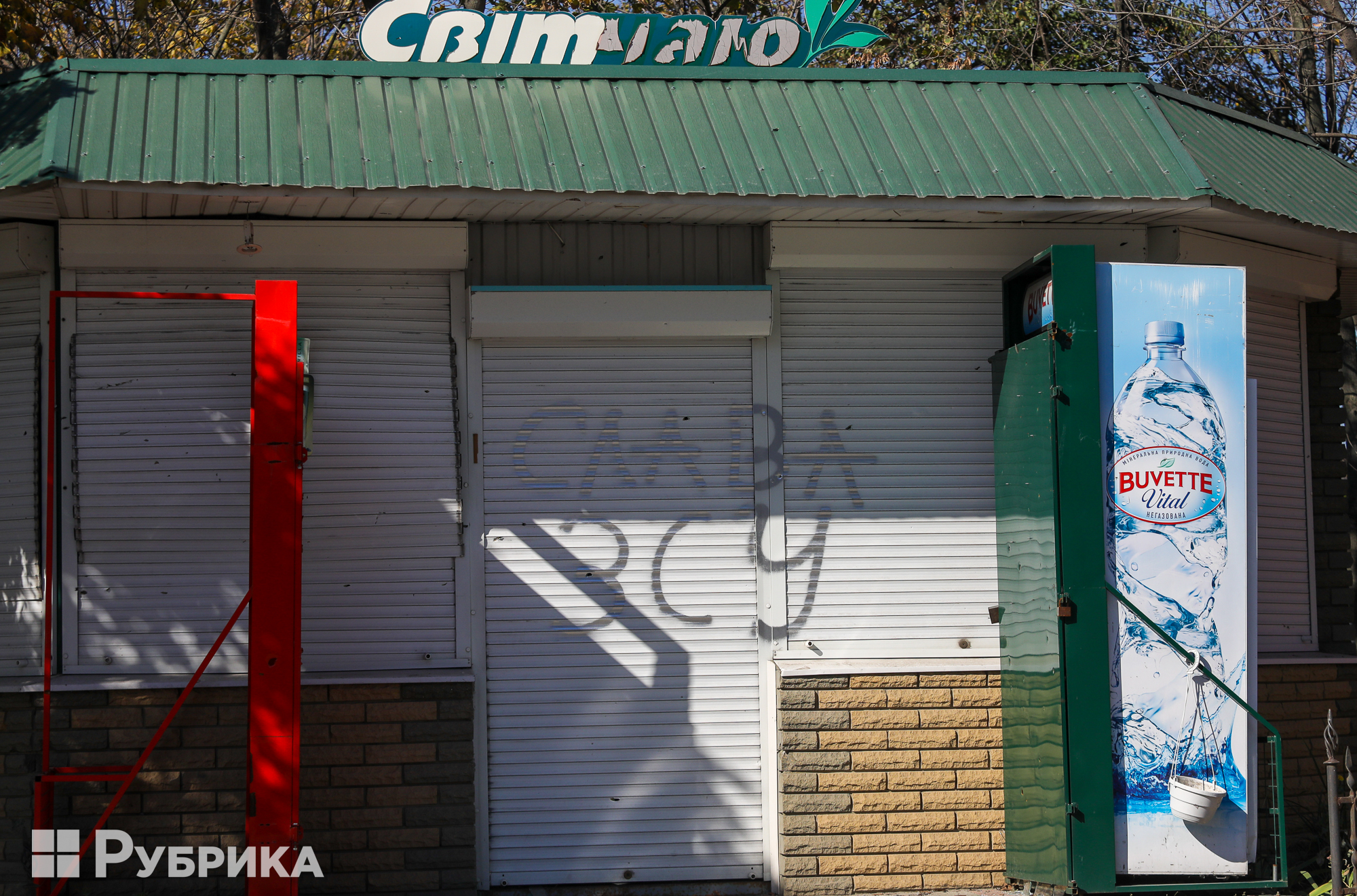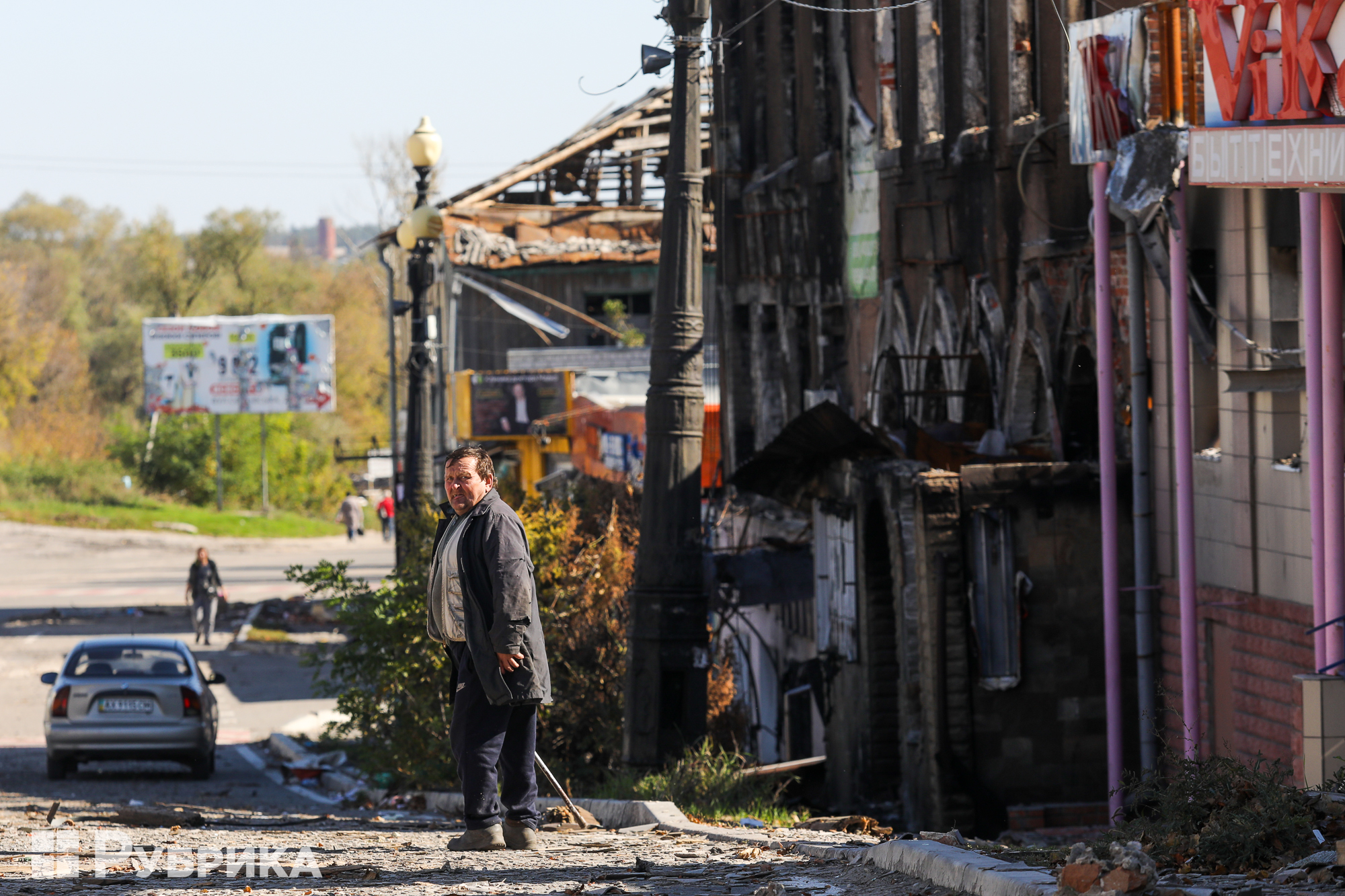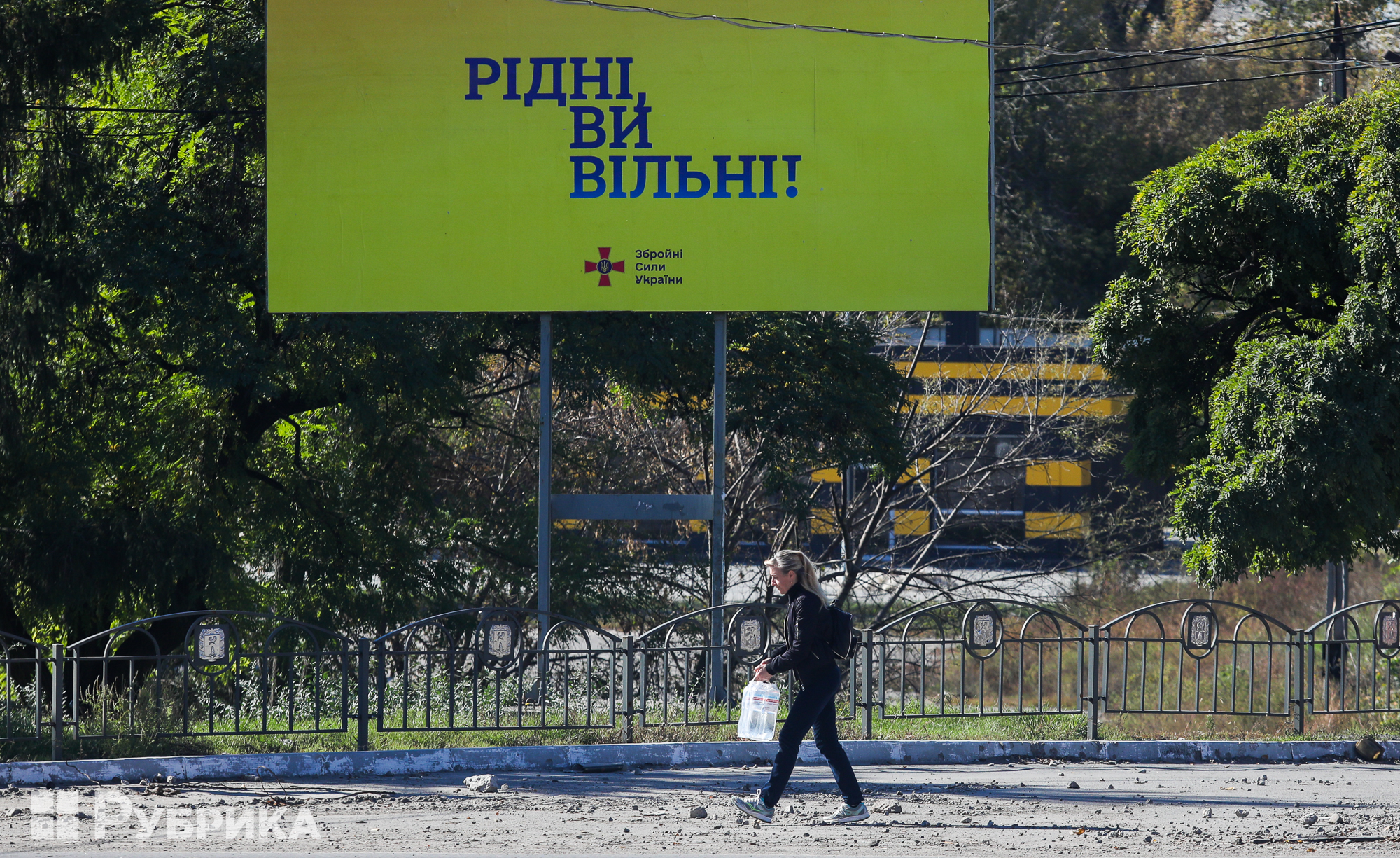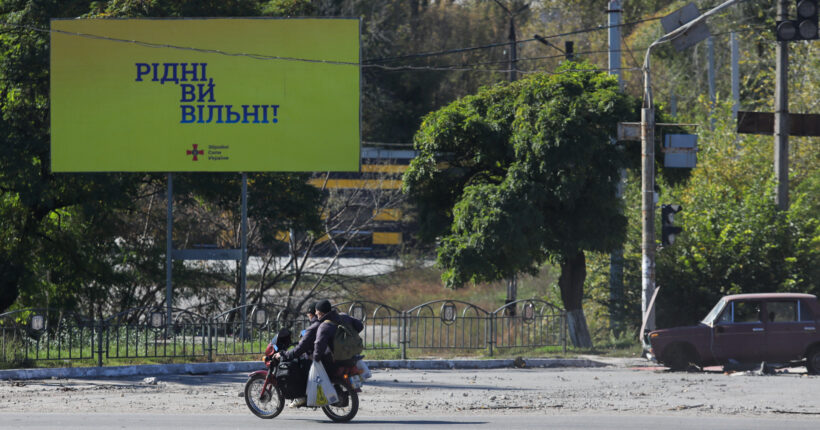
Photo: Rubryka
Dozens of people leave Kupyansk and surrounding villages daily. There is no gas, water, or electricity here. Mobile communication almost does not work. The sounds of artillery fire are just ordinary sounds of the city. Not far away, a few kilometers away, battles are taking place — the Armed Forces of Ukraine are advancing in the direction of Kreminna and Svatovo. There are missile strikes in the city almost every day. Sometimes you're lucky — the russians "make a mistake," and then you can see a tornado rip in the middle of the road.
Starlinks and Zhiguli
Unfortunately, the city is heavily destroyed. The center of Kupyansk was the most affected. Broken windows, walls, broken roofs. Very rarely, a resident passes by – more often, they go by bicycle. Cars are either military or volunteer. If you see old Zhiguli, most likely, residents of the surrounding villages are evacuating to Kharkiv. But not everyone is lucky enough to have a car or the opportunity to take a ride with someone. Then people walk and drag things along.
However, there is some life in the city, and many people do not want to leave. The collection points are markets. Nova Poshta came to one of them today. They brought the Starlink with them, turned on the generator, and connected the extension cords. Several dozen people are charging their phones, talking with relatives, and reading the news. Food, drinks, and vegetables are sold nearby. Trade is not very successful – people have little money, there is no work during the occupation, and it is impossible to get a pension. Those who had bank cards had the opportunity to "withdraw cash" for interest. These percentages varied from 10 to 40. Prices during the occupation were, on average, three times higher than usual.
Volunteers also work here. For example, the NGO "Ecotime" from the village of Orlovshchyna in the Dnipropetrovsk region. Only today, a truck from Dnipro brought the necessary food and hygiene products. The fund has been operating for a long time — initially only in Kharkiv, but now liberated cities are being added.
The State Emergency Service brought water to a nearby street, for which there was a queue. It is already the second car for today — the first eight tons were poured in the morning. But the second one is almost over already.
Occupation marks
Advertisements from the time of occupation remain at transport stops – how to get a russian passport, translations into russian, and enrollment in schools. There are also ordinary ads: sale and purchase, but all with russian phone numbers. From the advertisements, it is clear that life here was poor. Locals say they tried not to leave the house.
Serhii, Tanya, and Lena are cooking food on the fire. They say that the occupiers drank a lot, especially the "lugandons (scornful name of lnr residents – ed.)" They stole businesses and took away cars. Traditionally, they were surprised by the prosperous life of many locals.
Then we move to the left bank and cross the destroyed bridge over the Oskil River. Only a narrow footpath remained intact here. Ambulances and volunteers are on duty in front of the bridge, meeting those who walk.
Locals are catching a mobile phone signal on the bridge over the railway.
Behind the bridge, we see even more traces of the war — a destroyed industrial zone and a lot of damaged russian equipment, which is still difficult to remove. Nearby are the corpses of russian soldiers, which stink and rot. They have not been removed yet, either.
We go further – the village of Kucherivka. Here, the stop, still painted in Aquafresh colors, has not been repainted. But life and power are already returning to the city. Soon there will be light, but most likely, they will not have time to fix the gas before winter, so the winter will be difficult.
The road past Izyum to the east is in continuous repair work. Life is returning everywhere in Kharkiv Oblast — it will also return to Kupyansk.
See Rubryka's photos from the liberated city in the slide:


